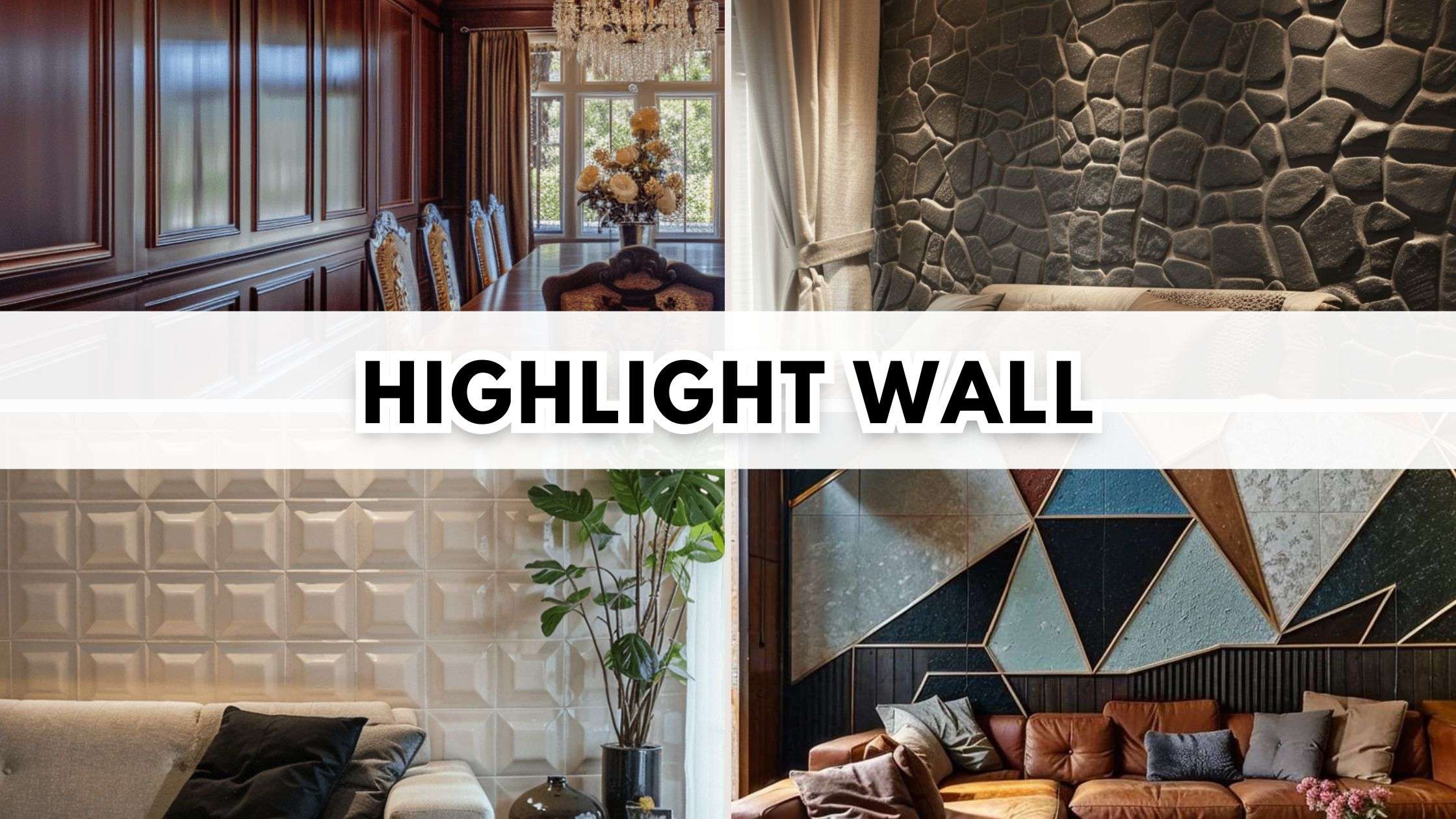Breathe new life into your home with fresh wall paneling ideas.
Dive into an various styles that mirror your unique taste, from chic modern designs to traditional wooden classics.
Focusing on key points, such as:
✔️ Diverse Styles to Suit Every Taste
From the modern elegance of Geometric Designs🔶 to the timeless charm of Classic Shiplap, there’s a perfect style for your space.
✔️ Room-Specific Inspirations 🏠 Learn how to create a cozy Bedroom, enhance your Living Room, or add functionality to your Bathroom with tailored paneling tips.
✔️ Budget-Friendly to Luxurious Options
From affordable MDF 🪵 to premium Reclaimed Wood and Metal Panels, and save money with DIY tips.
1. Modern Geometric Designs
Turn your walls into artistic masterpieces with cutting-edge geometric designs. 🔷
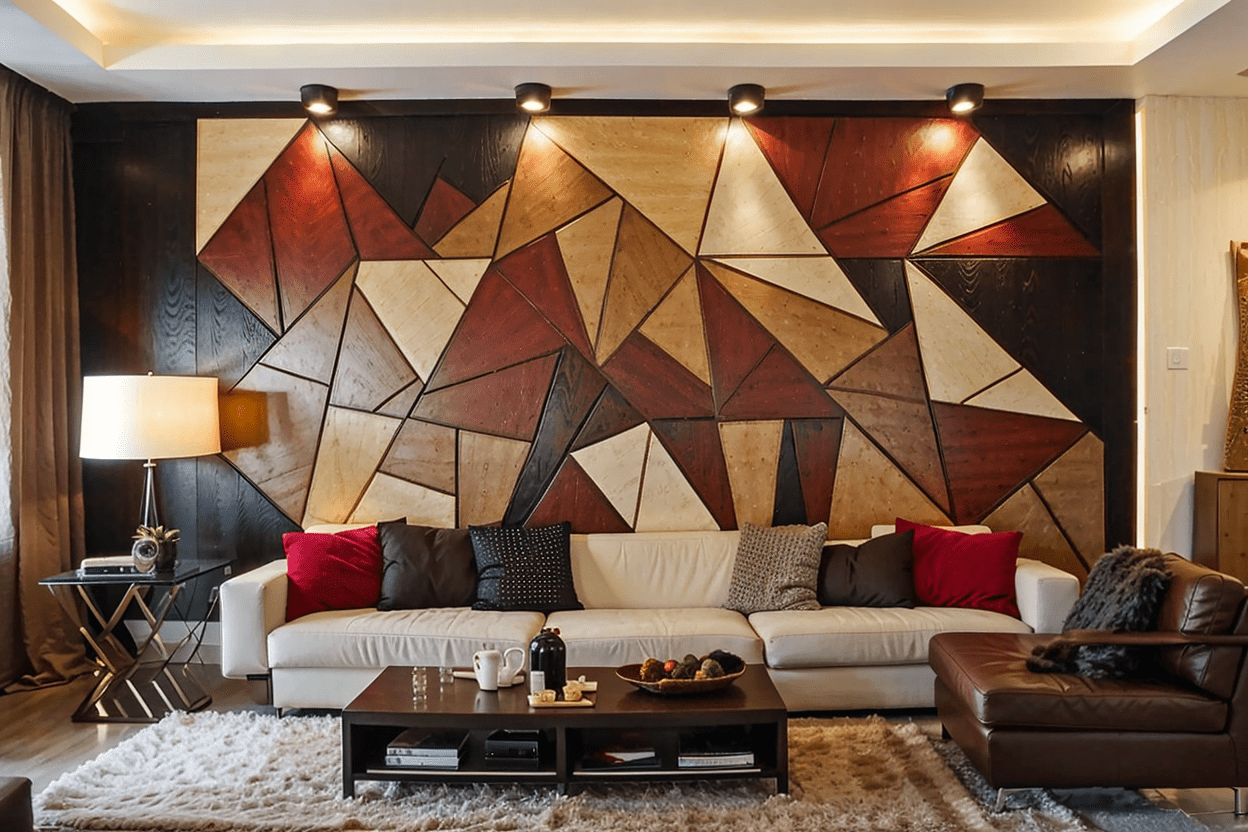
Maybee you want to create a striking focal point or simply add some flair, these panels are the perfect choice for any space.
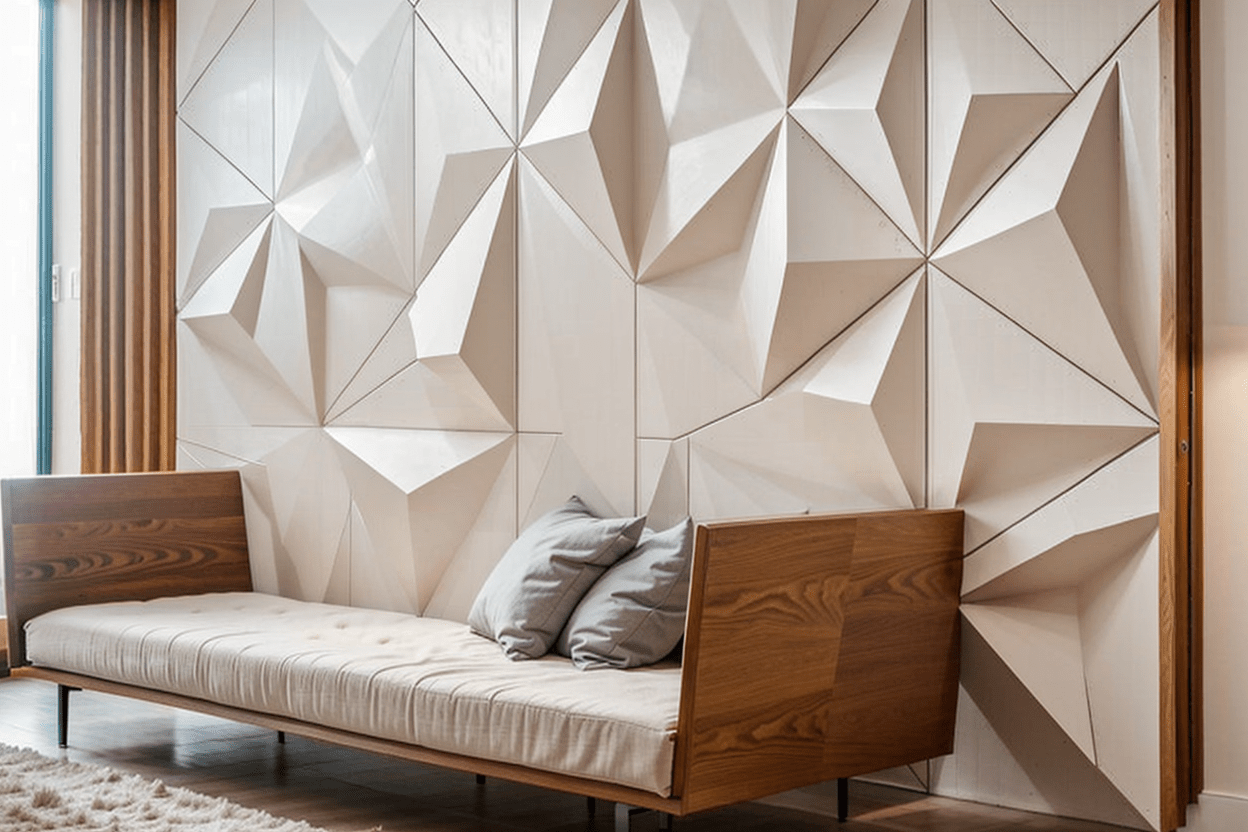
Customizable to fit your specific dimensions, geometric wall panels offer a unique and captivating pattern.
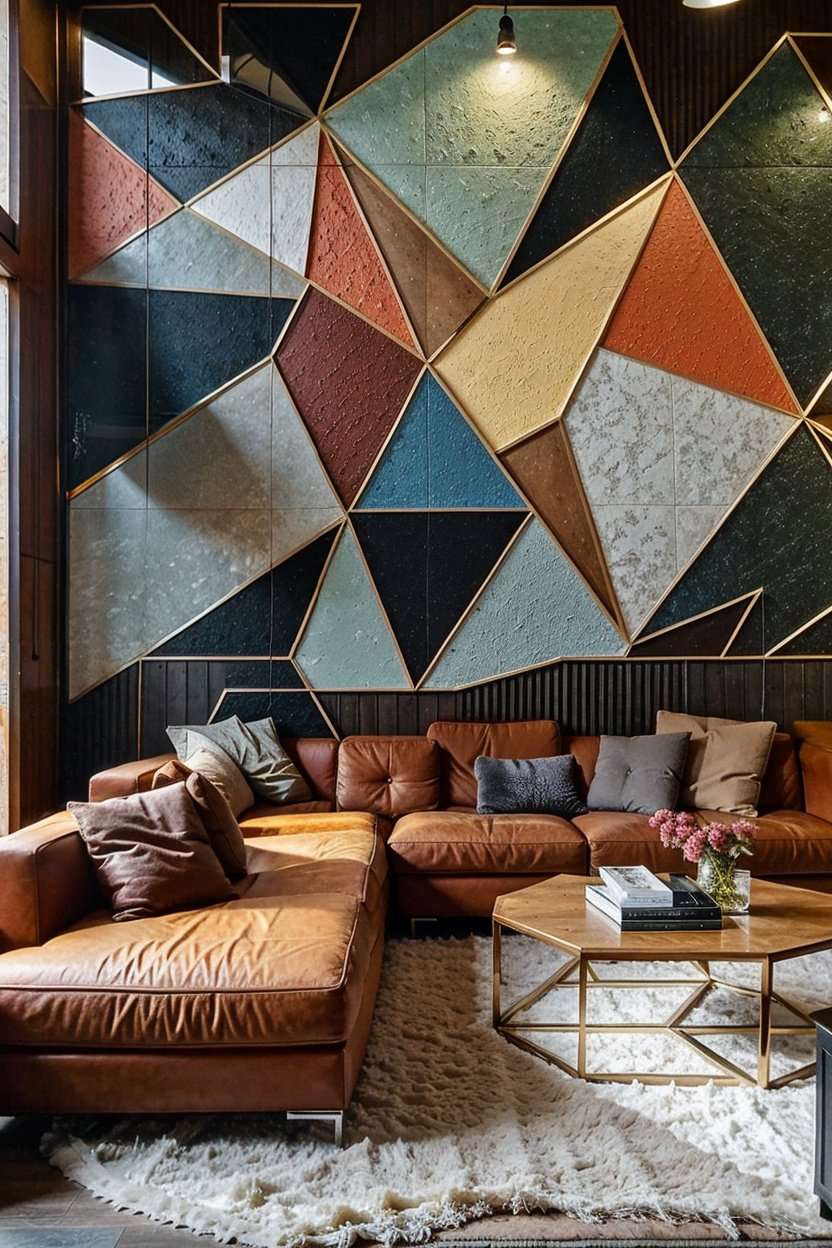
Inject bold colors for a lively atmosphere or go for soft pastels to achieve a calmer ambiance.
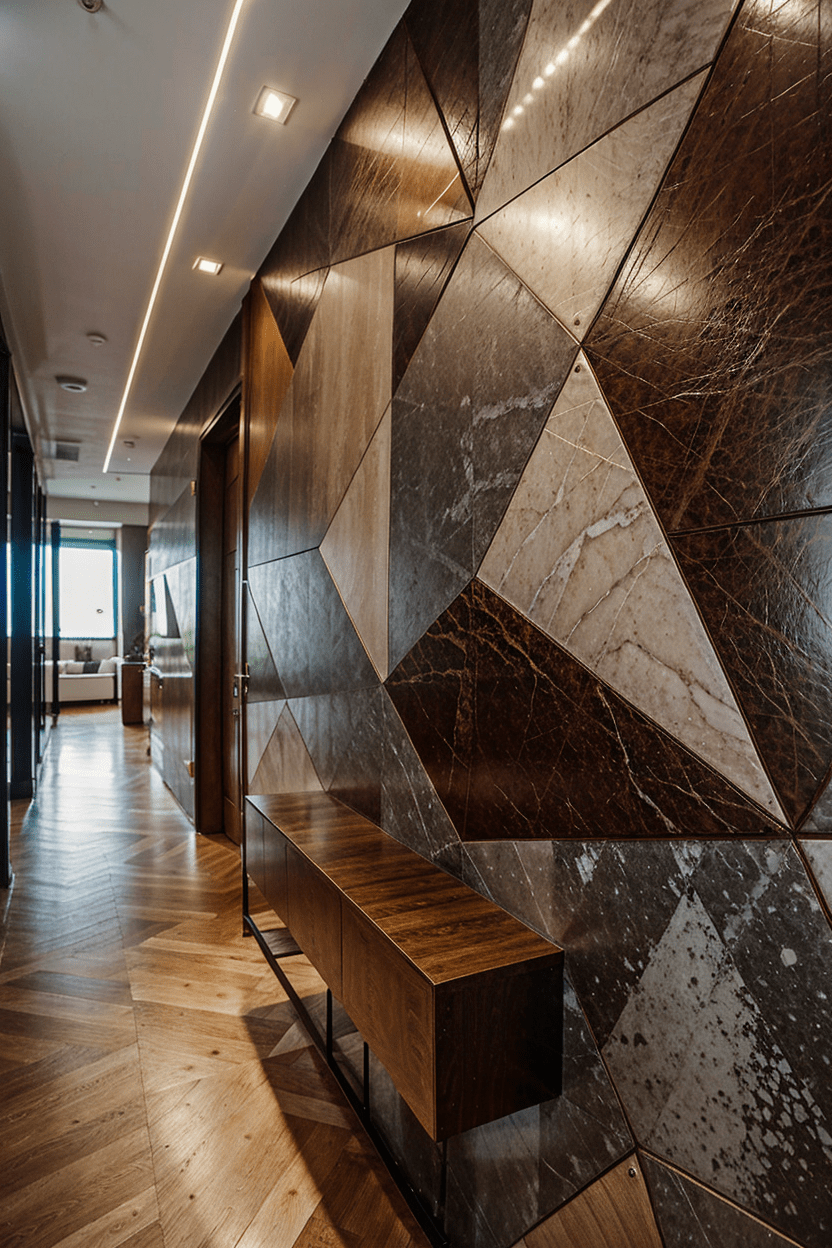
2. Decorative Tile Effect Panels
Looking for something classy and elaborate?
Decorative tile effect wall panels have you covered.
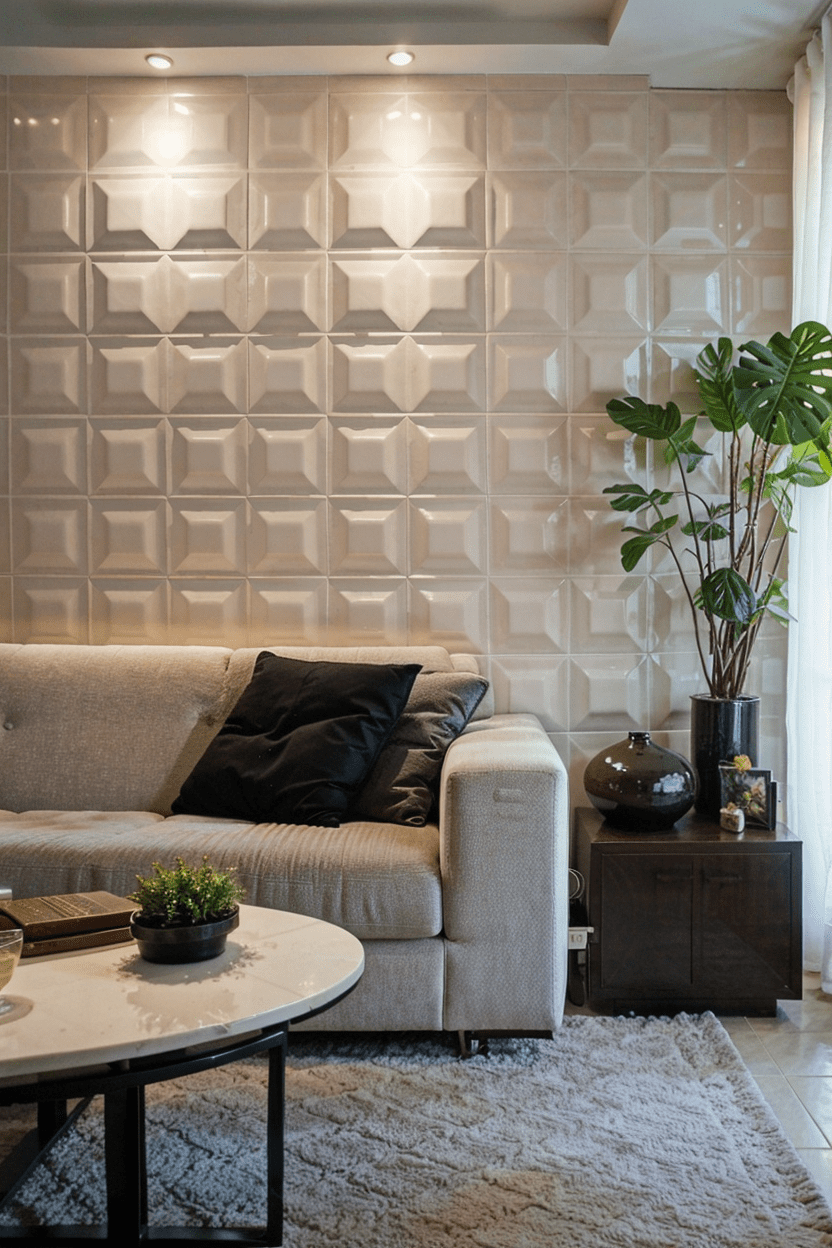
These panels replicate the look of tile, providing a stylish and low-maintenance option.
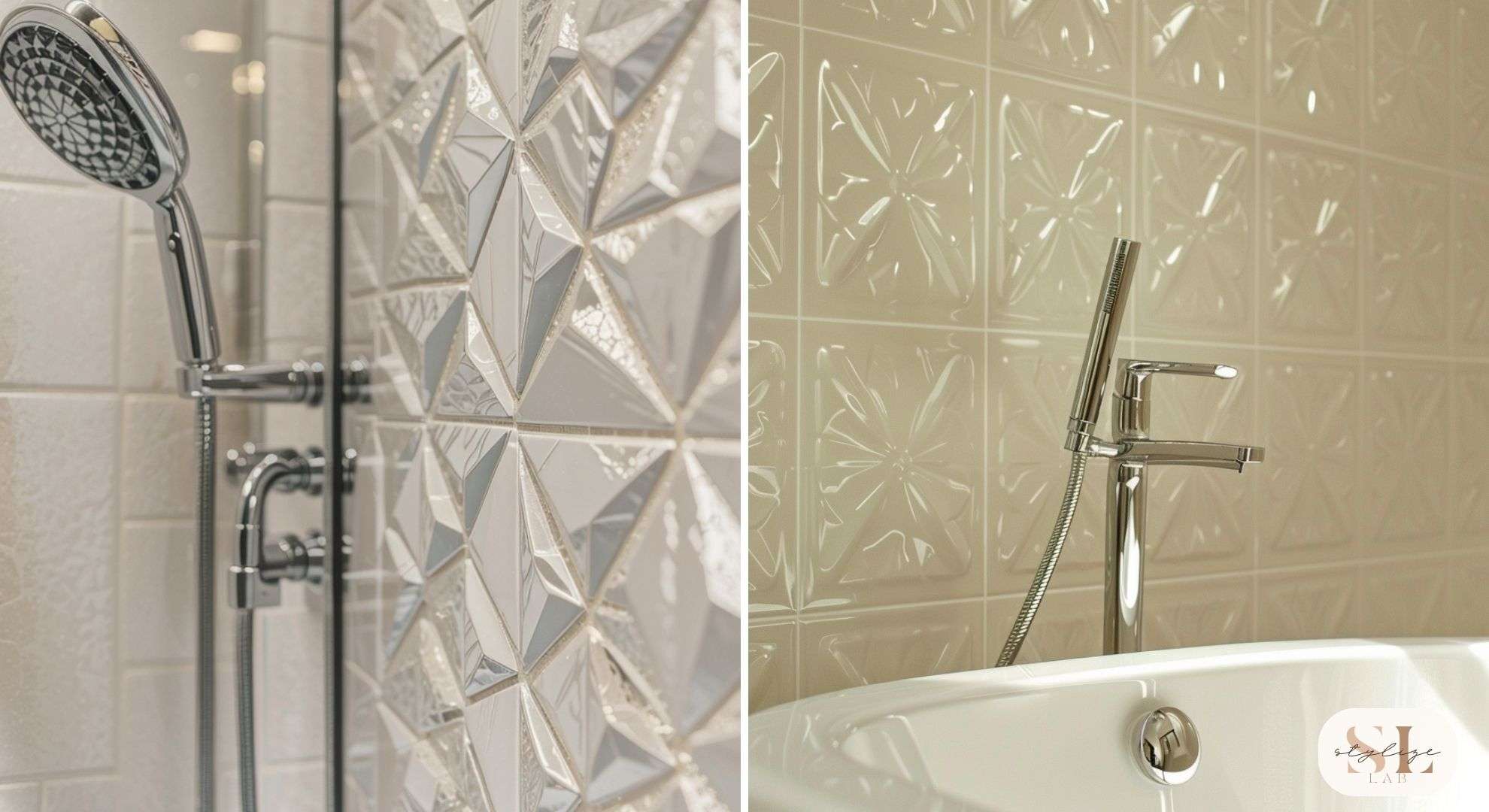
Flawless for bathrooms, kitchens, or any room you want that tiled appearance without the extra work.
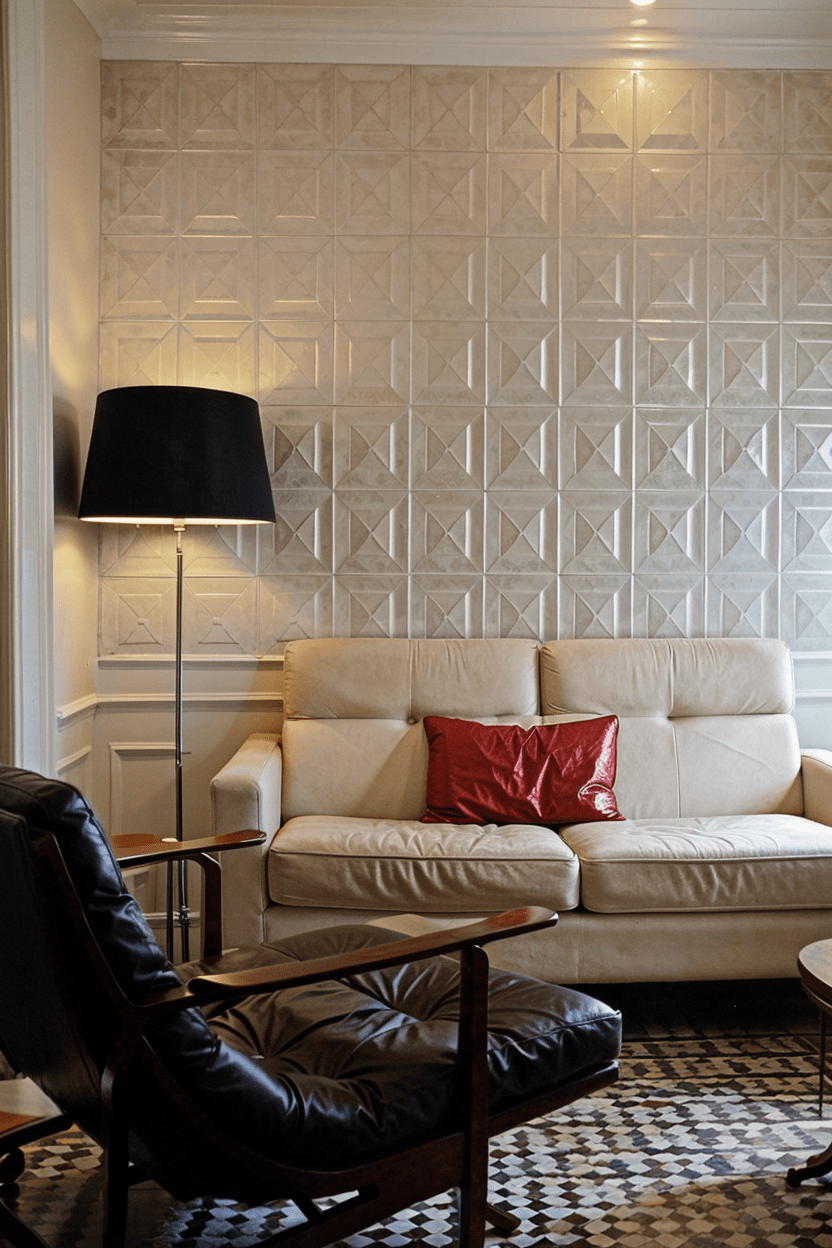
They come in a range of designs and colors, so you can easily find a match for your decoration.
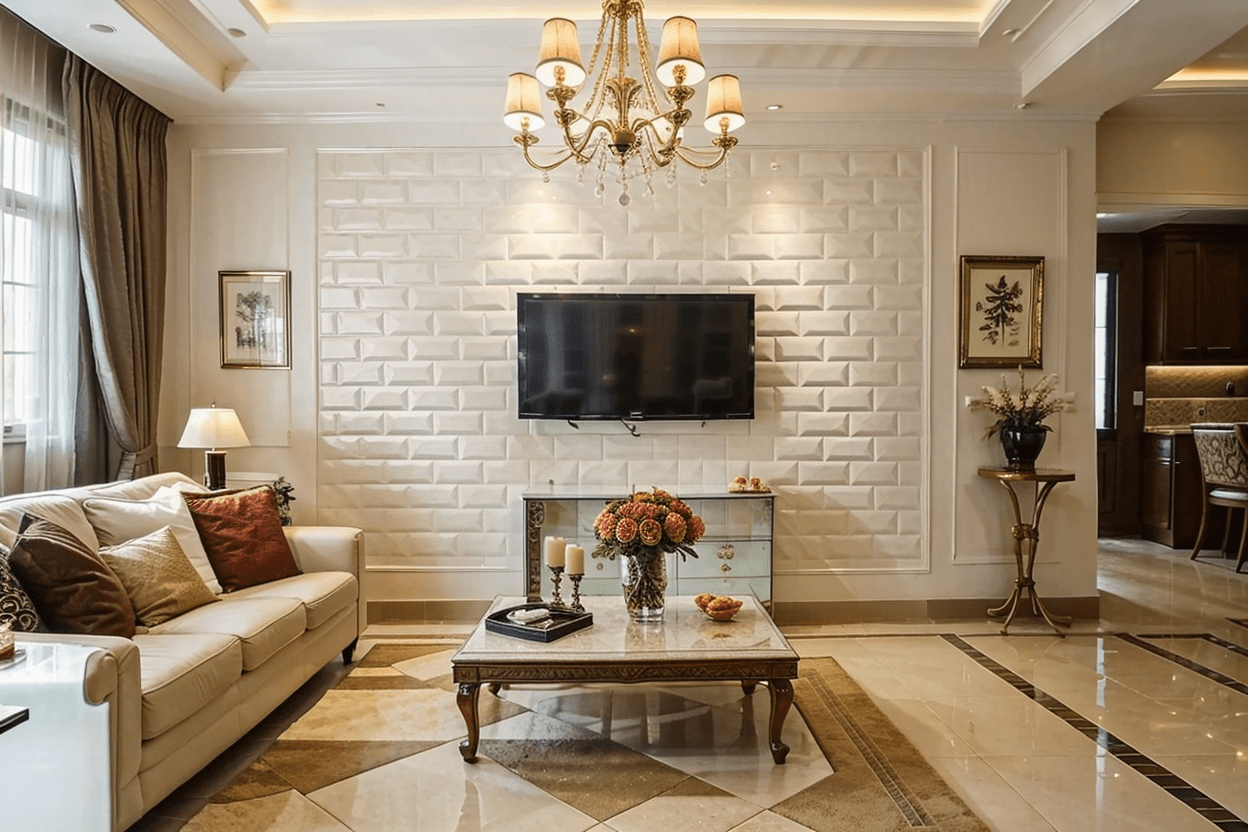
3. Luxurious Wainscoting
Wainscoting gives any room a classy and enduring touch.
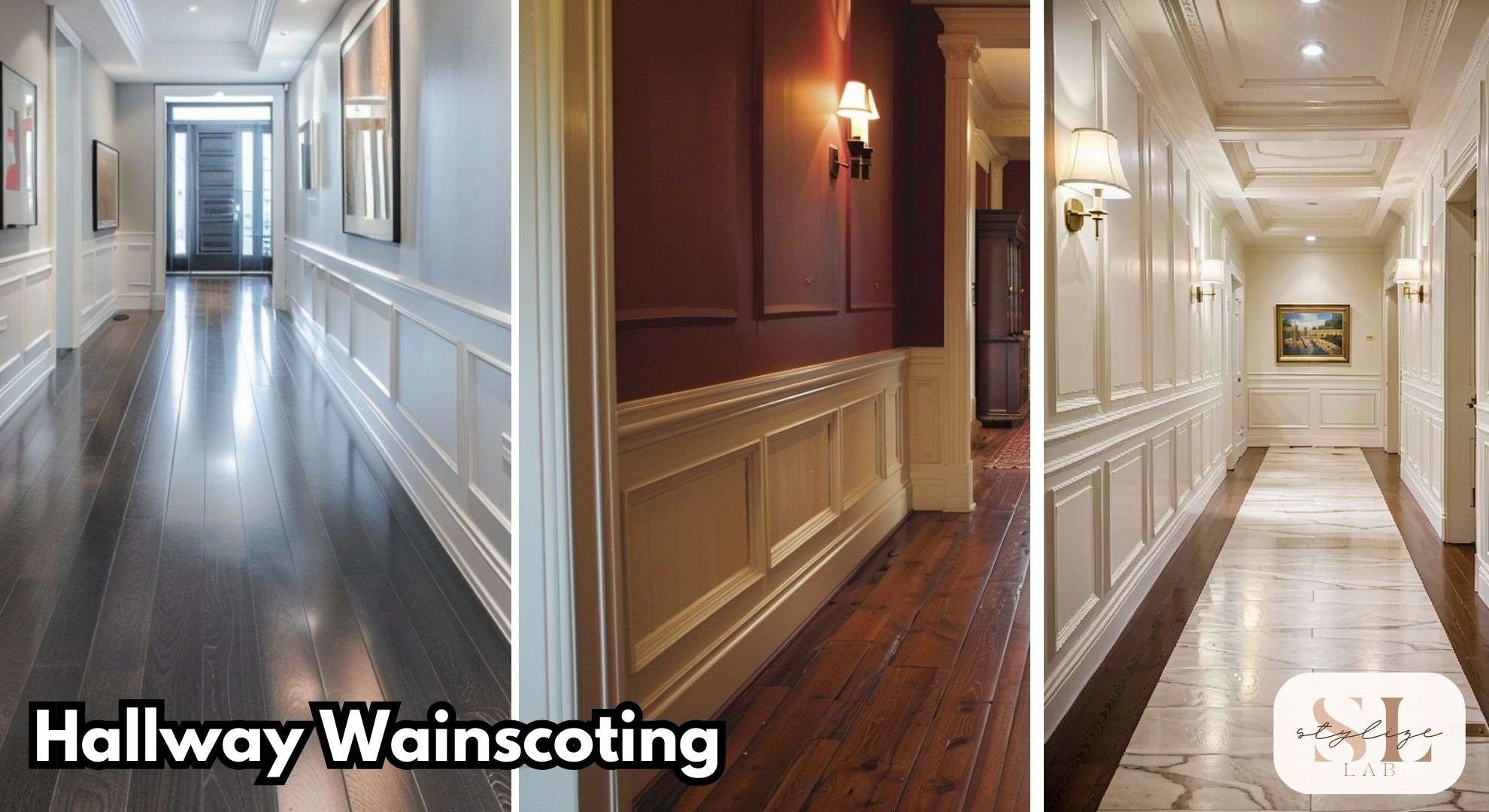
Typically positioned on the lower portion of the walls, these detailed panels bring an undeniable sense of luxury and depth.
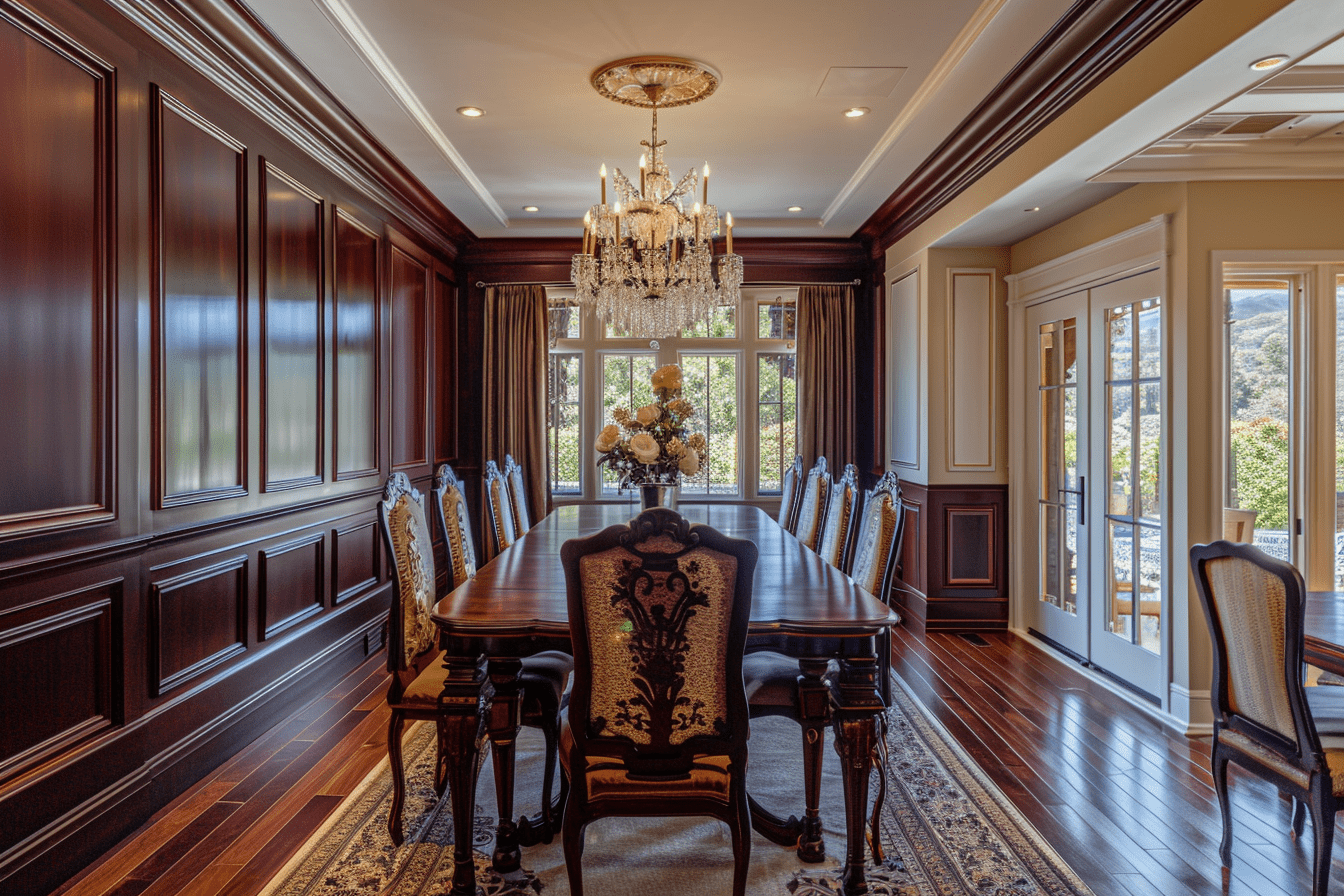
They are an excellent choice for dining rooms, living rooms, and hallways, adding timeless sophistication to your spaces.
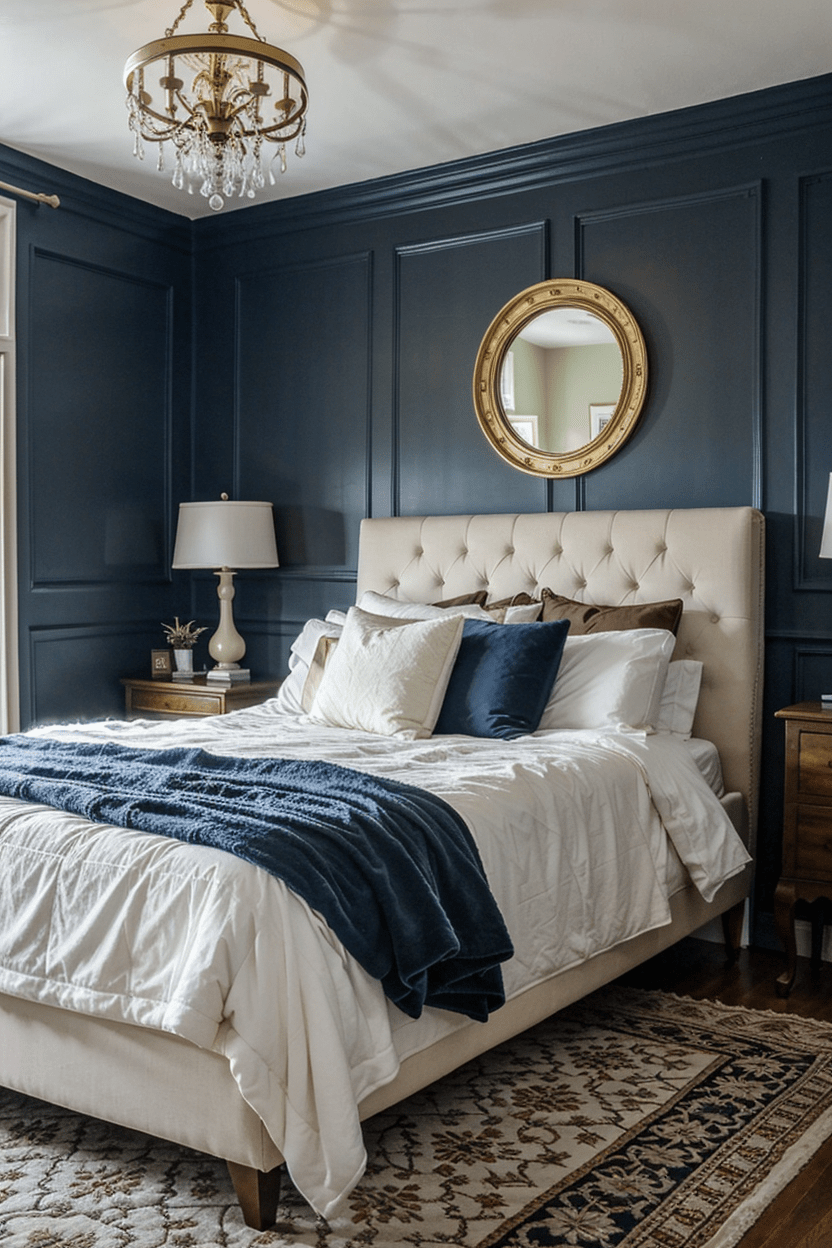
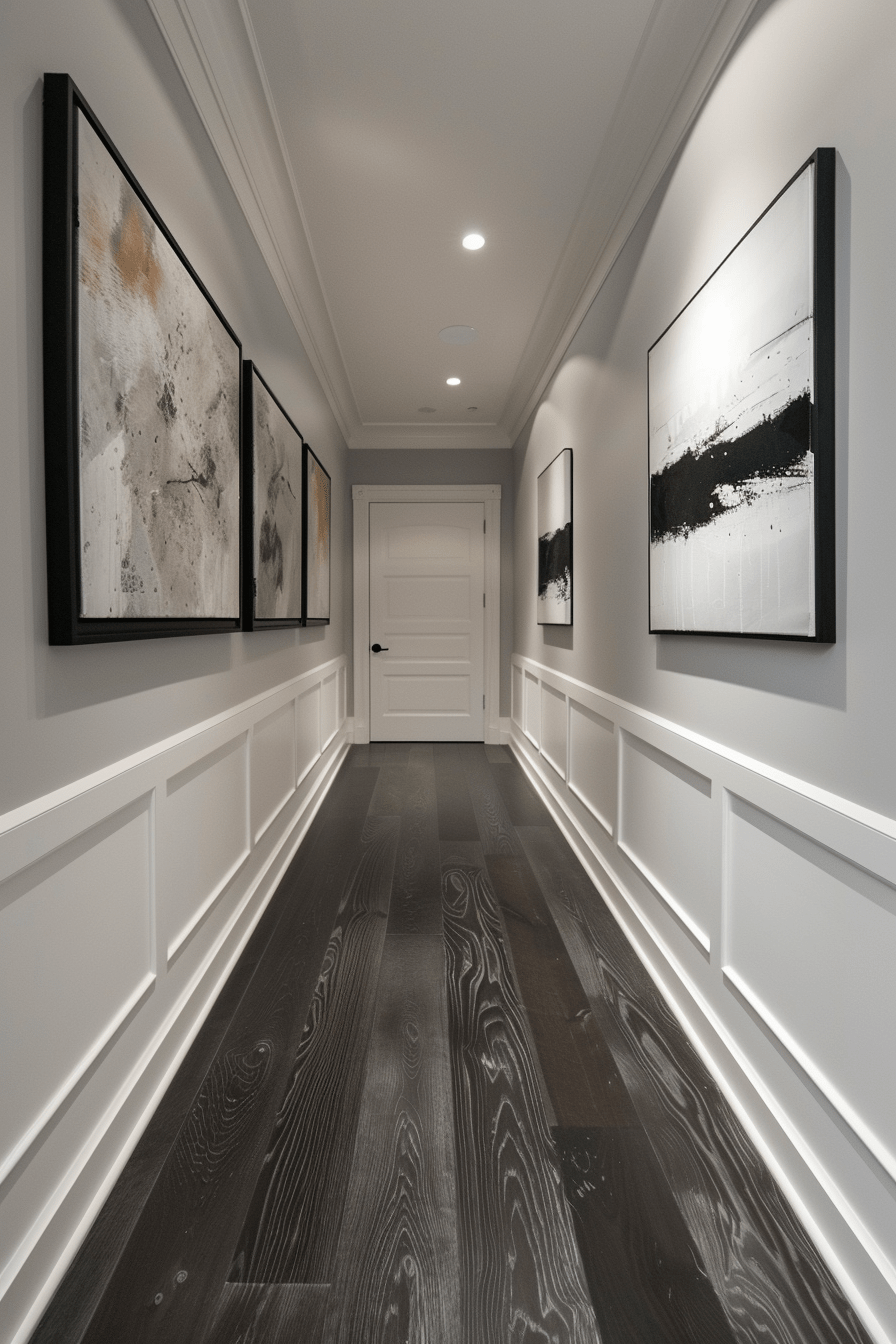
For a more dramatic effect, consider using contrasting colors for the upper and lower sections of the walls.
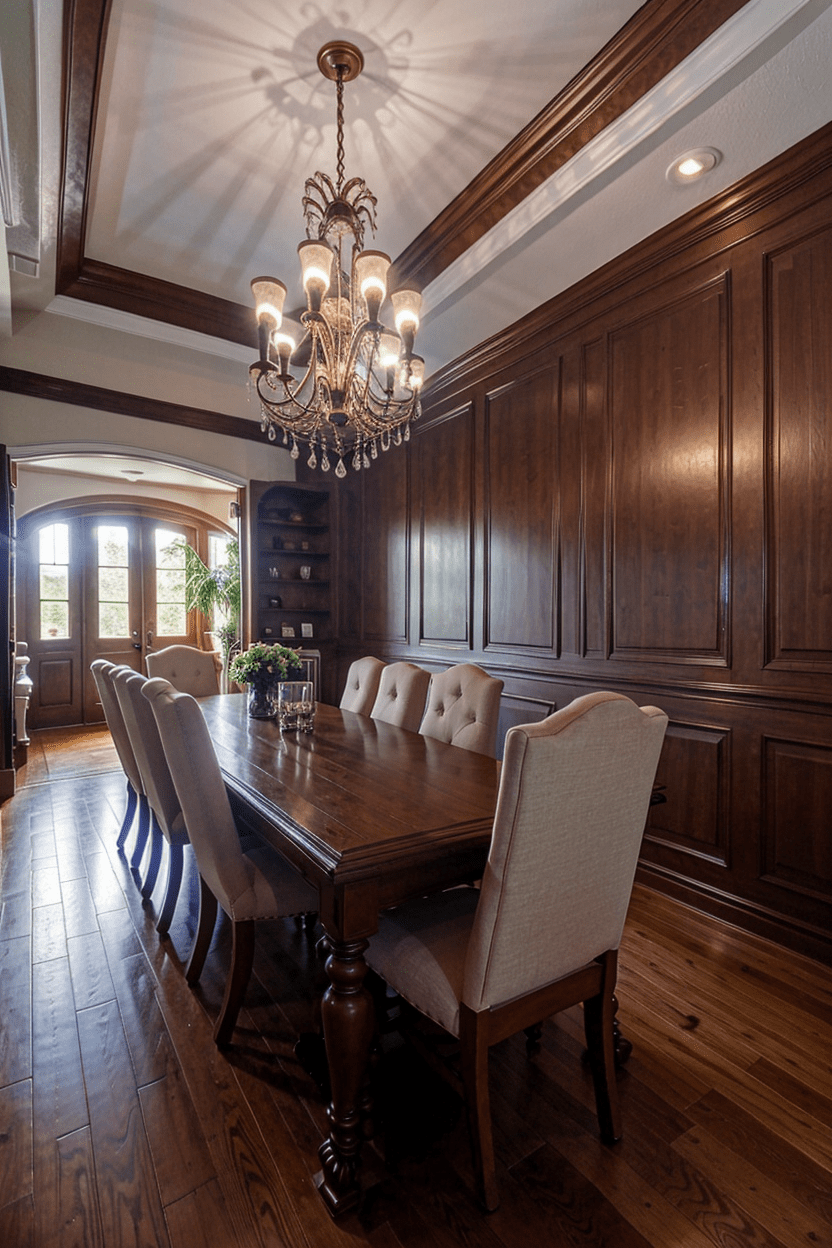
4. 3D Textured Panels
Boost your space with 3D textured wall panels, adding both dimension and charm to your walls.
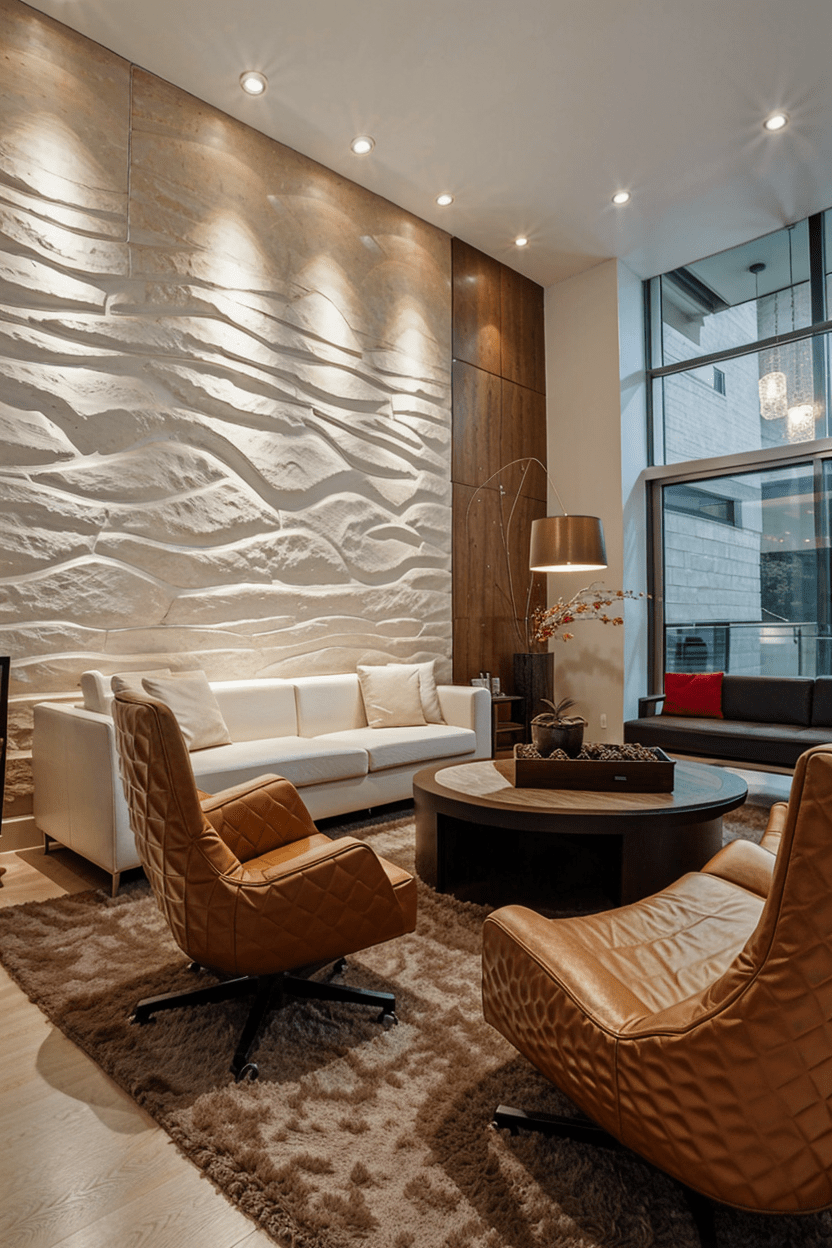
Perfect for infusing a modern, artistic flair, these panels can remake any room.
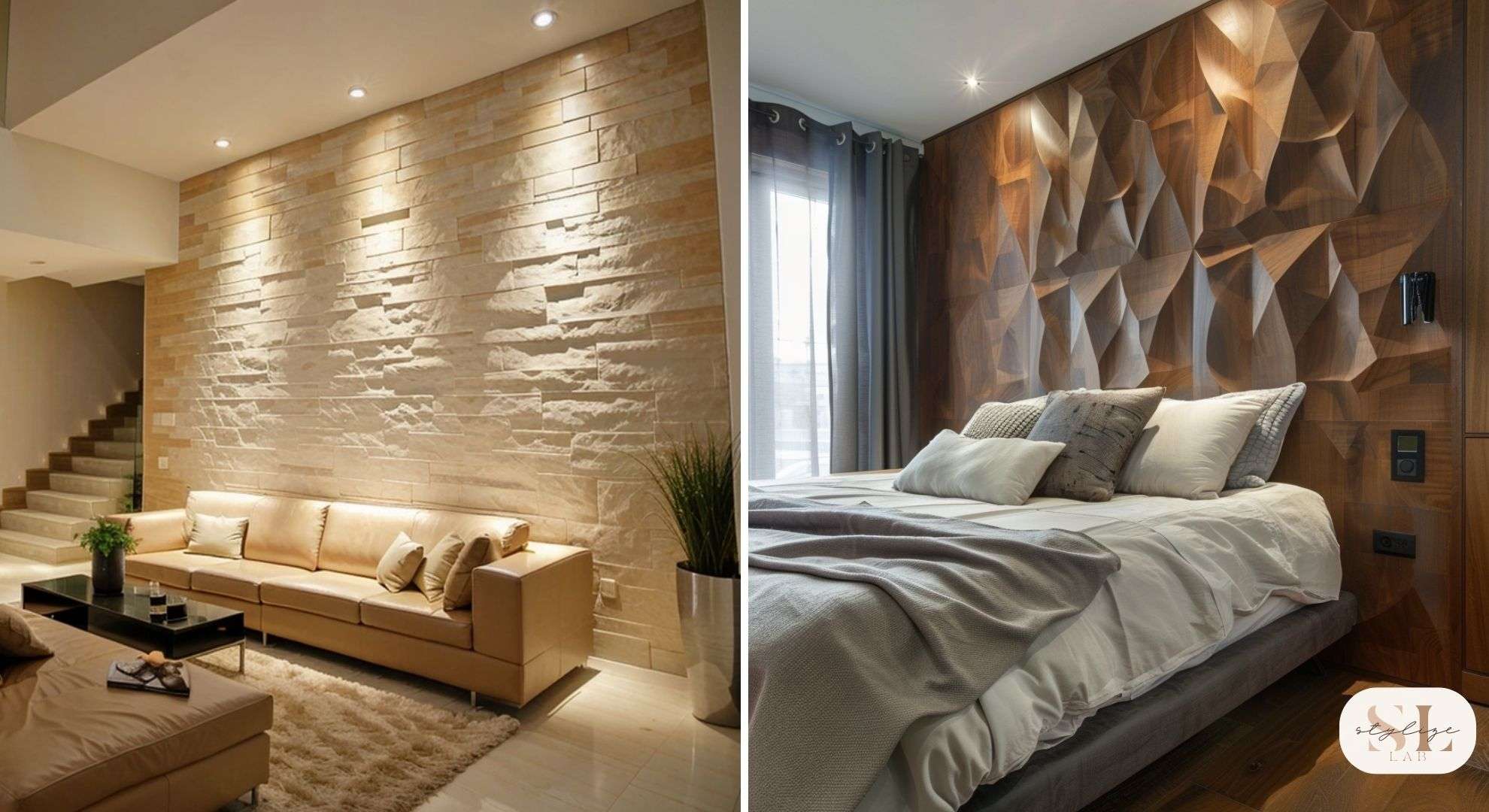
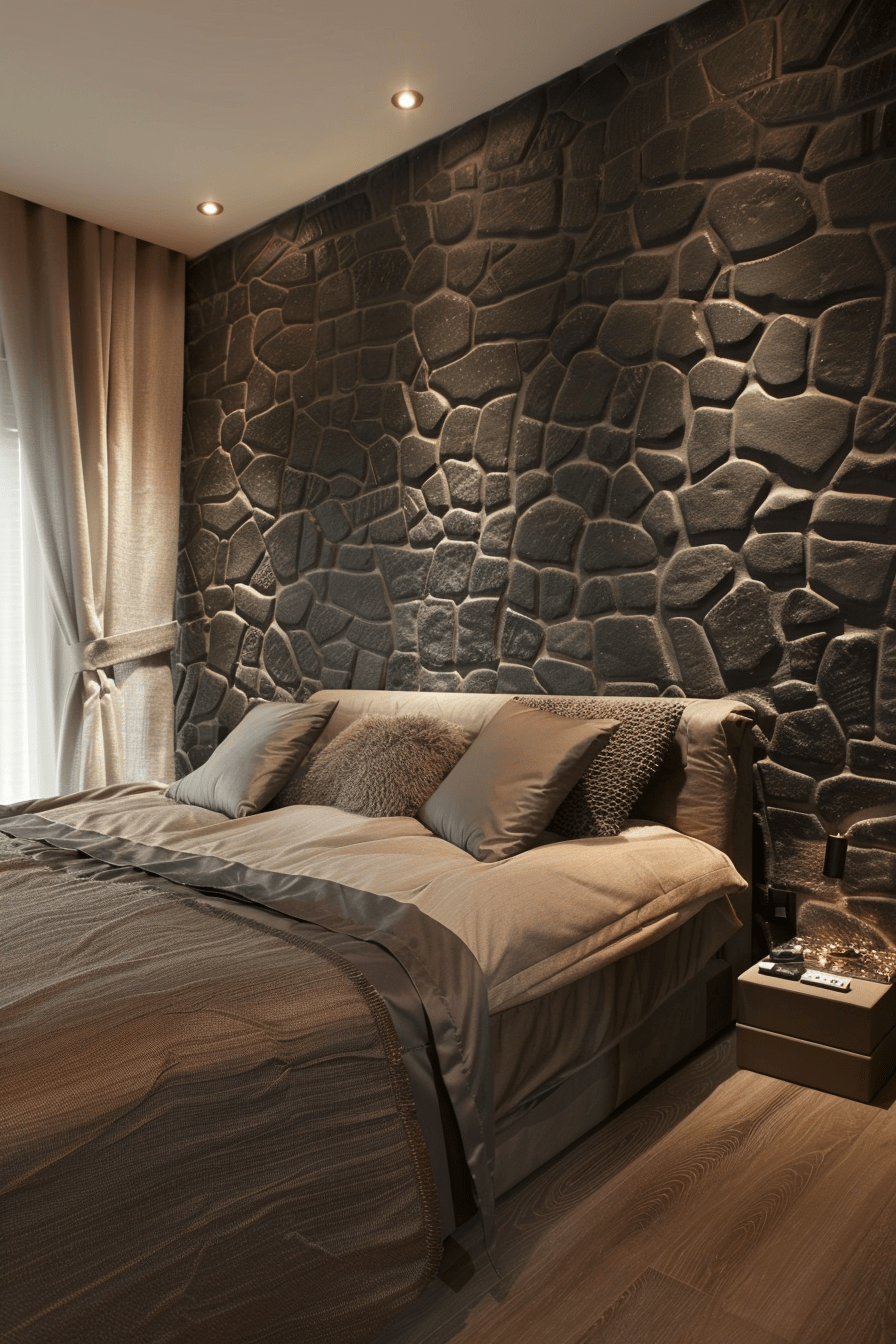
Composed of diverse materials, 3D panels replicate natural textures like wood and stone, delivering a striking and lively appearance.
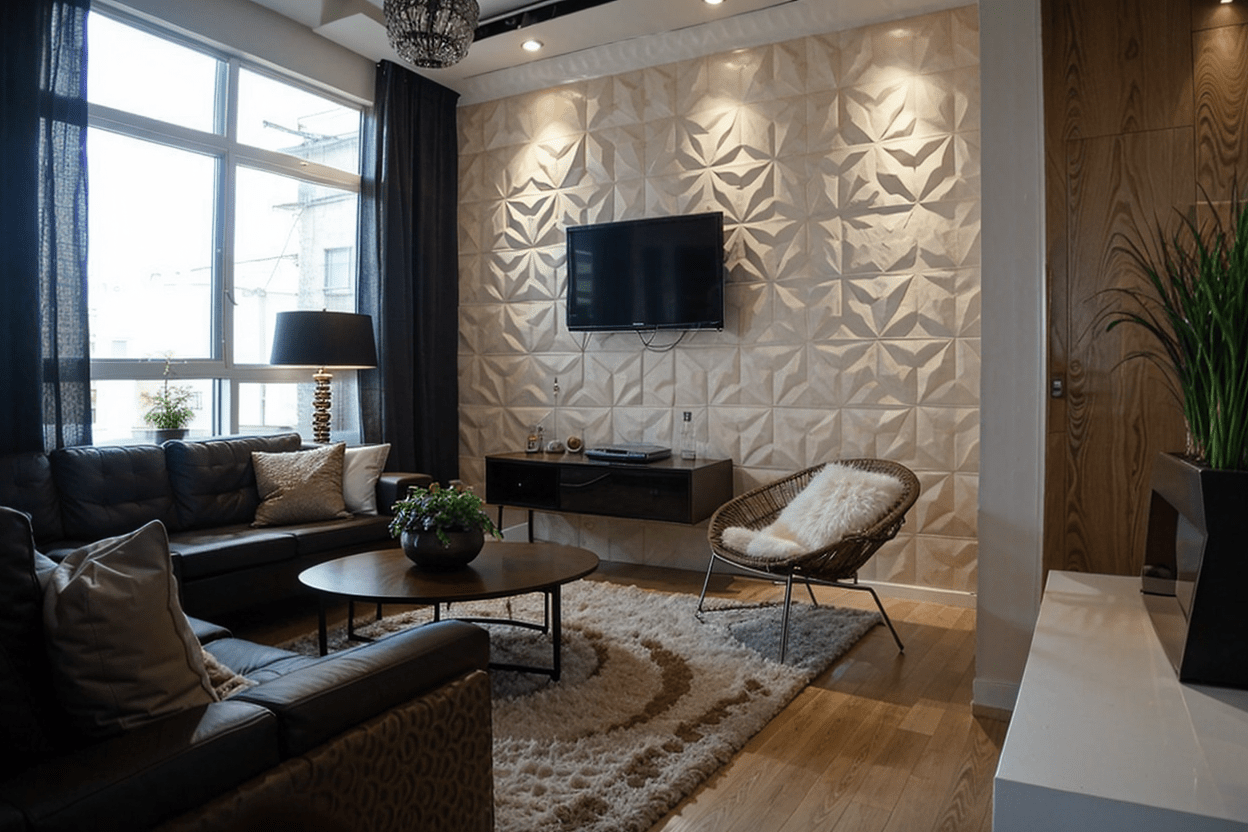
They’re an ideal choice for accent walls, whether in living rooms or bedrooms, but can work well in bathroom.
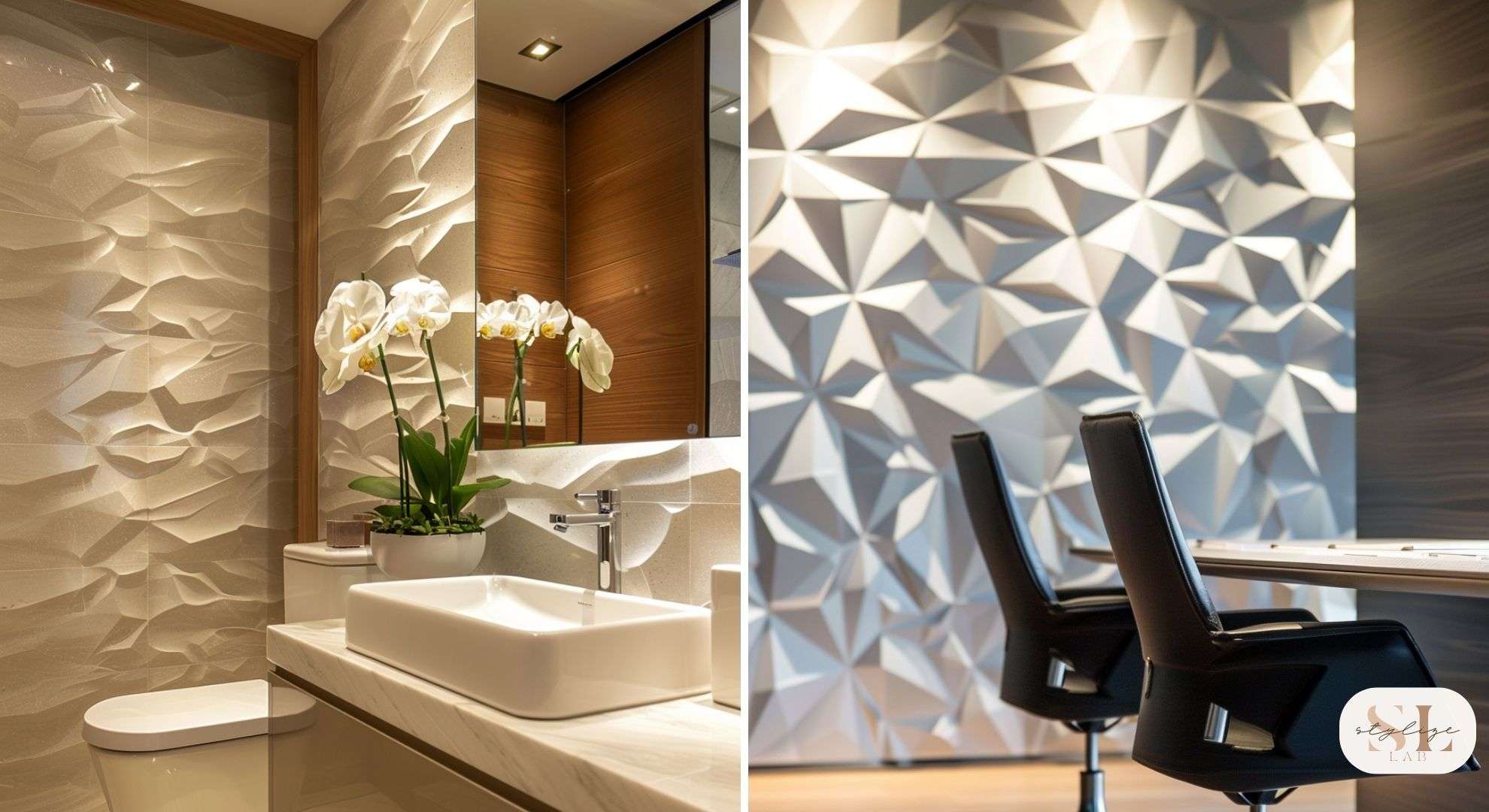
5. Wood Paneling for a Warm Ambiance
When you think of natural beauty in a room, wood paneling often tops the list.
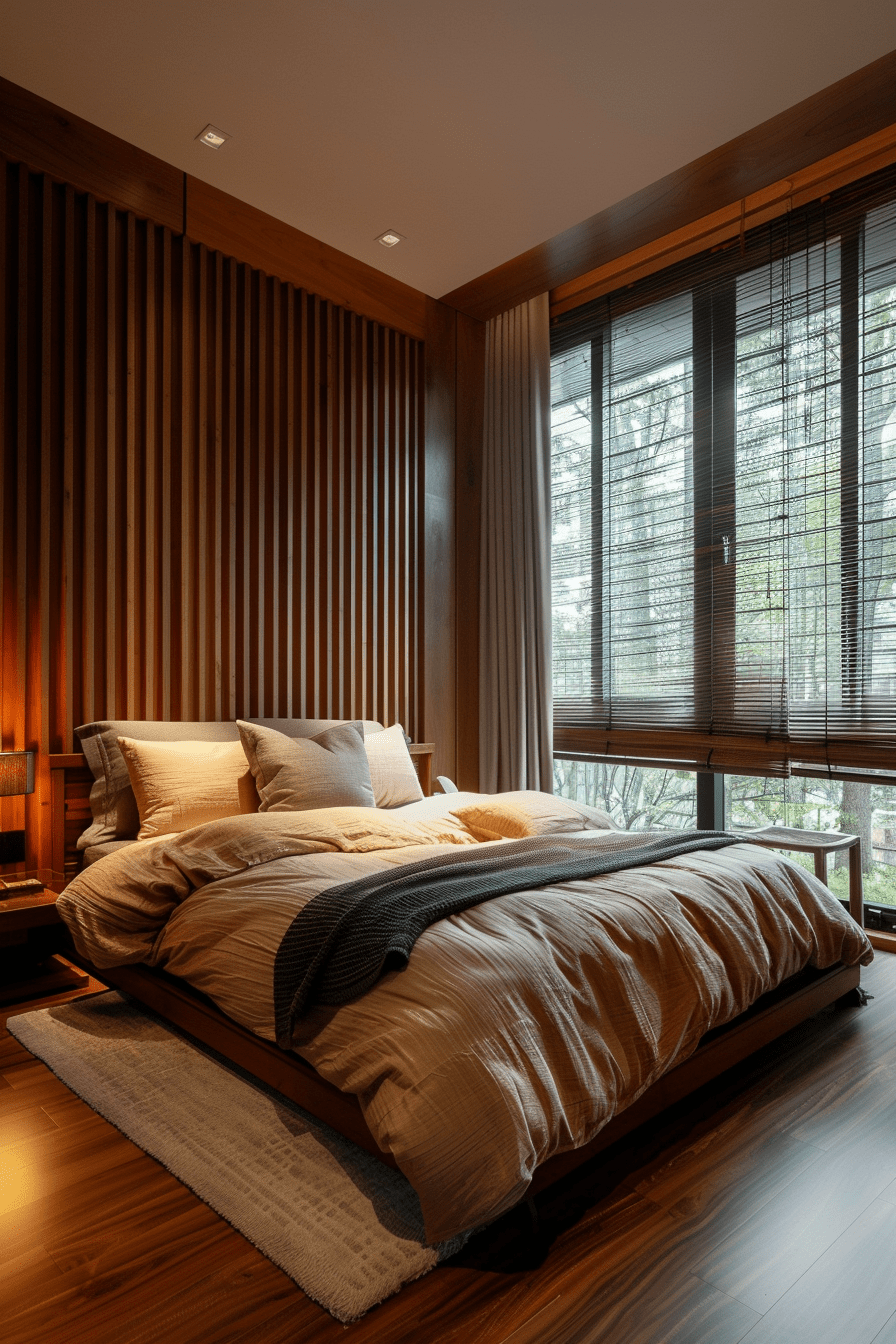
It’s a flexible design choice that perfectly fits both contemporary and classic settings.
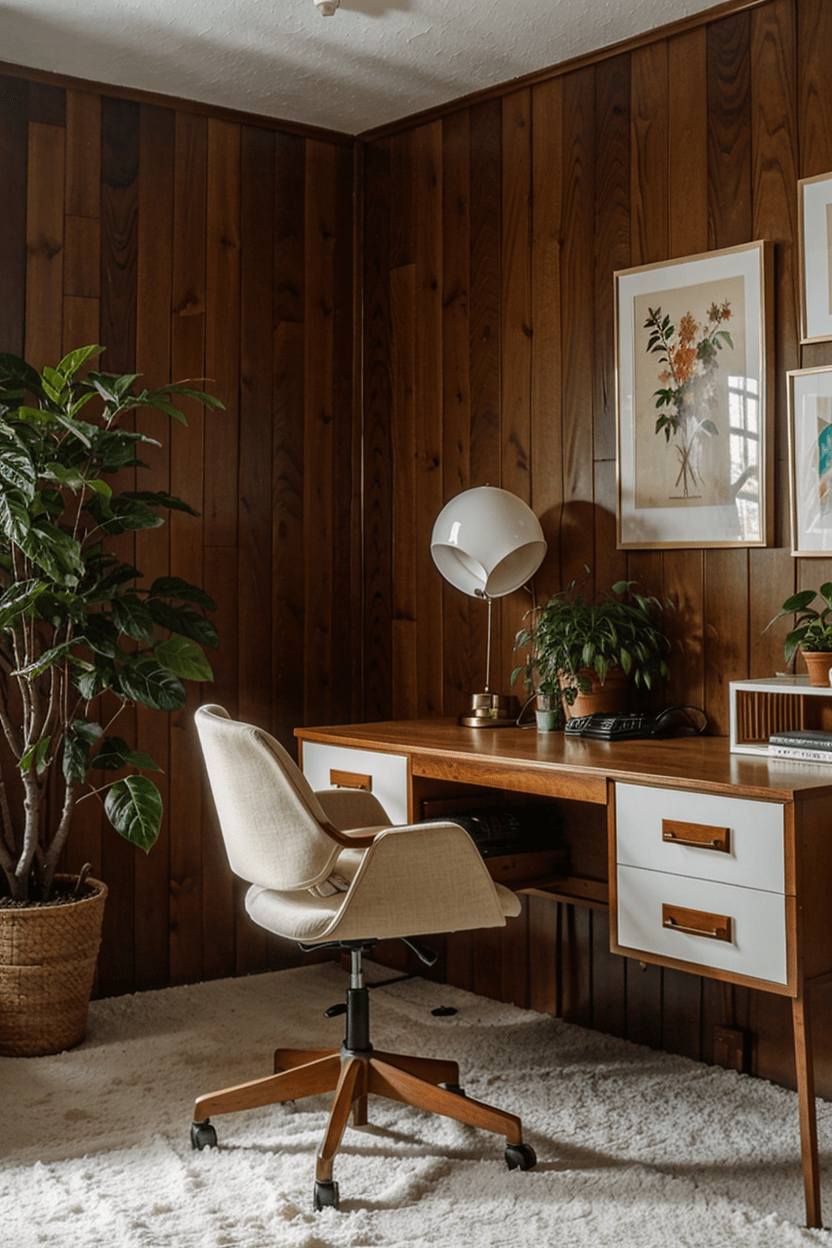
Adding wood paneling to a space immediately brings a sense of warmth and depth, making it perfect for areas like bedrooms or home offices.
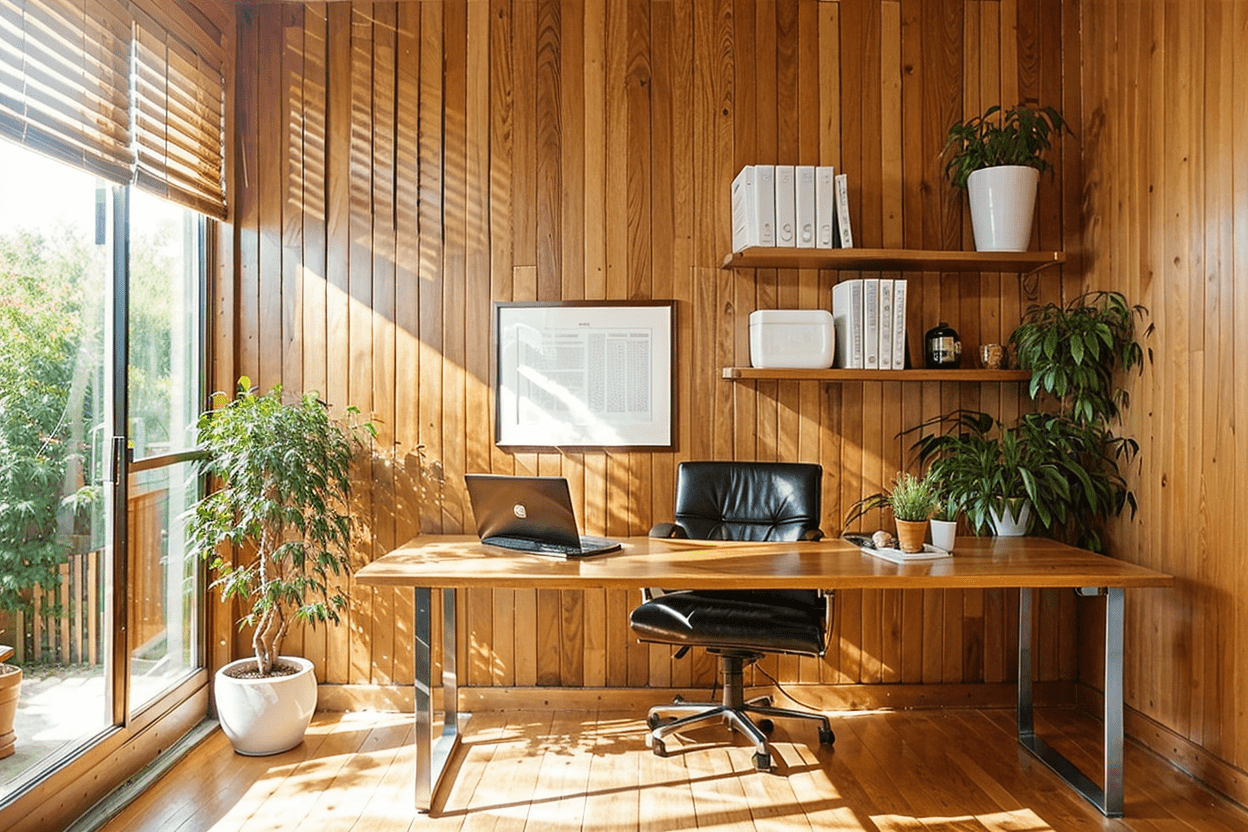
With a wide range of wood kinds and finishes available, you can easily find the right match for your personal style.
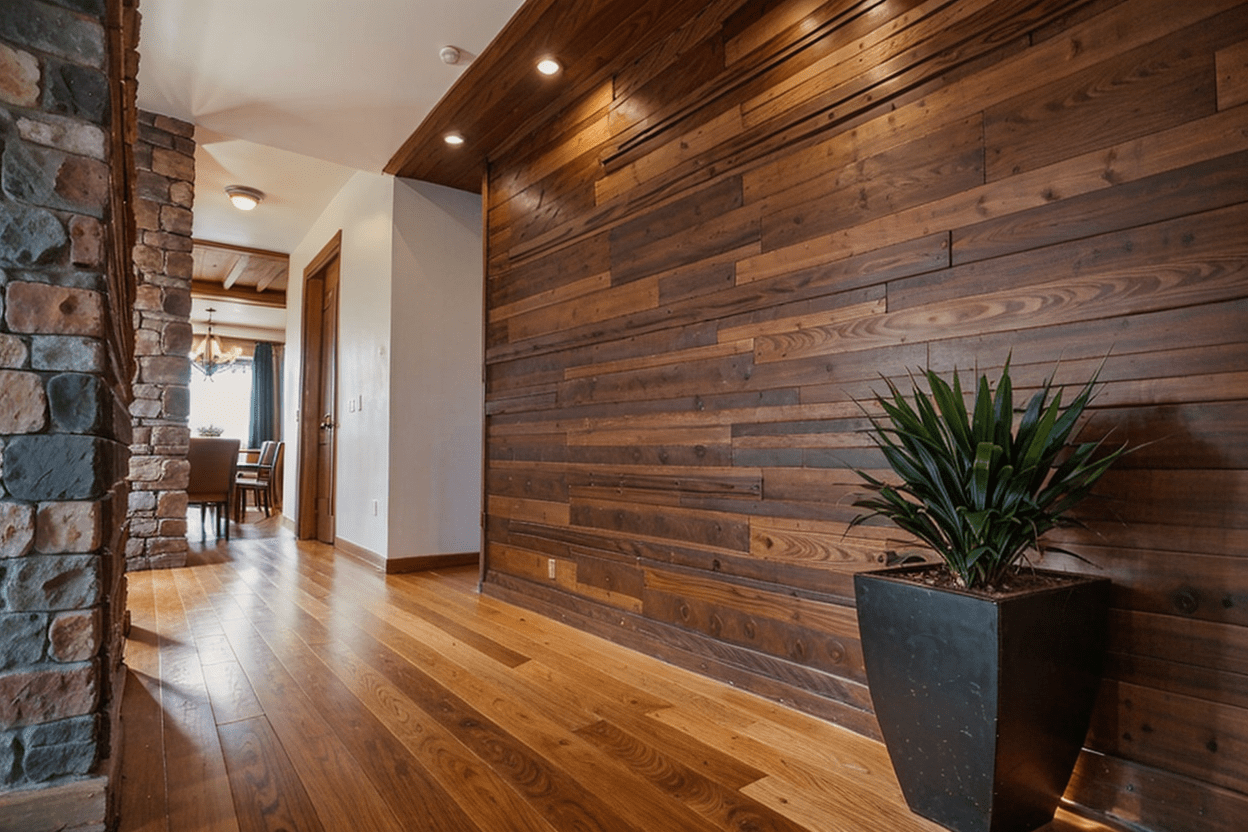
6. Classic Shiplap Wall Panels
Introduce warmth and comfort to your spaces with classic shiplap wall panels.
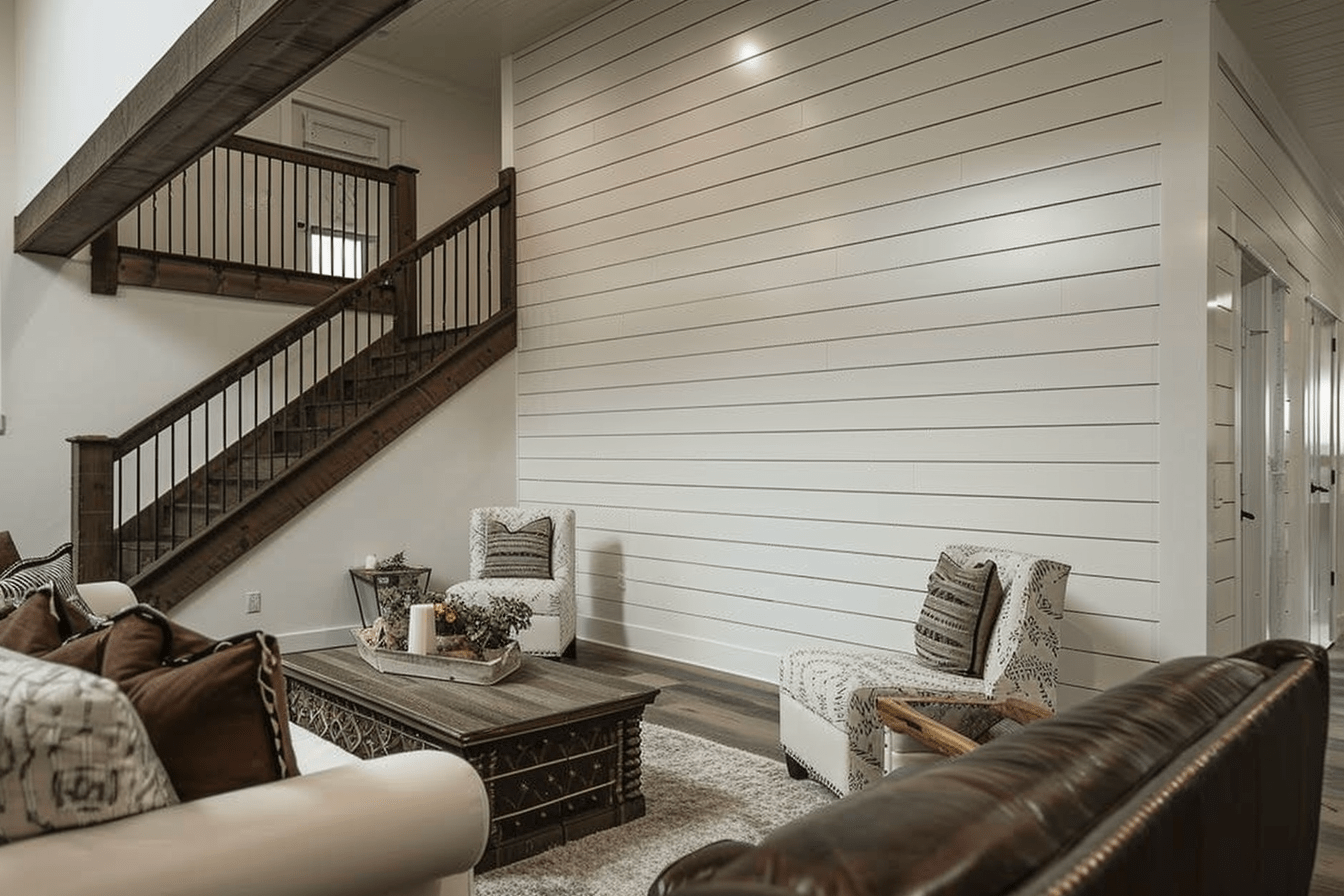
These timeless horizontal boards instill a cozy, welcoming vibe, making them ideal for living rooms or hallways.
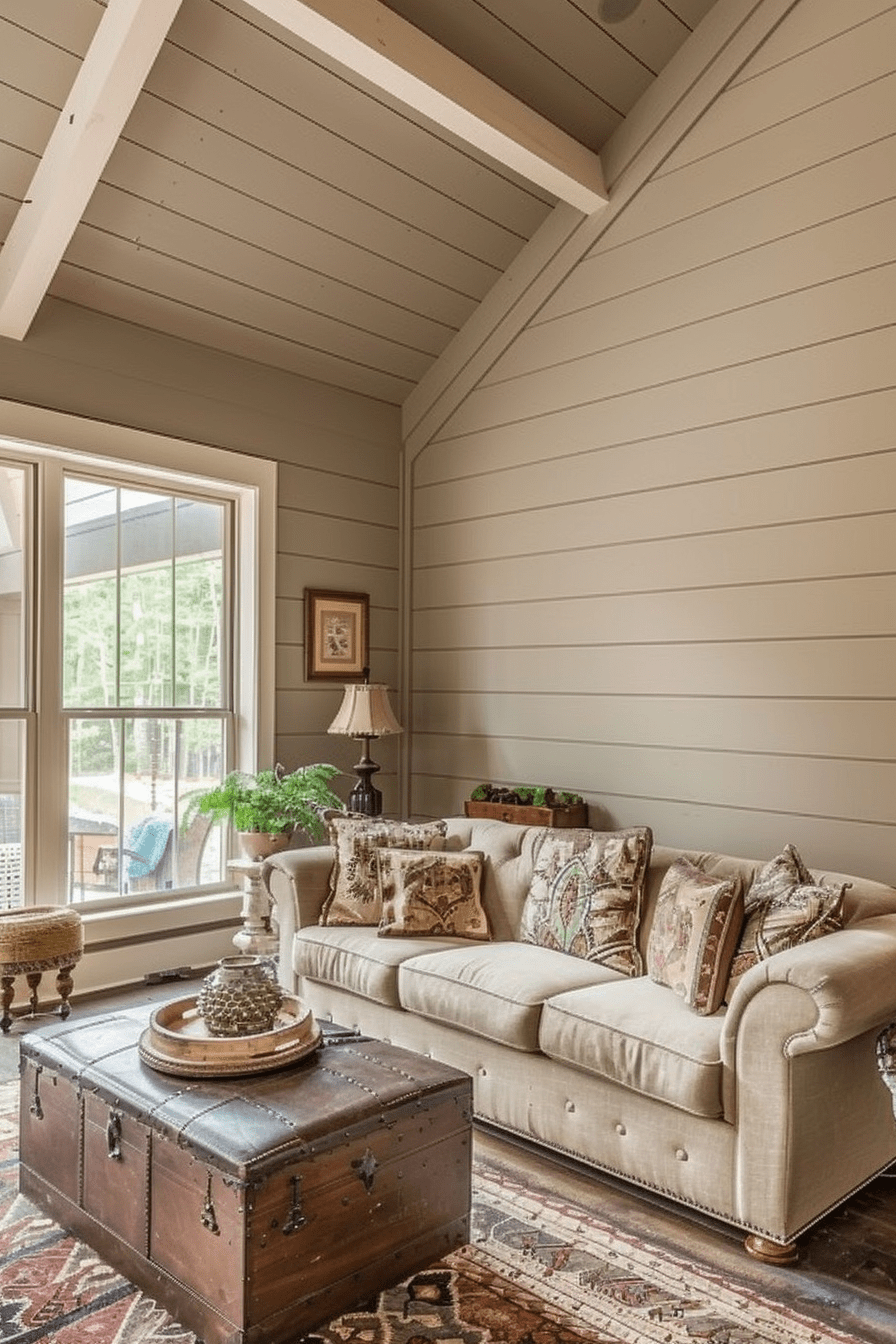
Shiplap panels offer hassle-free installation and can be painted in a range of colors to complement your decor.
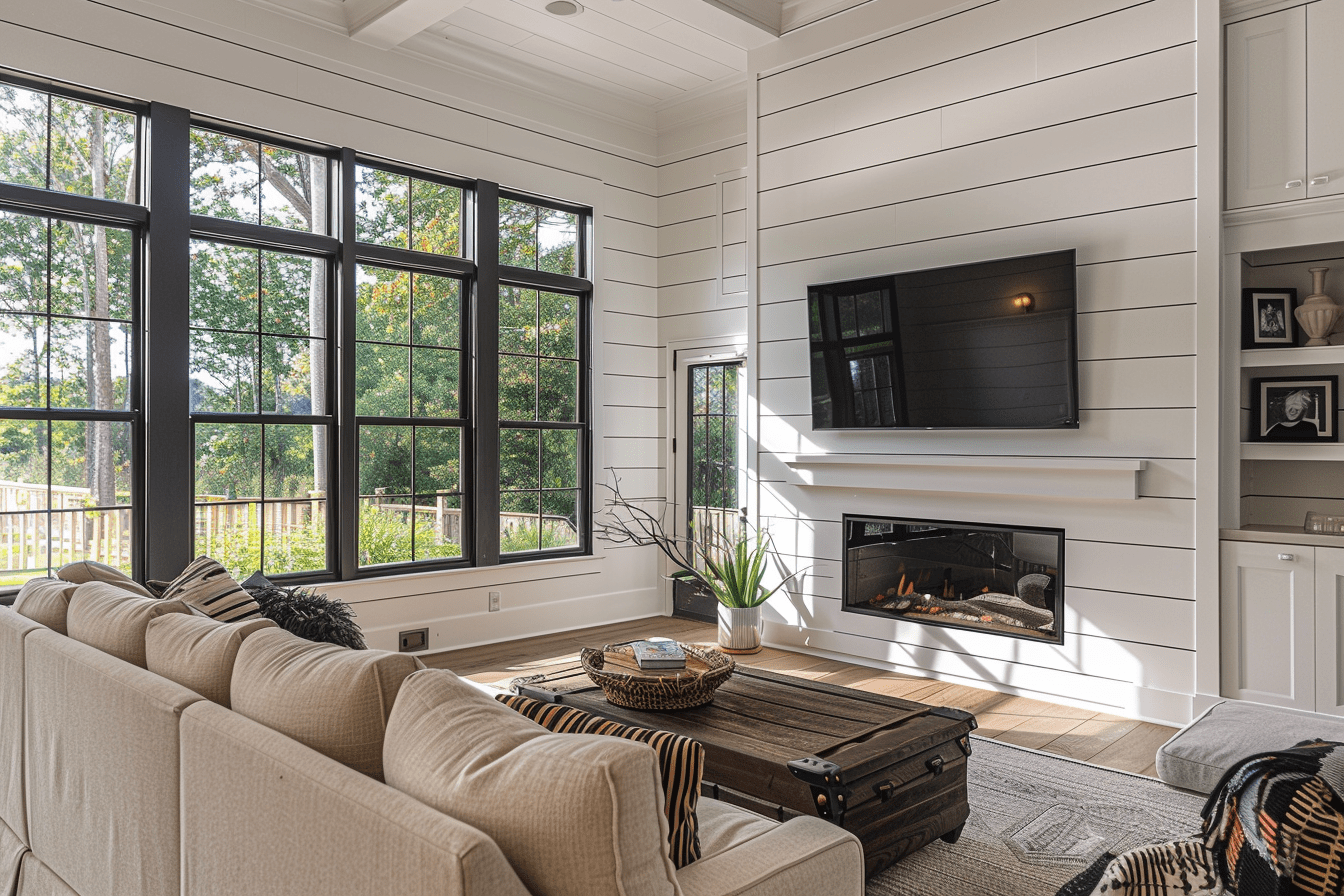
Bridging understated modern sensibilities with classic charm, this style ensures any room feels brighter and more spacious.
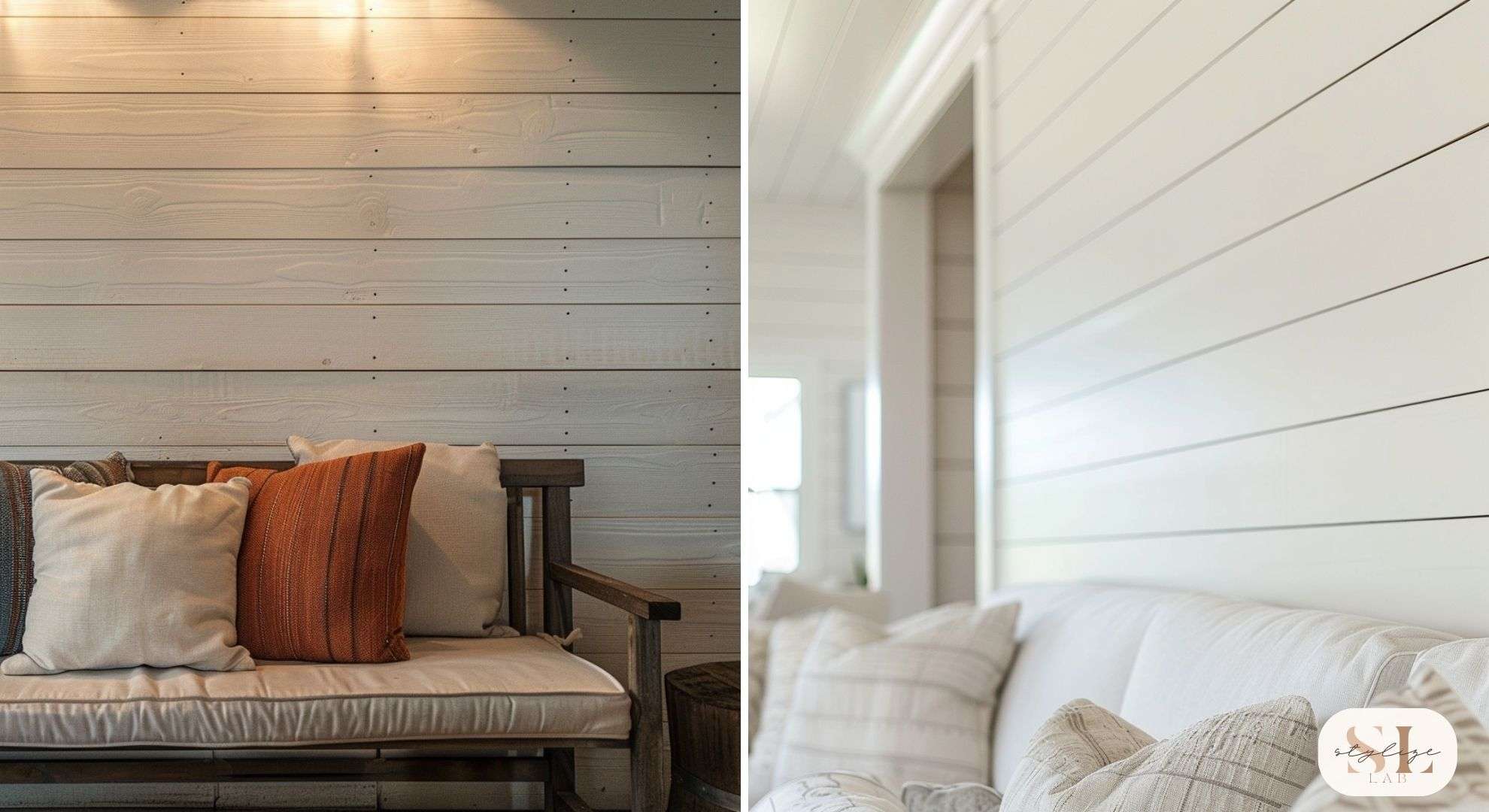
7. Wall Panels with Integrated Lighting
Exalt the look and feel of your space with wall panels that feature integrated lighting.
These panels blend both style and function, adding a dynamic element to your rooms.
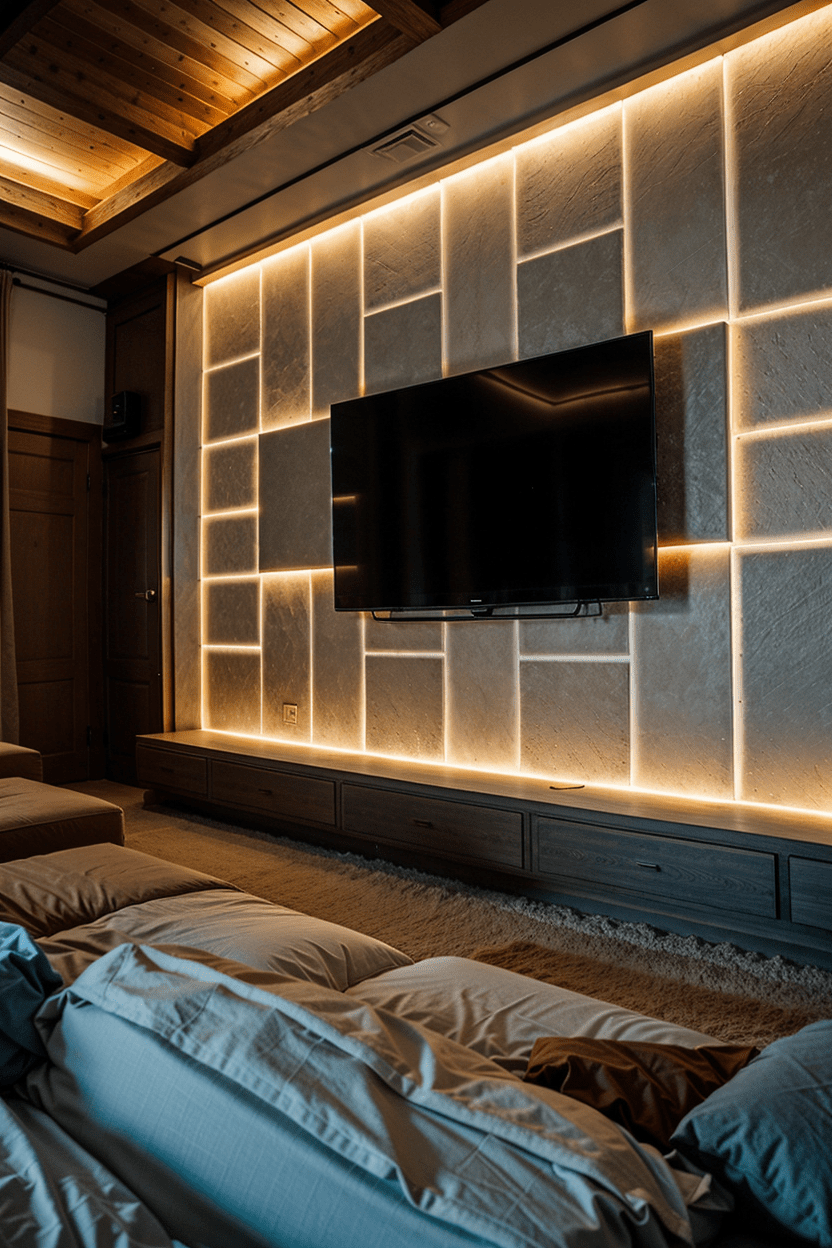
Ideal for areas like hallways, bedrooms, or media rooms, panels with built-in LED lighting can heat up your environment with a comfy glow.
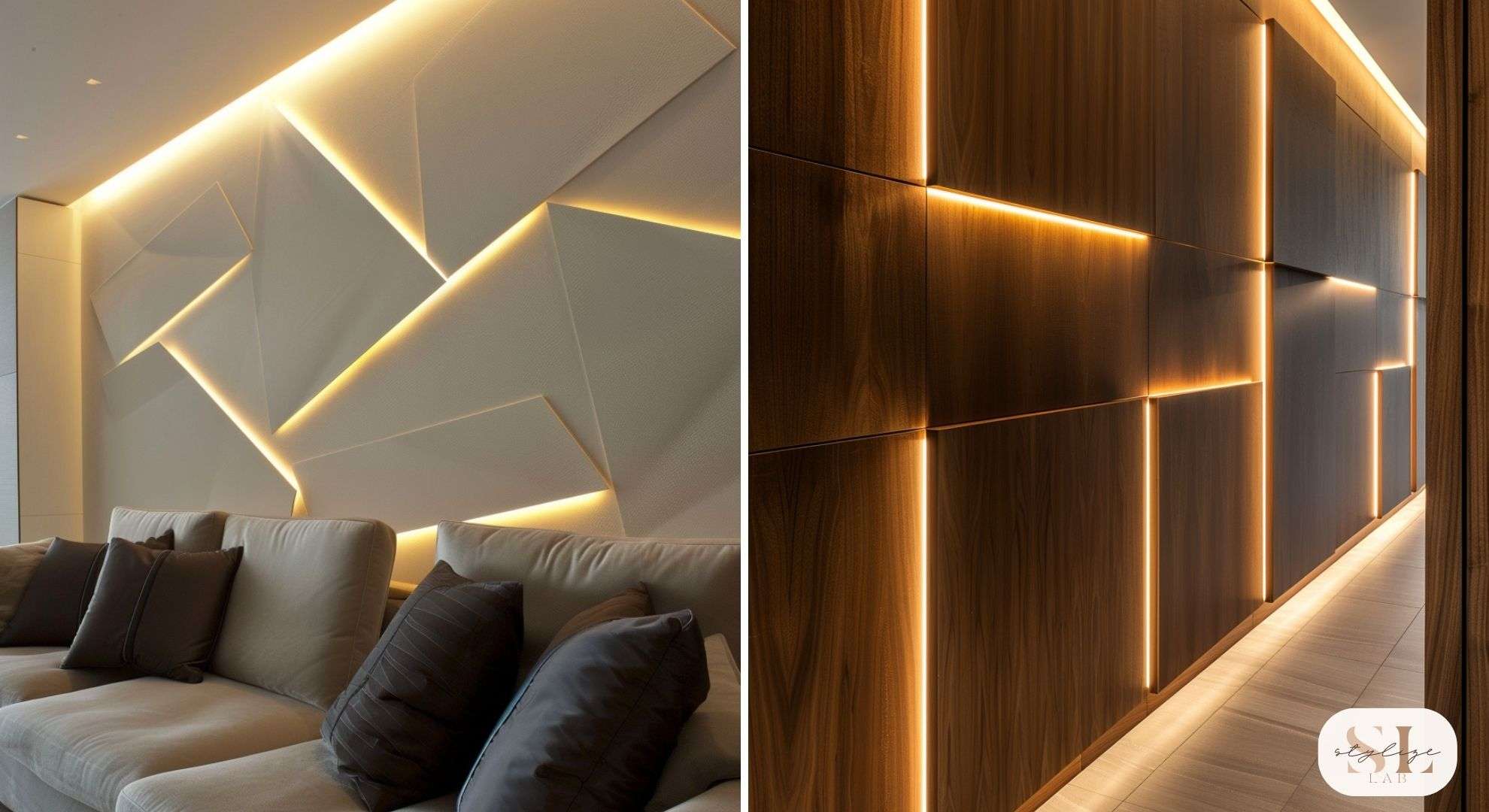
They enhance the texture and detail of the panels and provide peaceful, ambient light.
8. Artistic Painted Panels
Give your space a unique touch with painted wall panels.
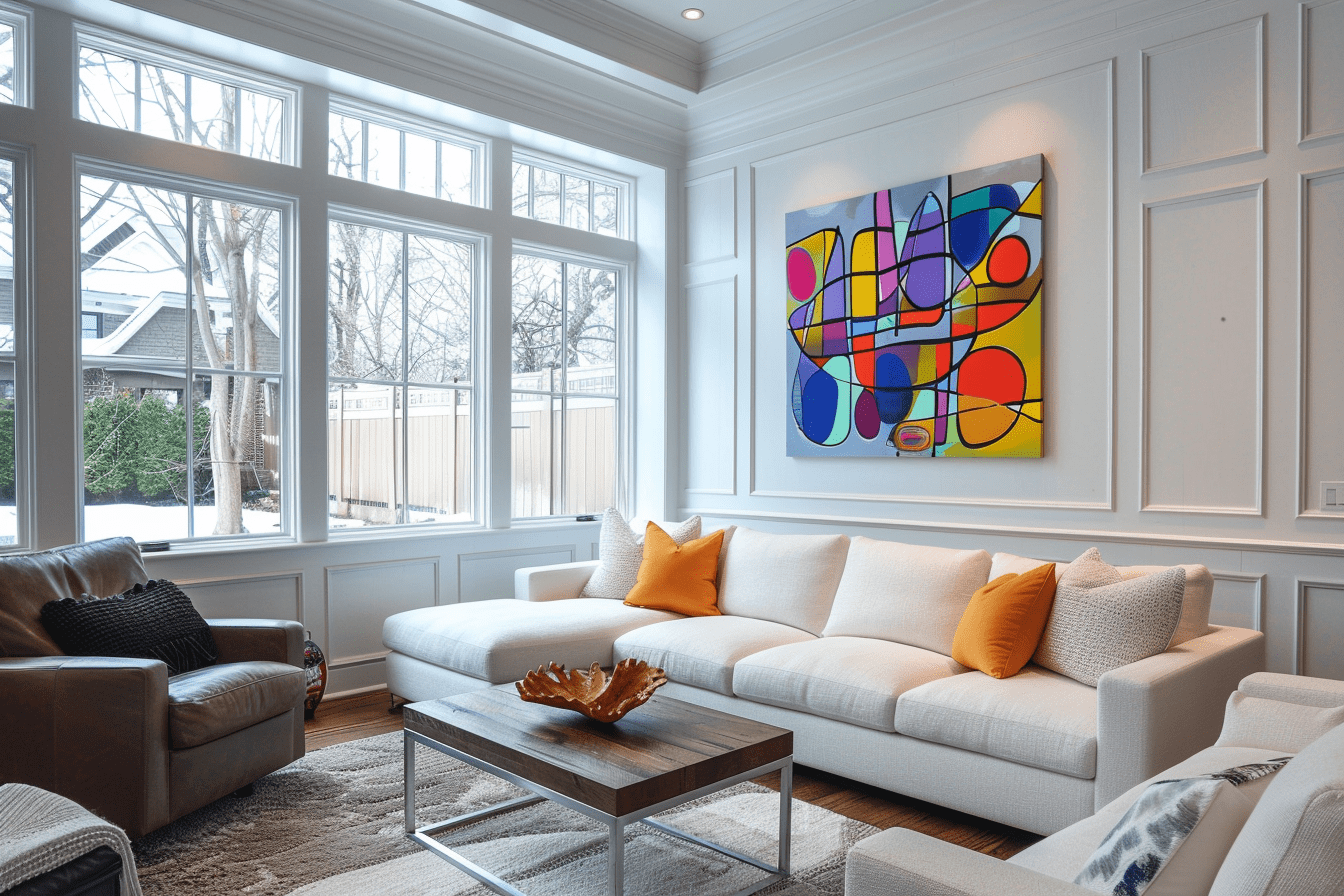
If you love vibrant colors or gentle pastels, maybe these panels can totally modify the vibe of a room.
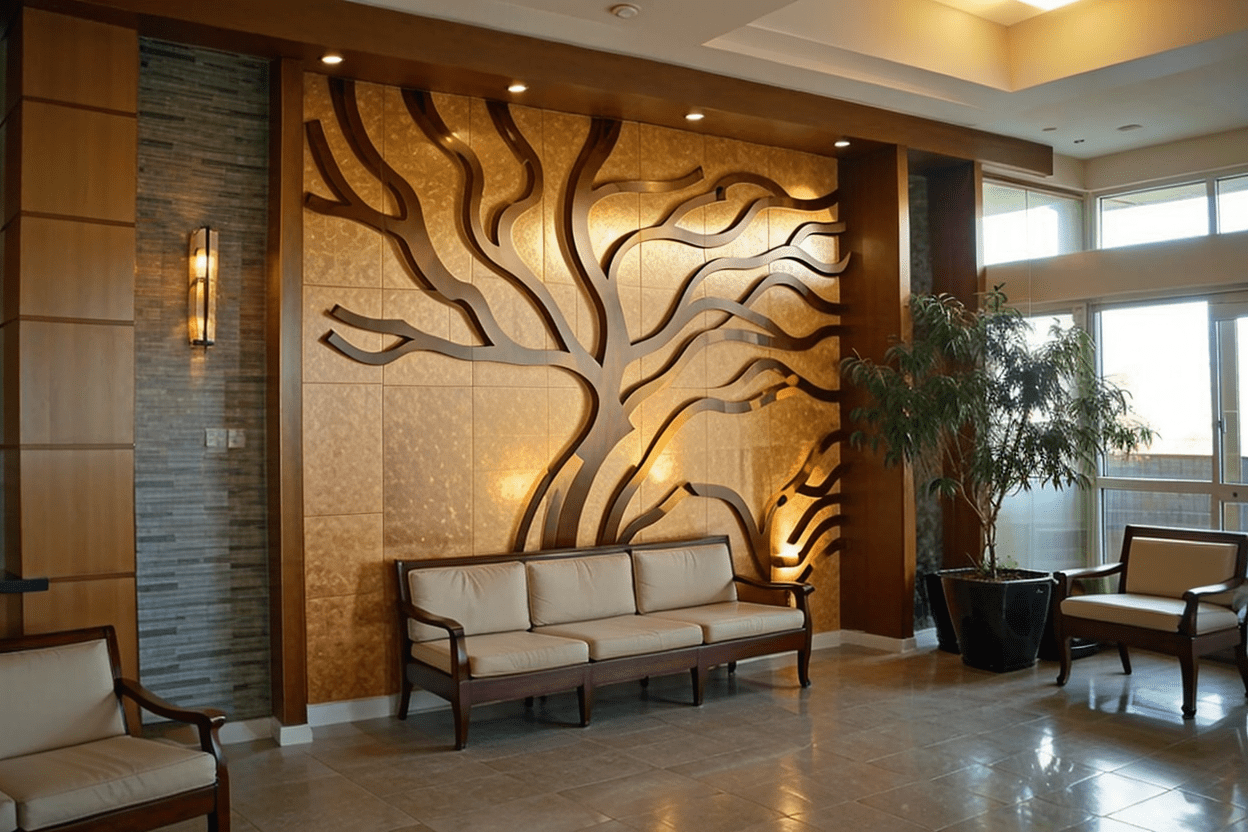
For a truly personal touch, try hand-painting murals or intricate designs on your panels.
This allows you to express your creativity and customize the look to fit perfectly with any parts of your house.
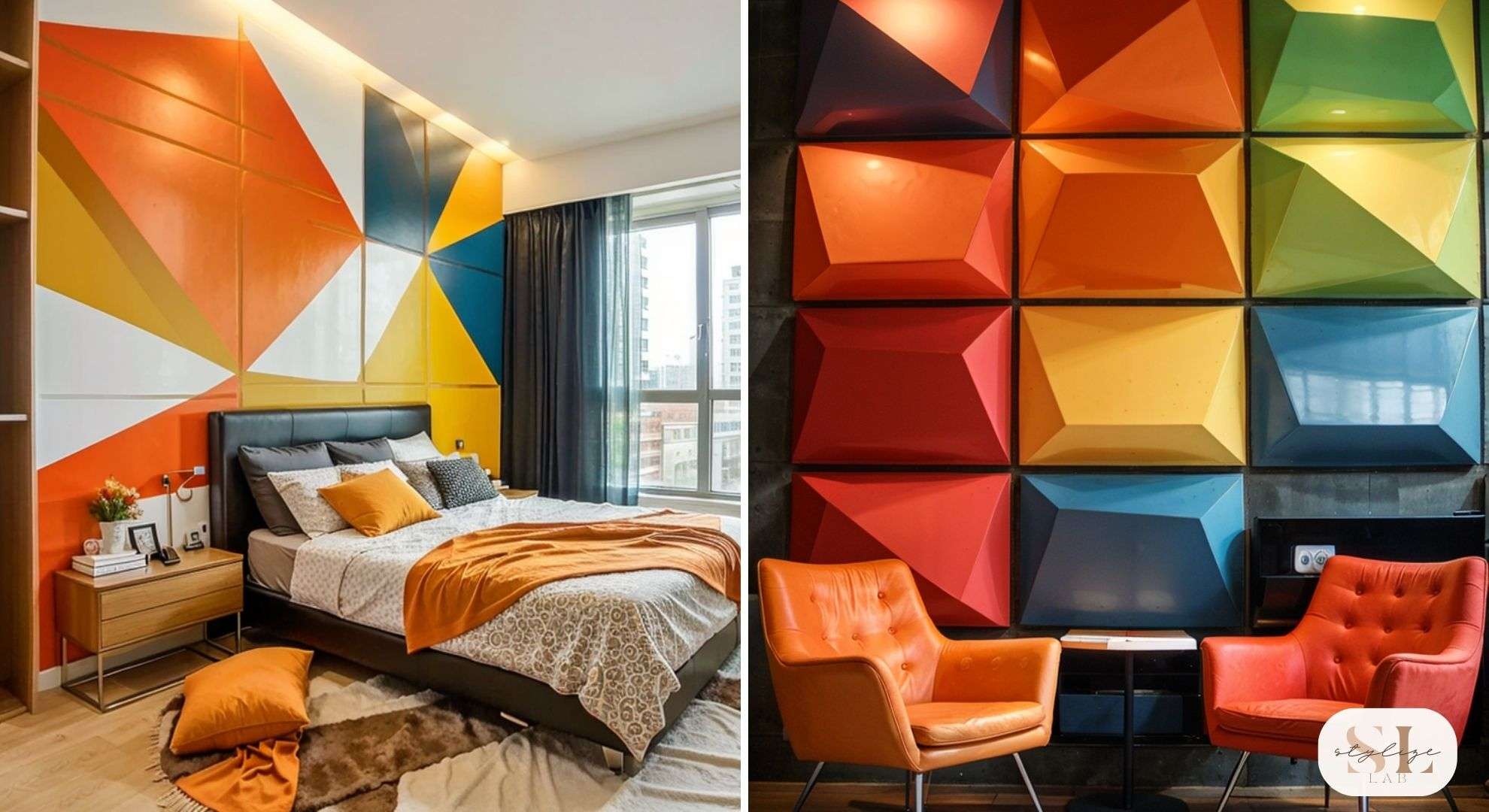
9. Rustic Reclaimed Wood Panels
Get charm and history into your home with rustic reclaimed wood panels.
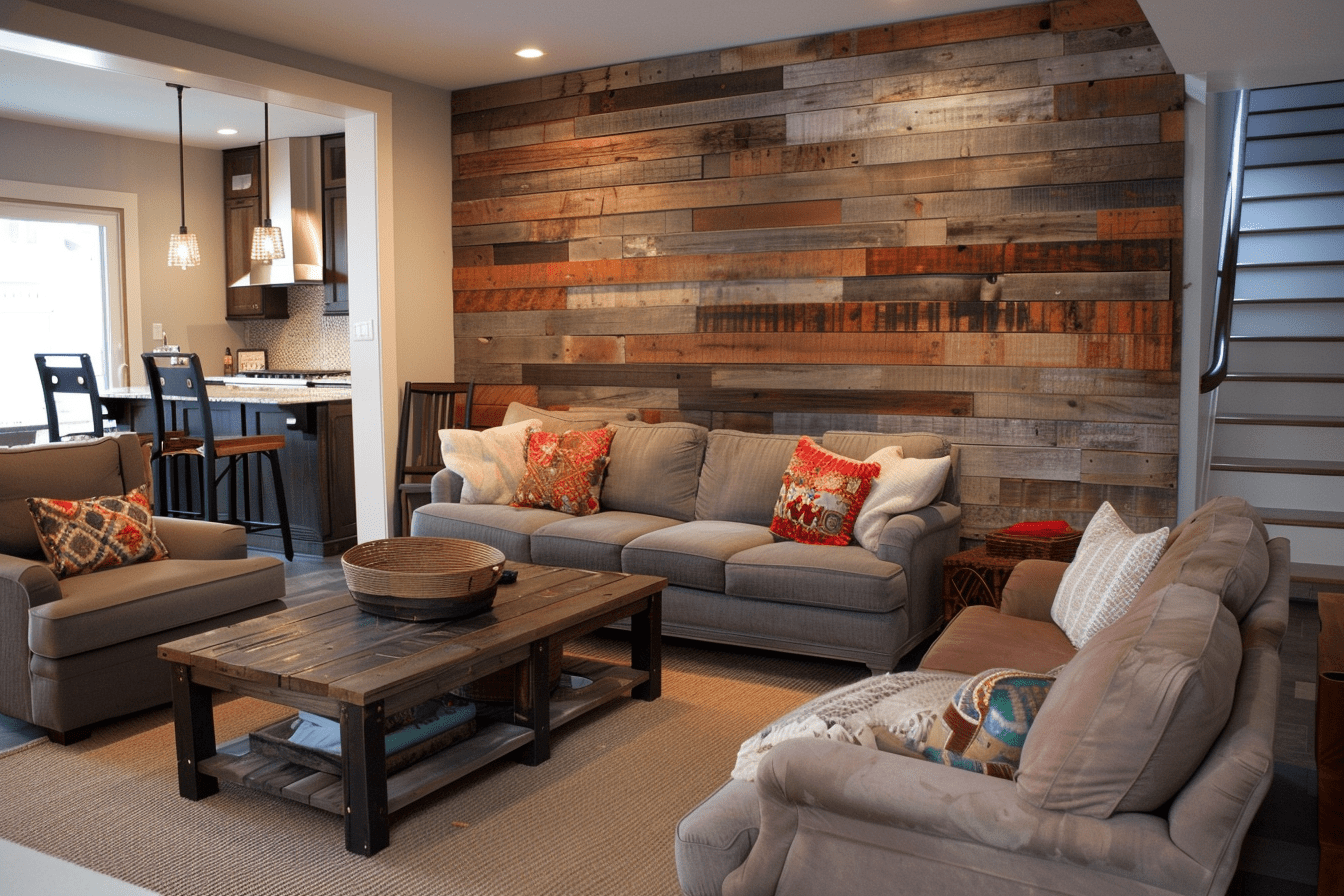
This environmentally friendly choice adds a sense of heritage and uniqueness to any room.
Perfect for living rooms, entryways, or bedrooms, these panels create warmth and a cozy nostalgia.
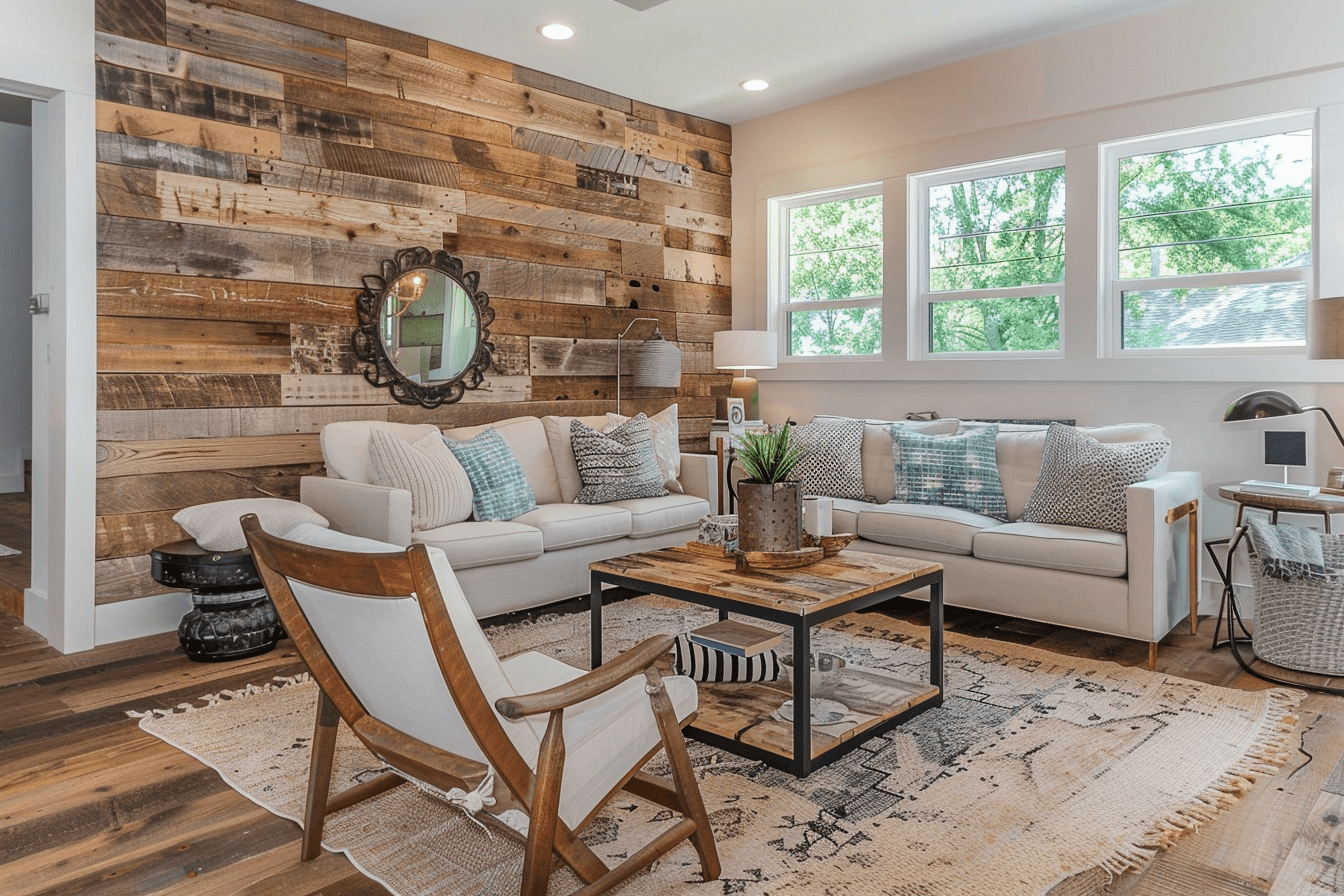
Leave them natural or add a finish to amplify their rustic beauty.

10. Elegant Vertical Panels
Vertical wall panels can transform any room, embedding a sense of height and elegance.
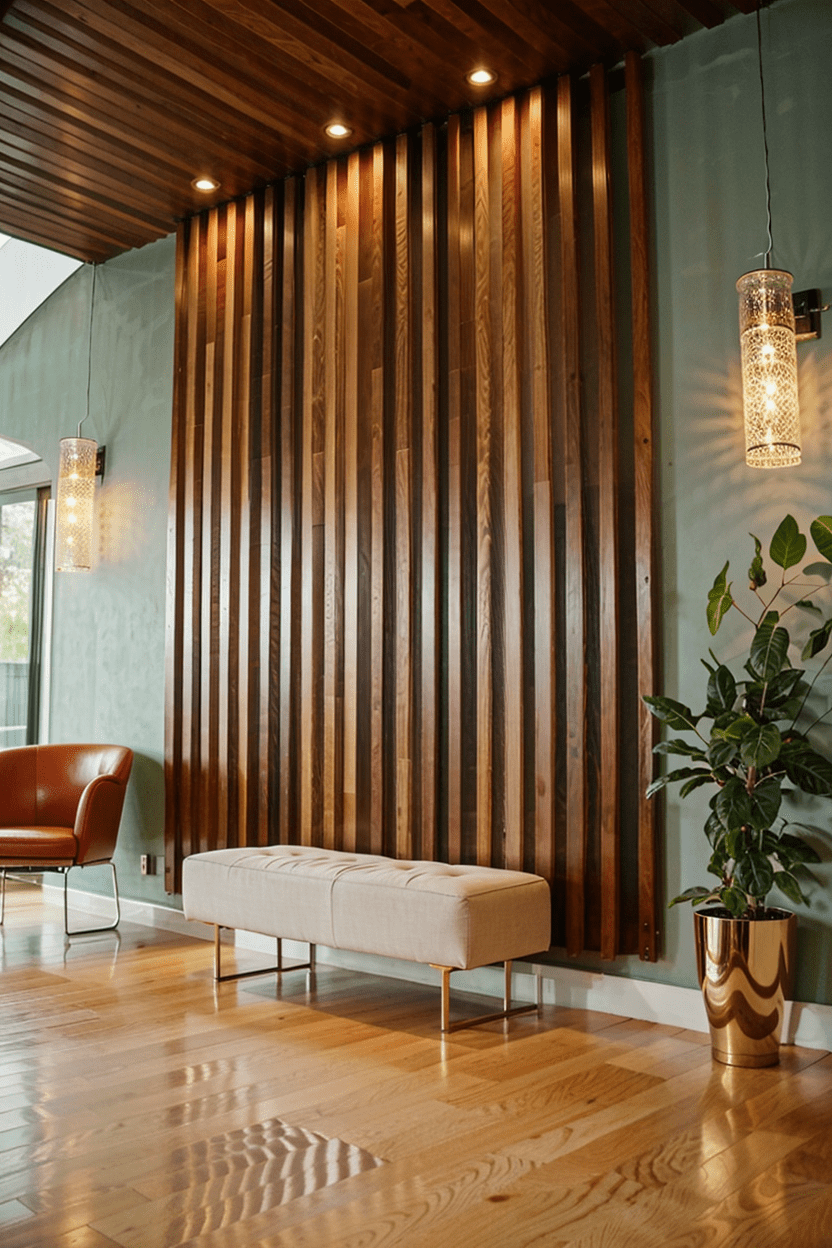
Especially suited for narrow spaces, they effortlessly create the illusion of taller ceilings.
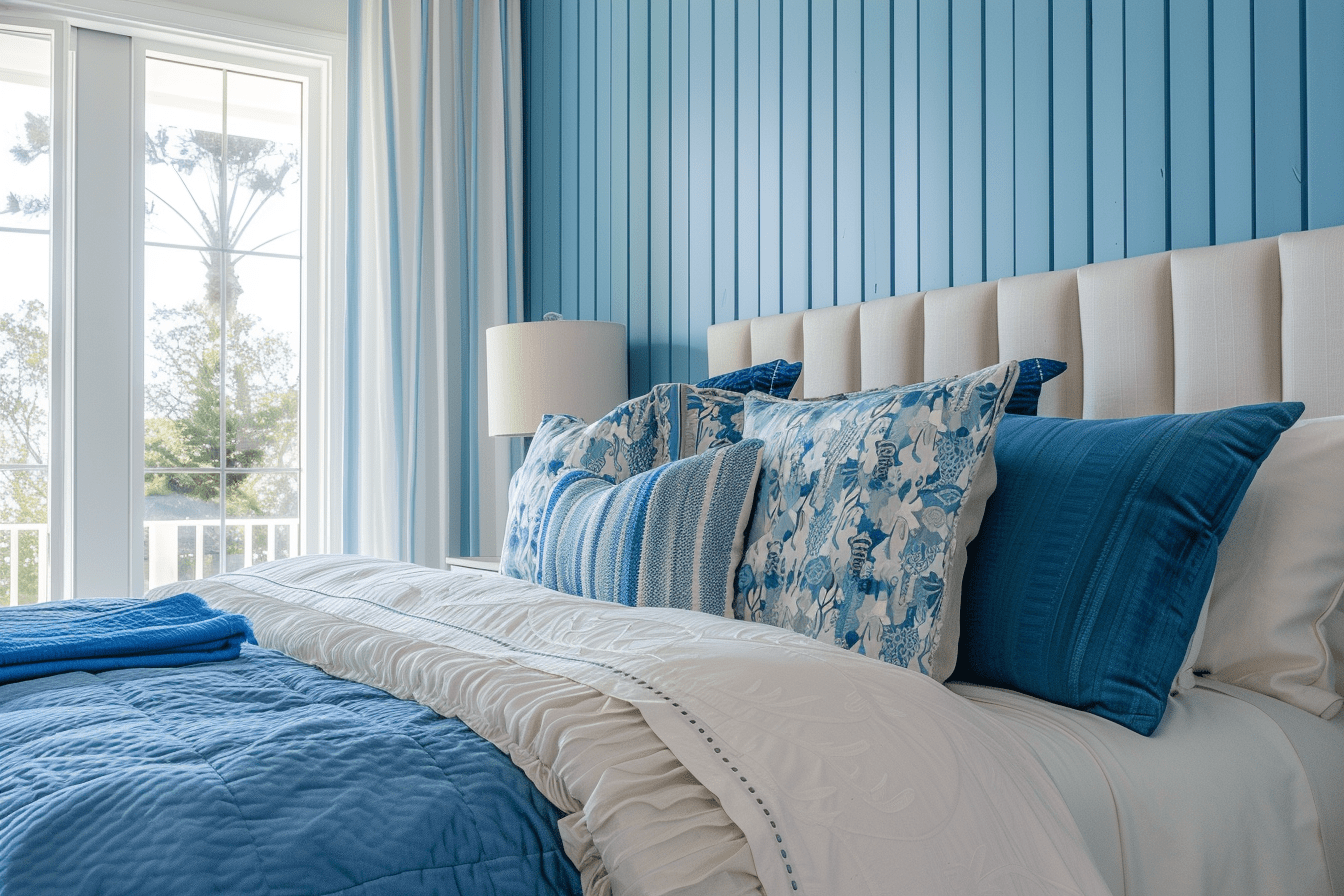
Choose a sleek, monochromatic design for a minimalist vibe or mix and match colors and textures for a striking feature wall.
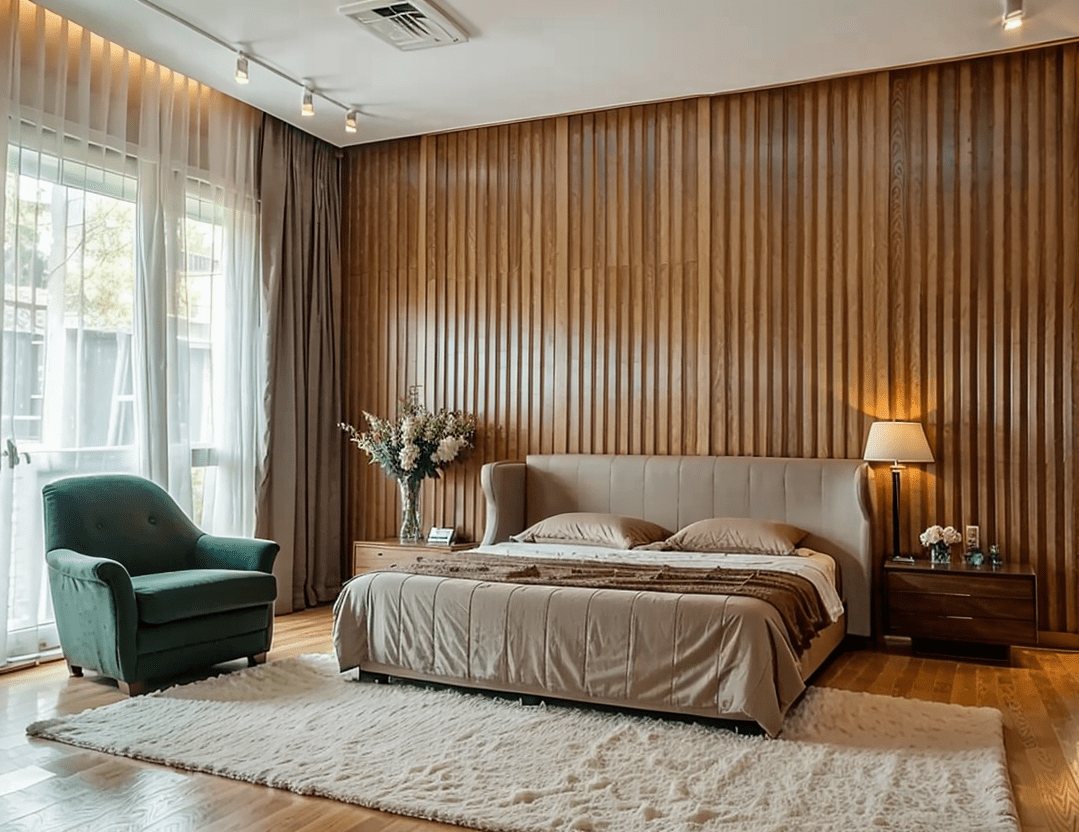
Perfect for dining rooms or bedrooms, these vertical panels bring an added touch of sophistication and charm to your home.
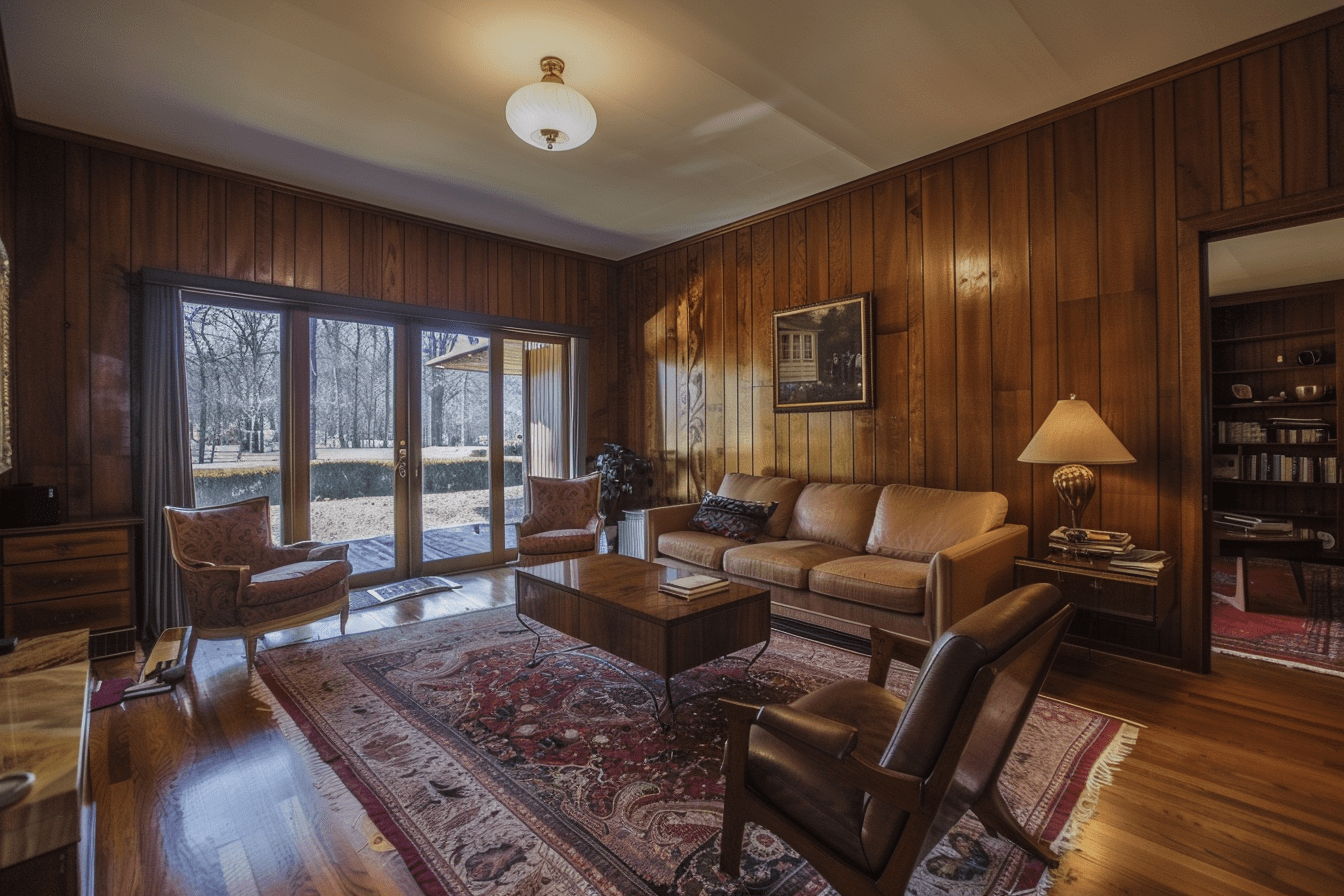
11. Beadboard Wall Panels
Beadboard wall panels bring a warm, timeless touch to your home, evoking the cozy charm of cottage and coastal decor.
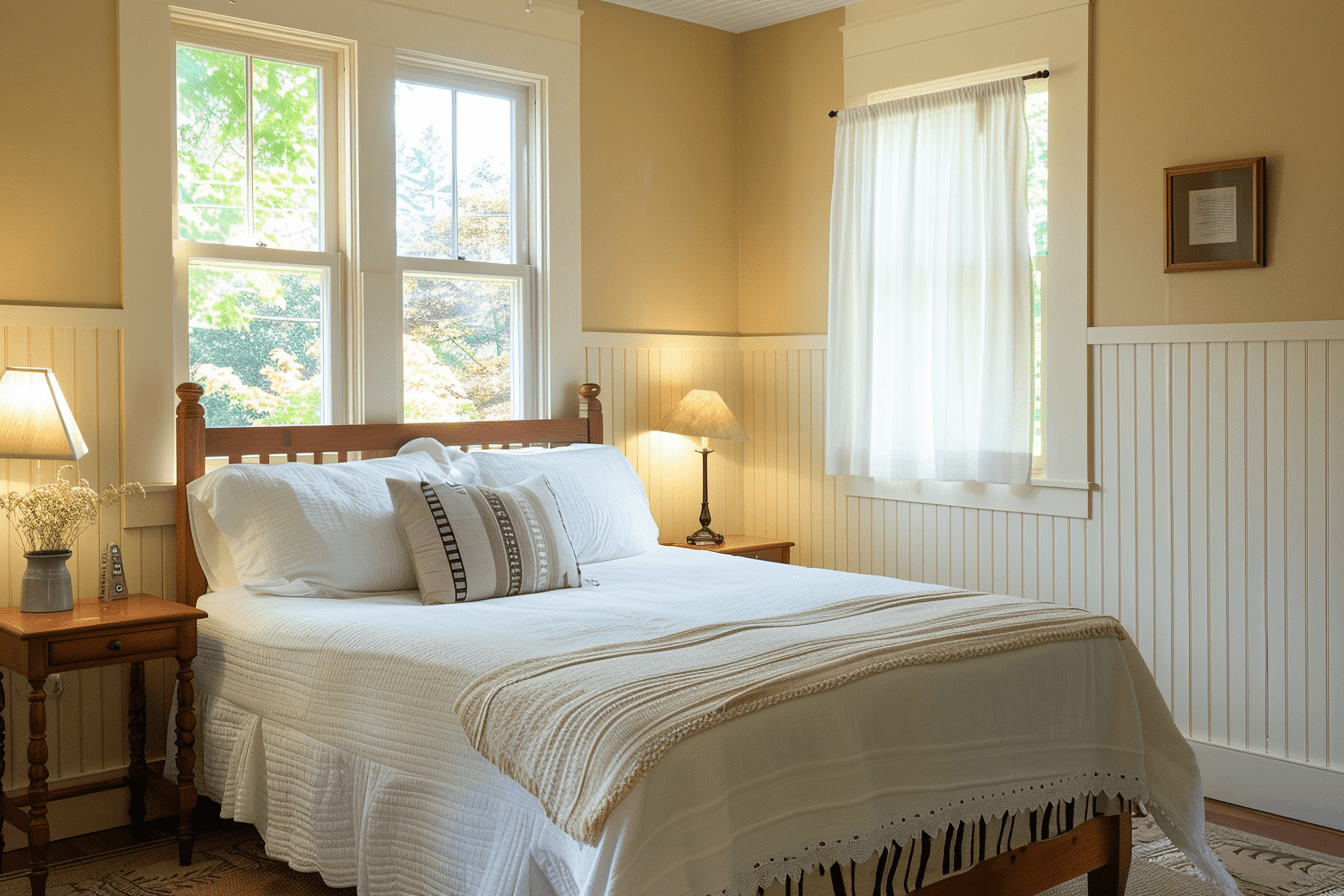
These slender, vertical strips can quickly turn a plain wall into a standout feature.
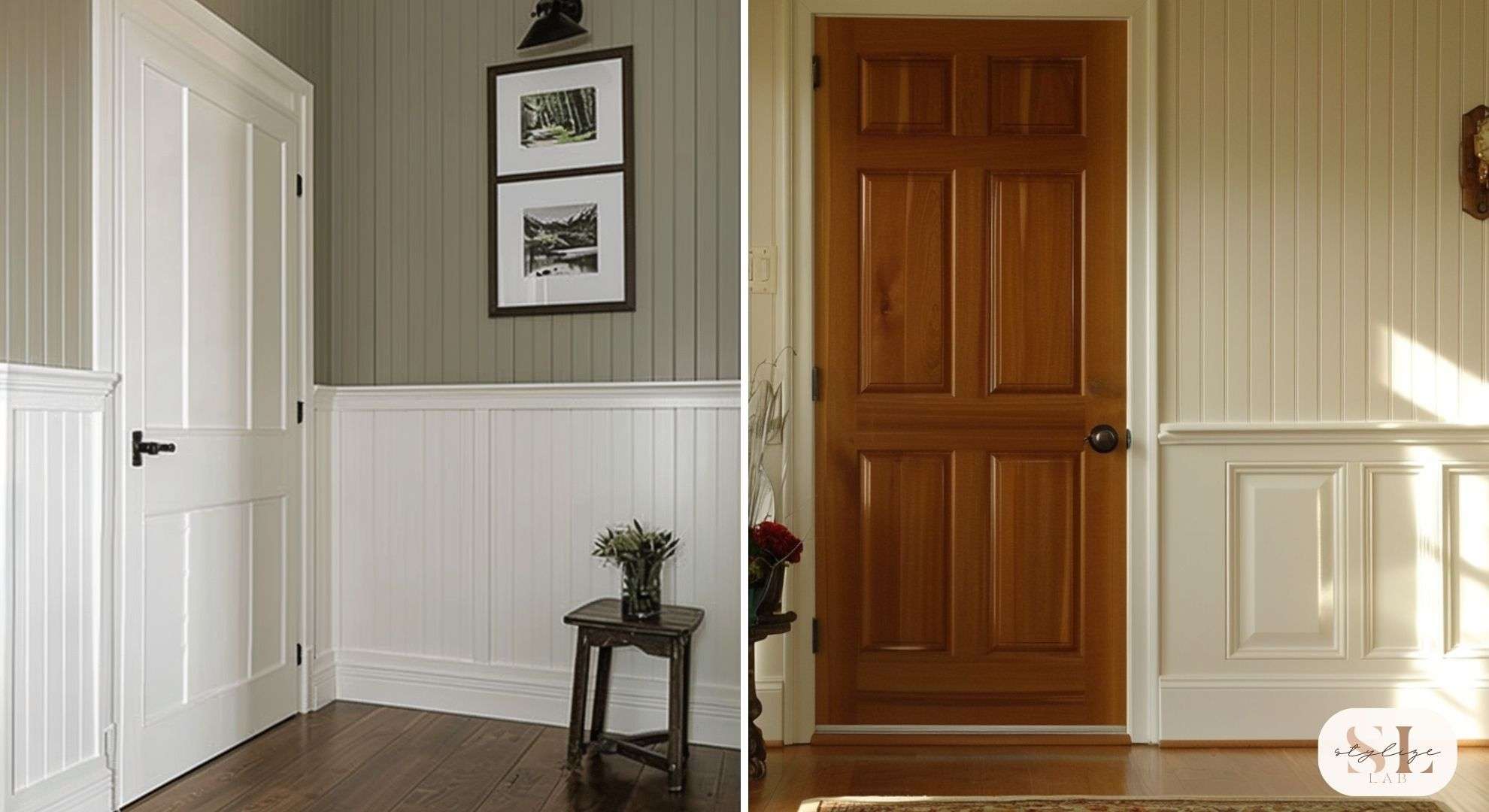
Perfect for areas like bathrooms, kitchens, and mudrooms, beadboard is prized for its sturdiness and effortless upkeep.
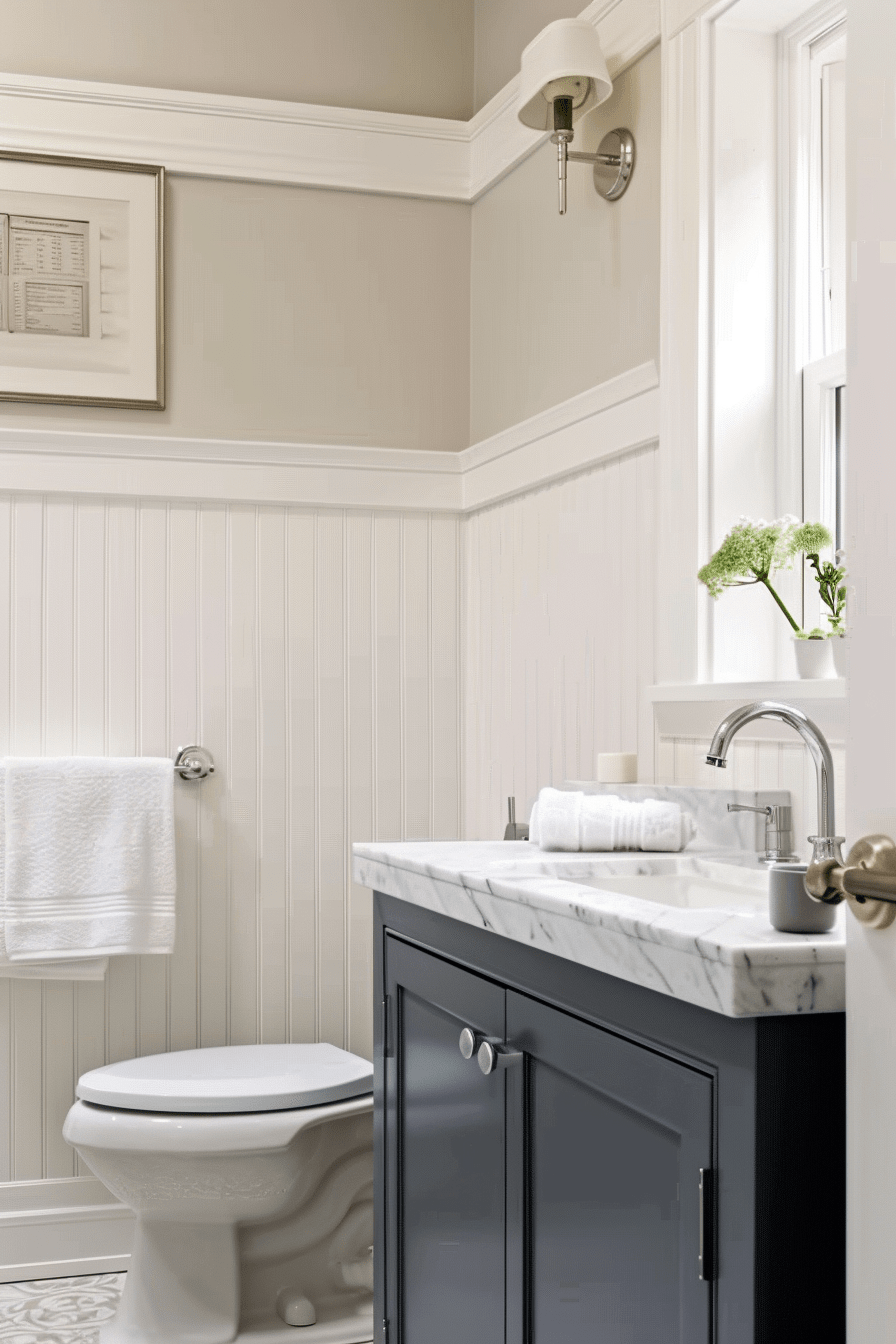
You can paint it in different shades, whether you prefer classic white or vibrant colors, making it adaptable to your home’s unique style.
12. Upholstered Wall Panels
For an ultra-luxe vibe, think about adding upholstered wall panels. 🔇
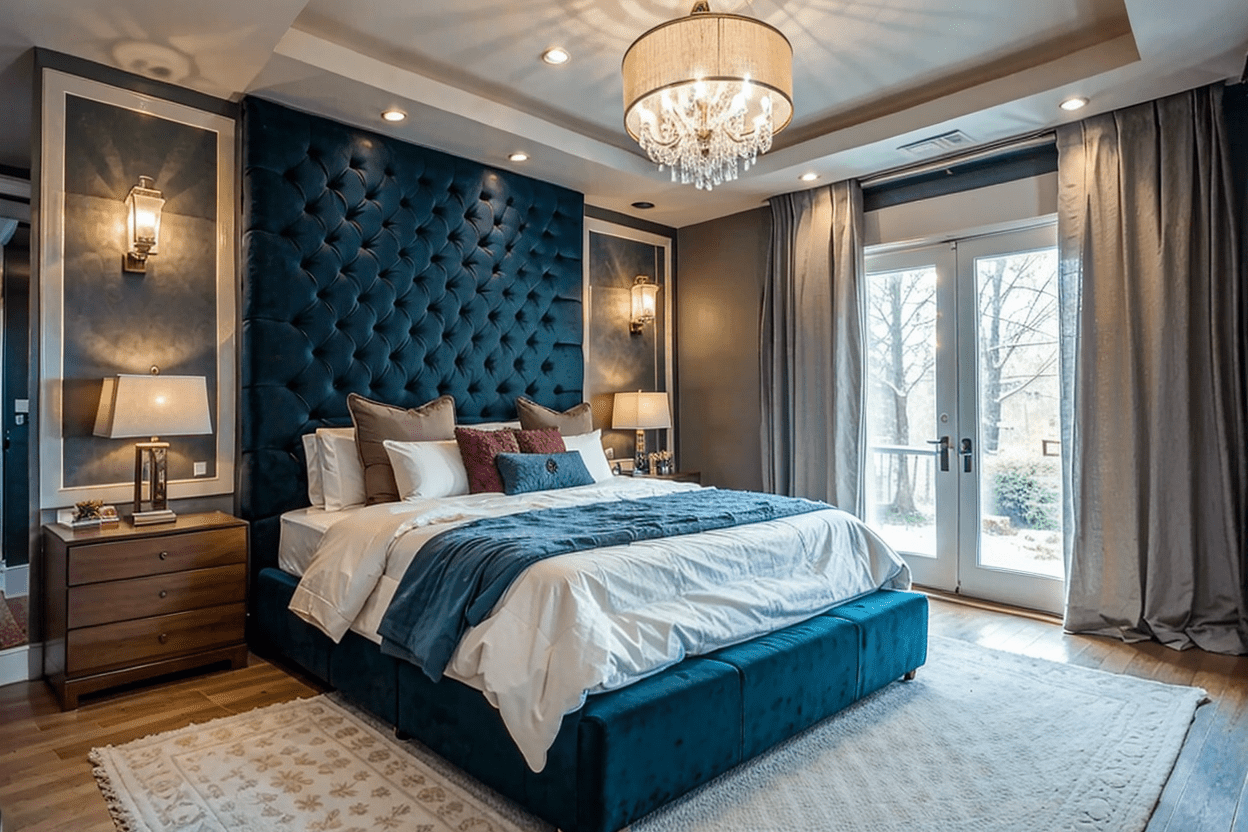
These cushy, padded surfaces inject both comfort and that high-end designer look, effortlessly transforming rooms like bedrooms or home theaters into cozy retreats.
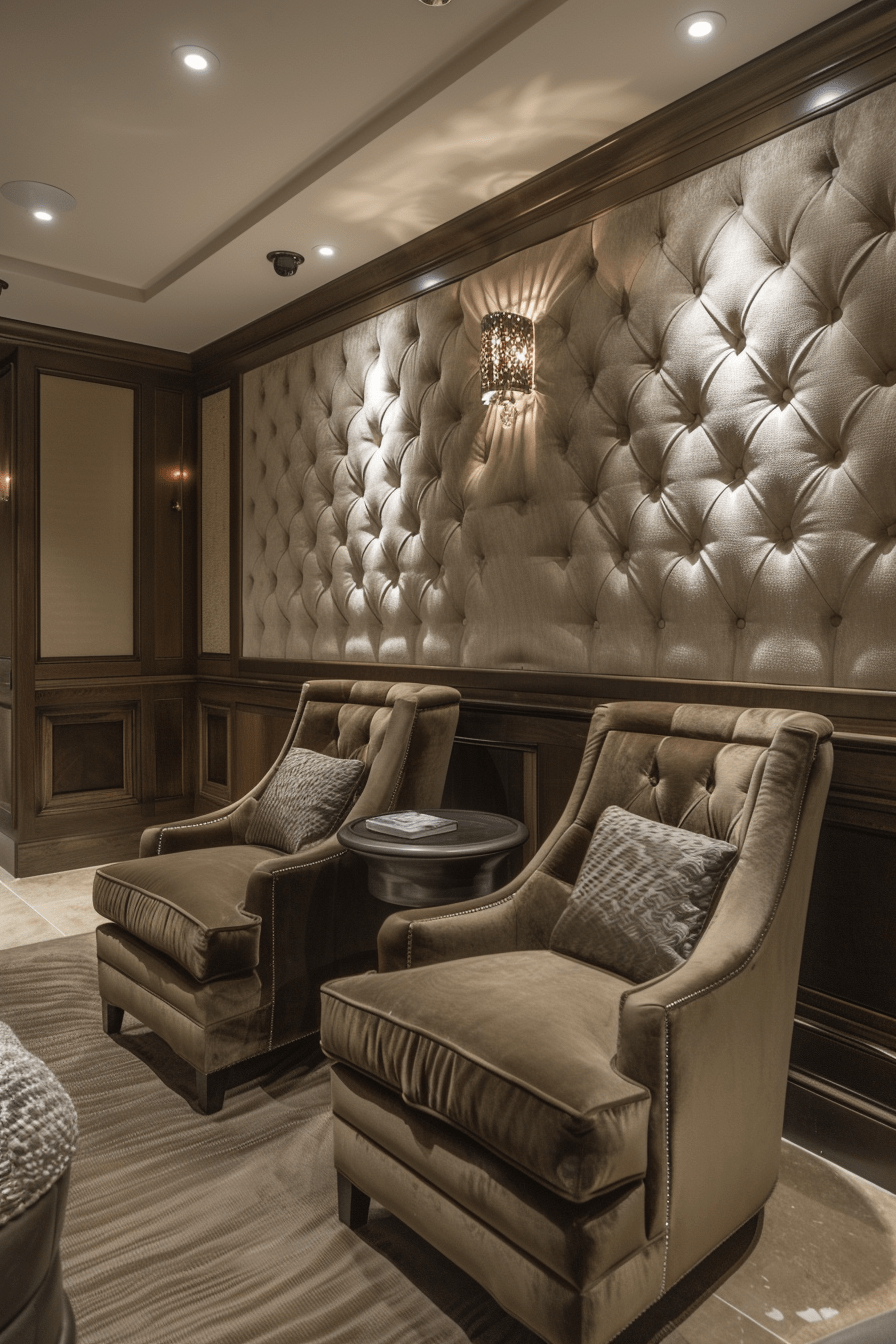
With materials ranging from plush velvets to chic linens, upholstered panels offer endless possibilities to enhance your décor.
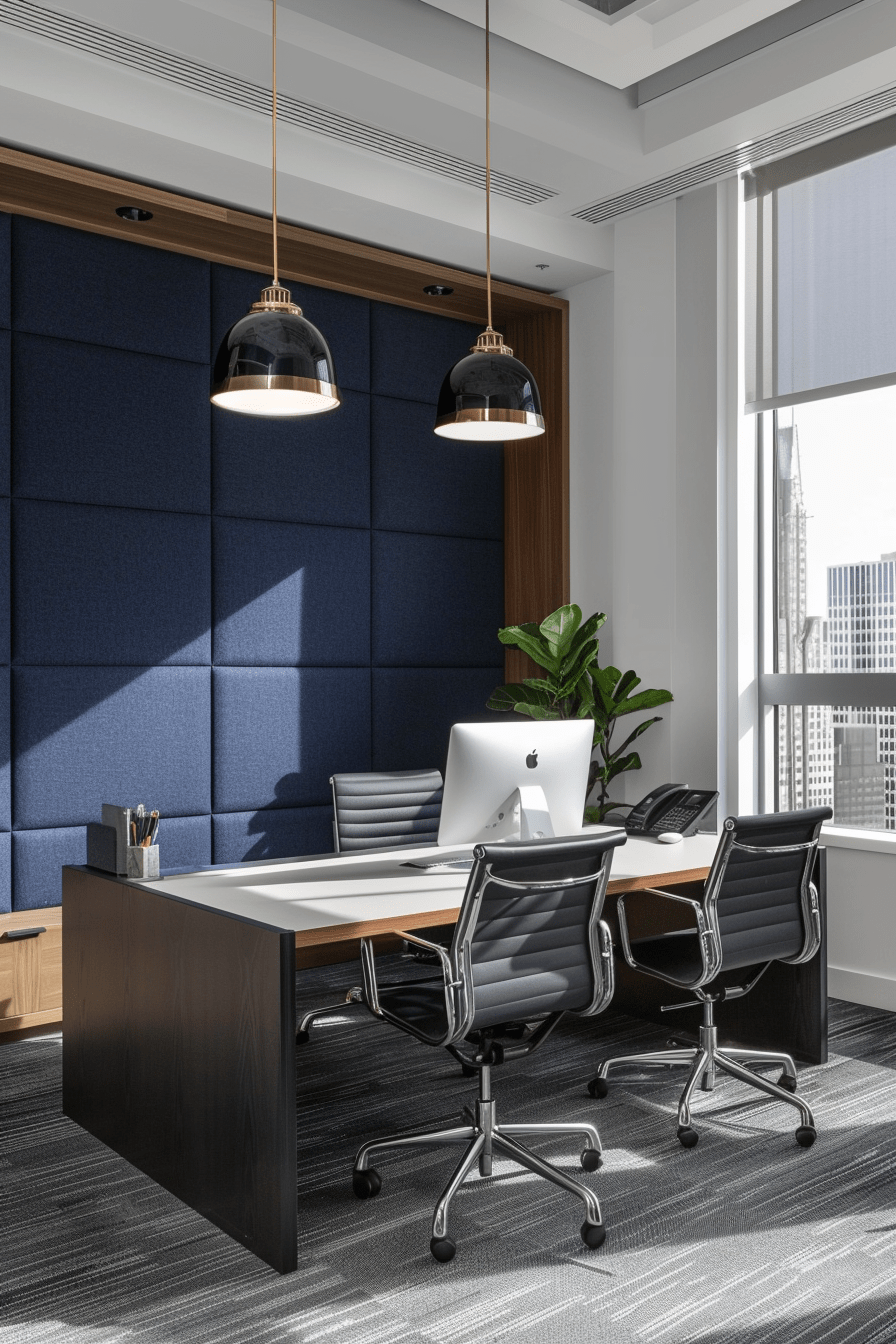
Plus, they help with soundproofing, making your space not just stylish, but quiet too.
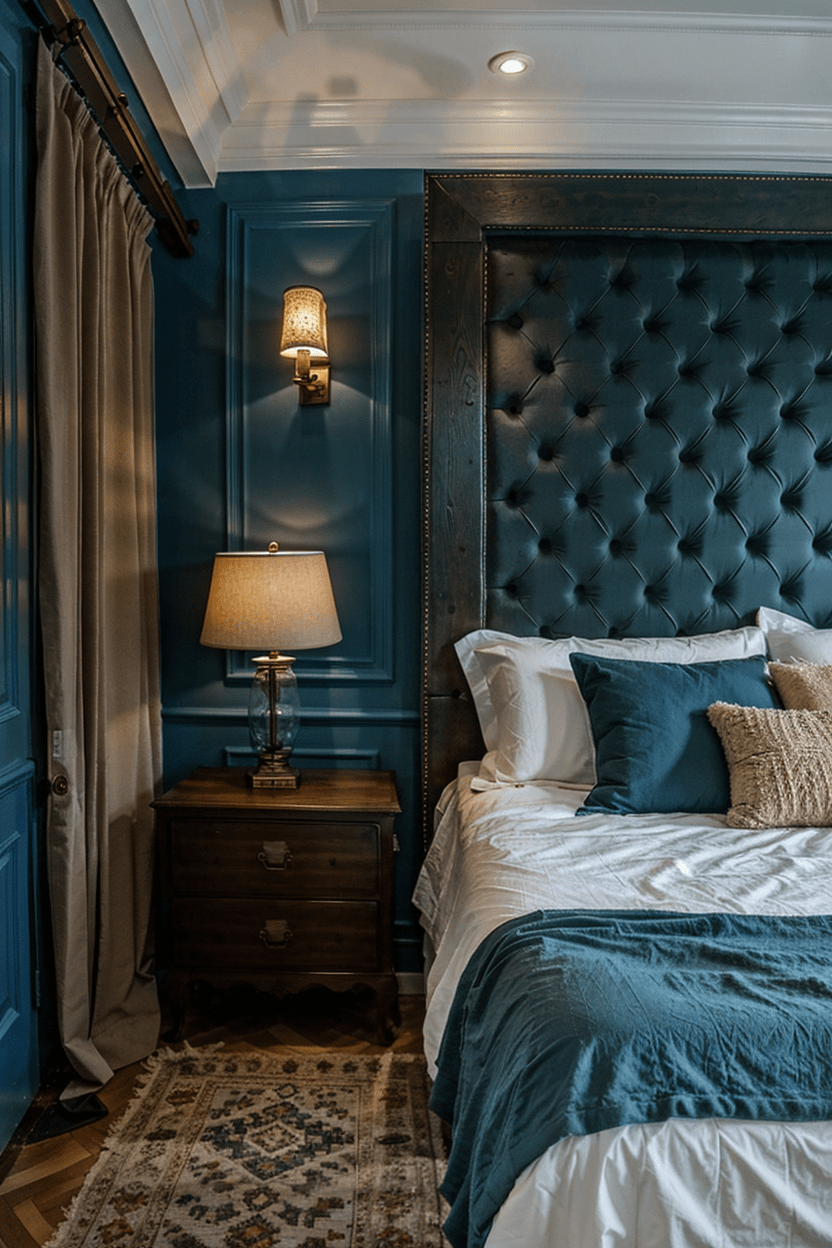
13. Painted Planks
Inject some personality and color into your walls by painting wooden planks and arranging them in unique patterns.
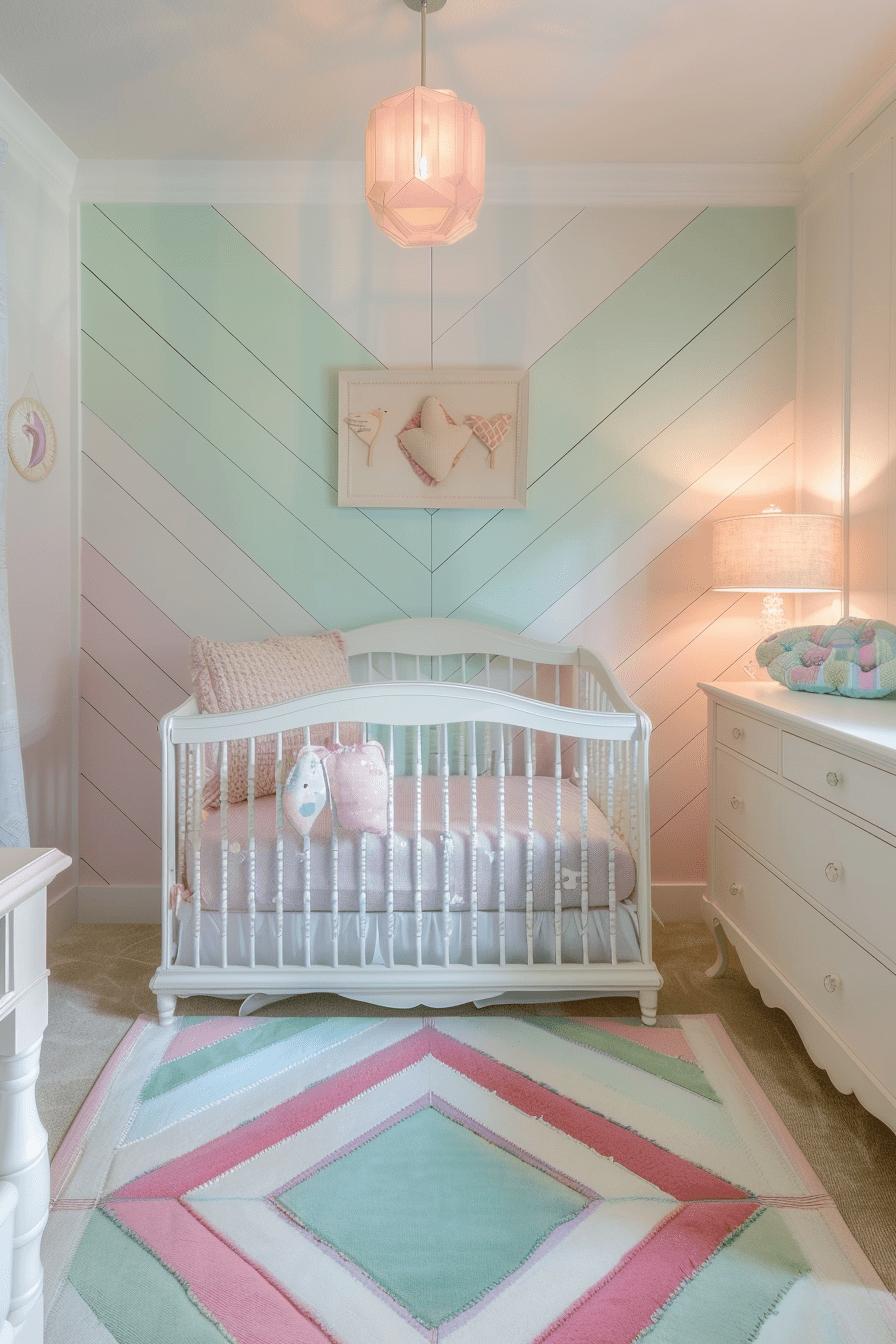
This wall paneling idea can really make your space pop with a vibrant, one-of-a-kind vibe.
It’s especially great for kids’ rooms or creative studios where a lively and playful atmosphere is key.
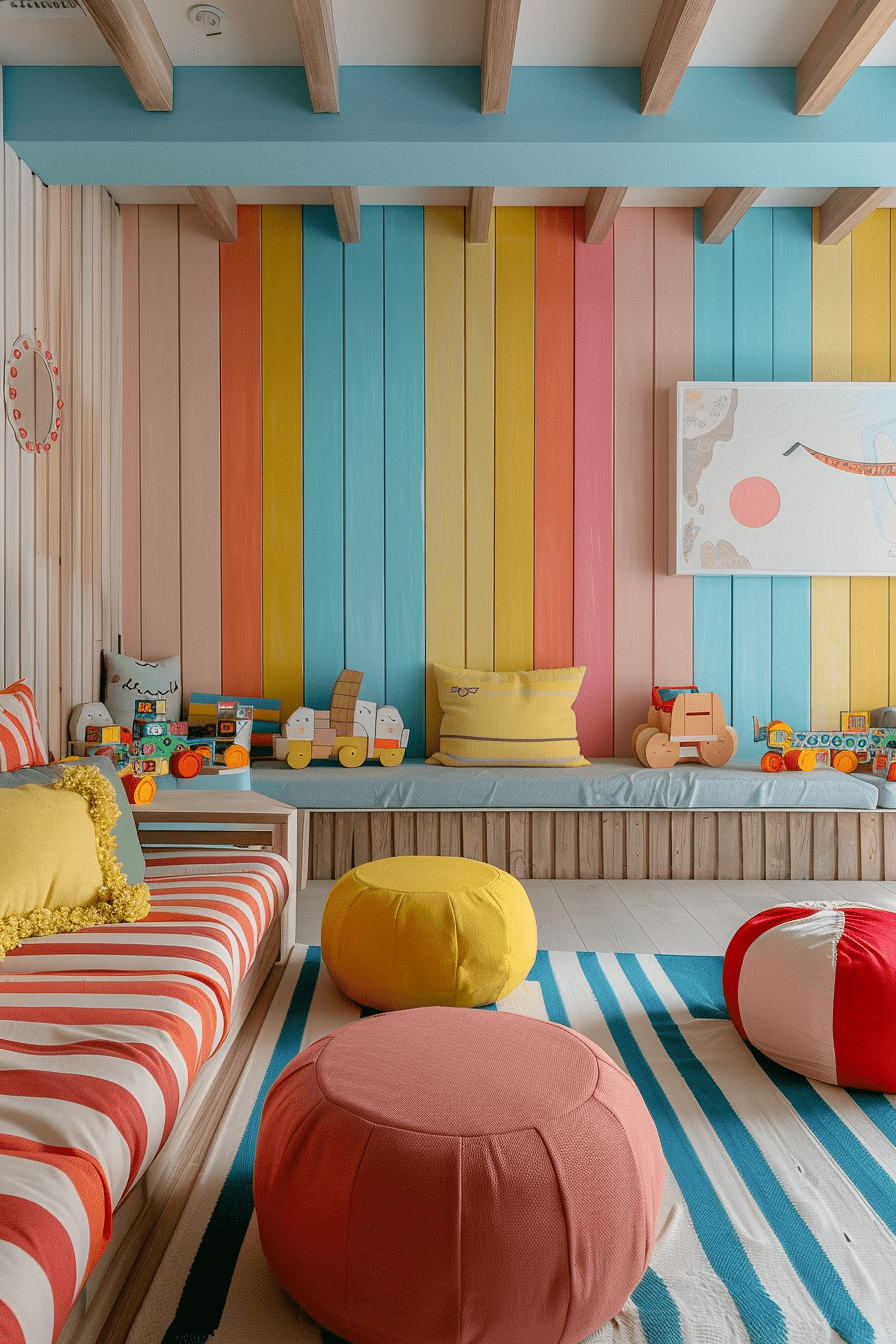
Customize the hues and designs to perfectly match your own style and taste.
14. Mirrored Panels
Mirrored wall panels can really open up a smaller room, making it look bigger and brighter while adding a glamorous touch.
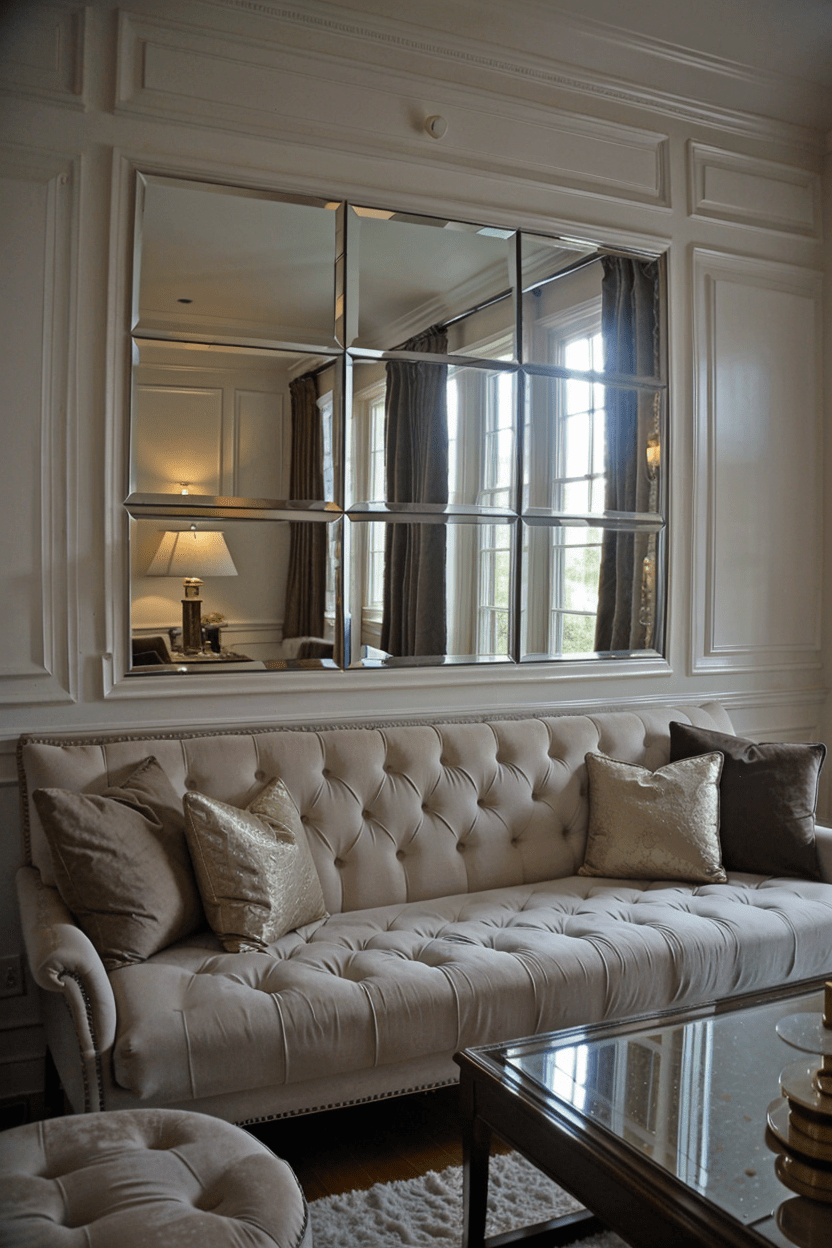
bring a sense of sophistication, perfect for transforming the vibe of a space.
You can get creative with how you arrange them—go for a full-wall mirror to really maximize brightness and that feeling of spaciousness, or try patterned designs for a unique touch.

These panels work wonderfully in rooms like entryways, living areas, or bathrooms, as they help reflect light beautifully.
15. Chalkboard Panels
Chalkboard wall panels are both fun and functional, ideal for kitchens, home offices, and kids rooms.
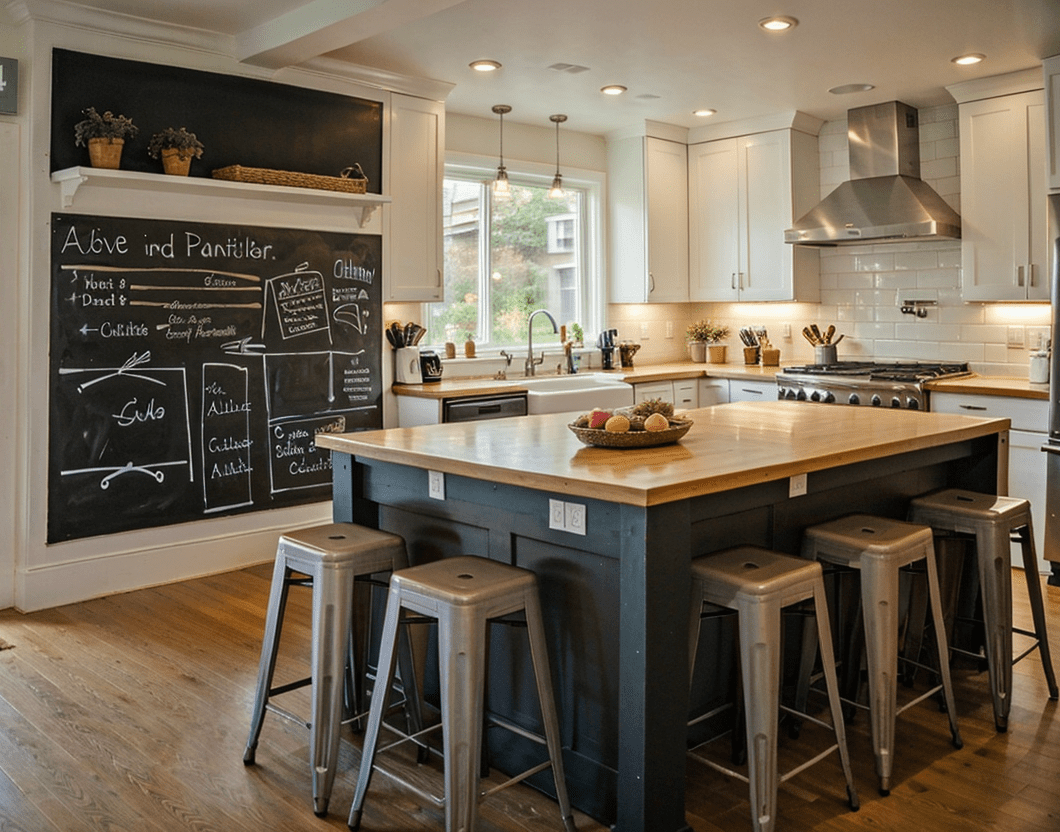
They offer a customizable surface for daily lists, to-dos, or drawings, adding a casual, family-friendly touch.
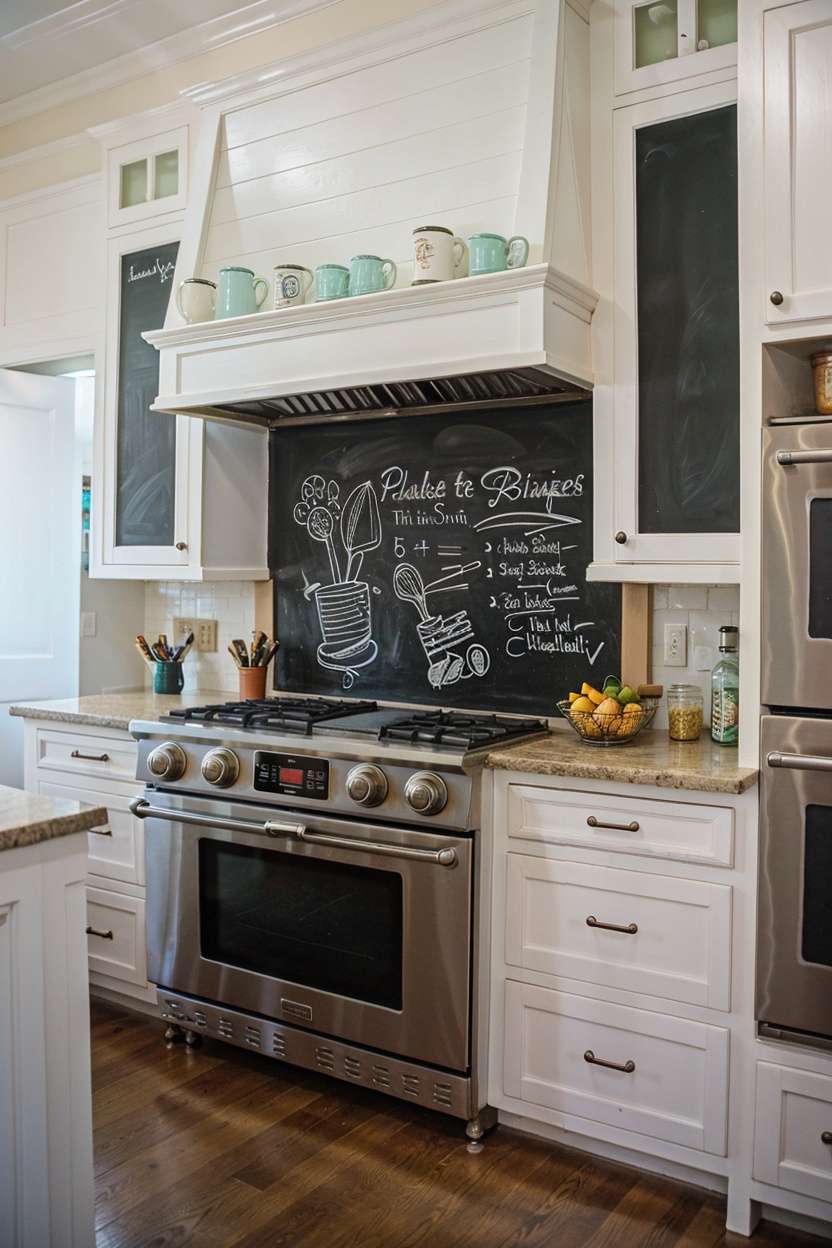
16. Chevron Pattern Panels
Chevron pattern wall panels inject a modern flair into classic designs.
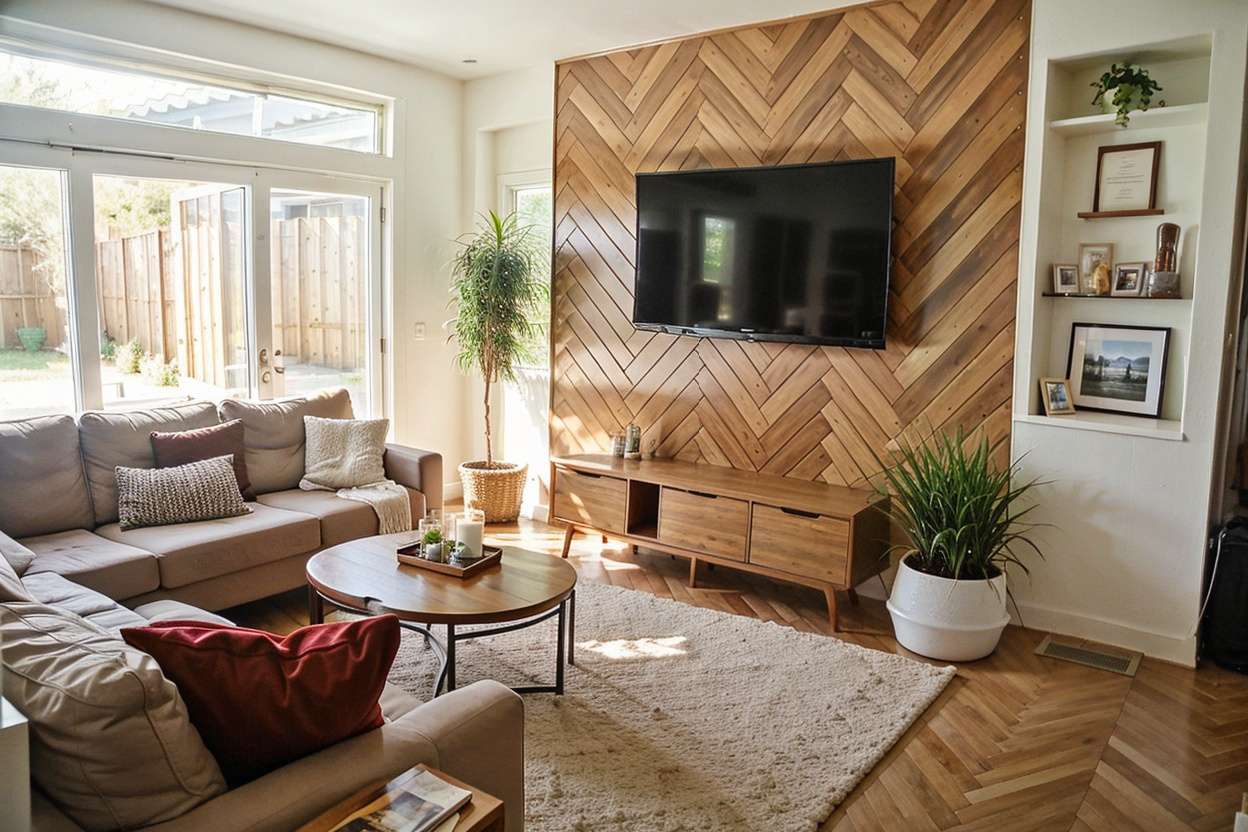
The V-shaped pattern is dynamic and captivating, making it ideal for contemporary spaces.

Go for contrasting colors if you want a bold look, or go with subtle shades for something more understated.
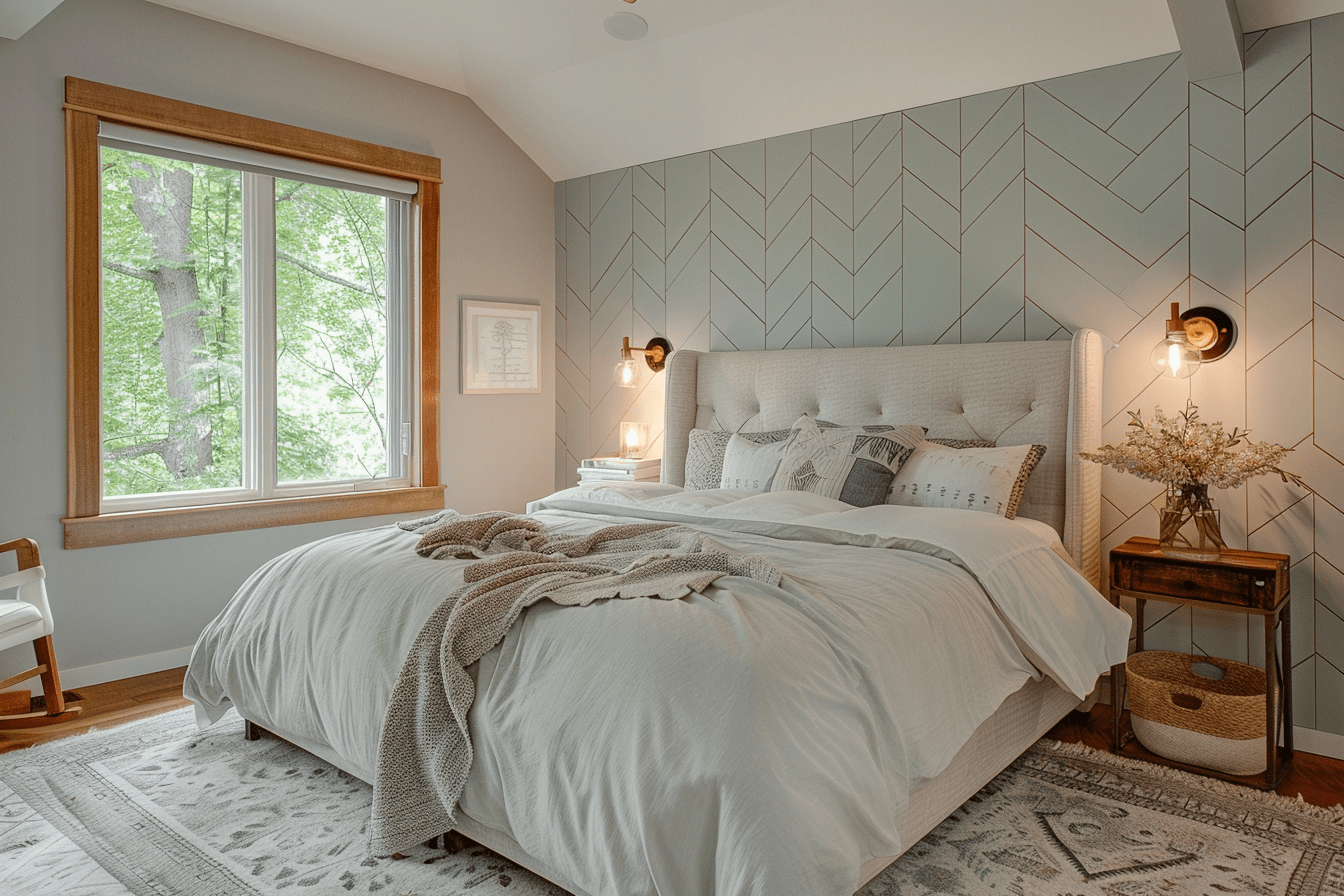
These panels are great for accent walls in living rooms, bedrooms, or entryways, offering a stylish and trendy touch that effortlessly uplifts any room.
Types of Wall Paneling
Wainscoting
Wainscoting usually features paneling on the lower section of walls, typically reaching about chair height (32 to 36 inches from the floor).
This design not only brings a touch of grace but also infuses a room with a bit of historical charm.
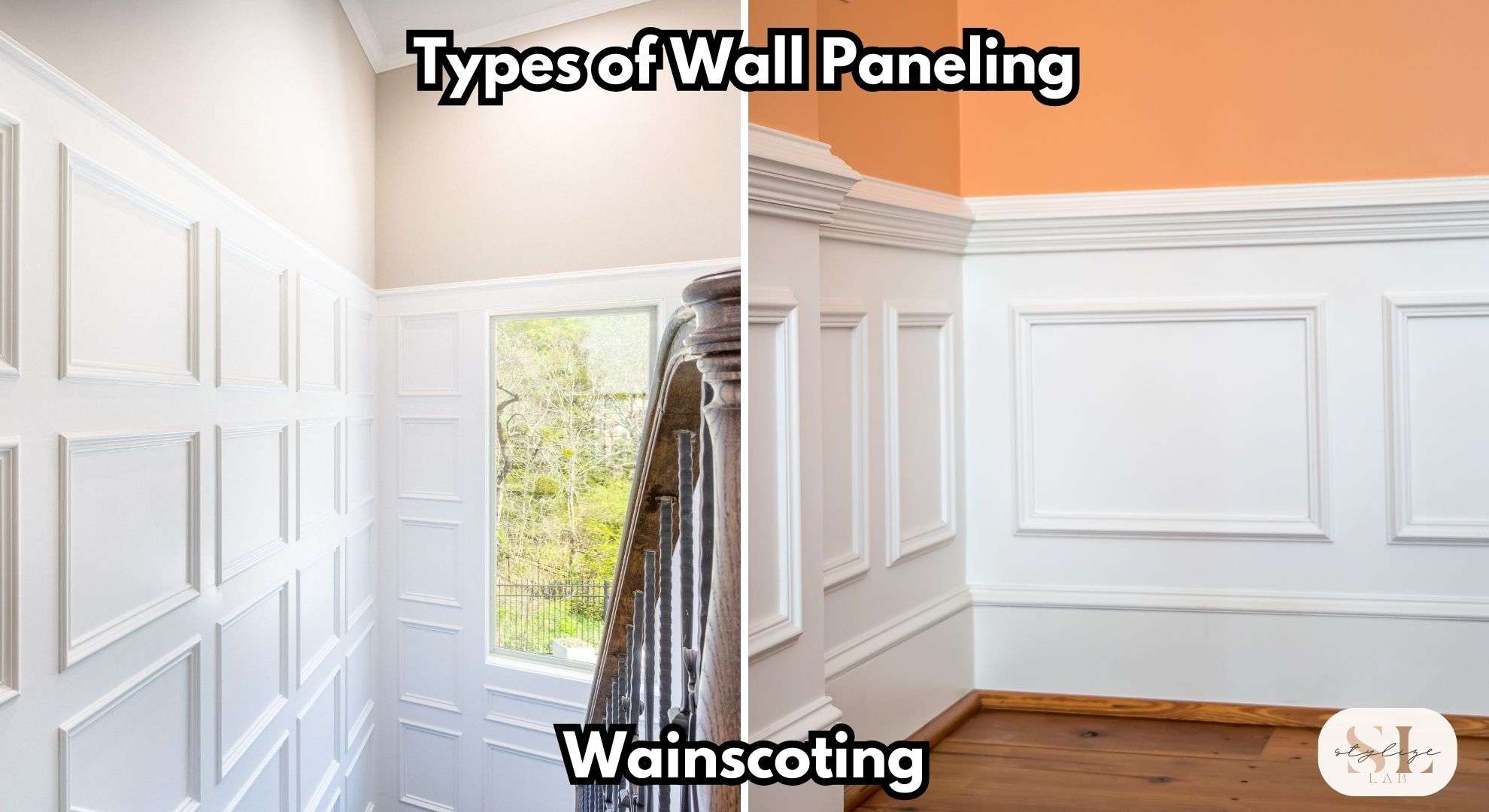
Uses & Aesthetic:
- Traditional Homes: Often found in dining rooms, hallways, and living rooms.
- Elegance and Protection: Besides its decorative appeal, wainscoting also protects walls from damage.
- Variety: Can range from very simple designs with flat panels to more intricate styles with raised panels and molding.
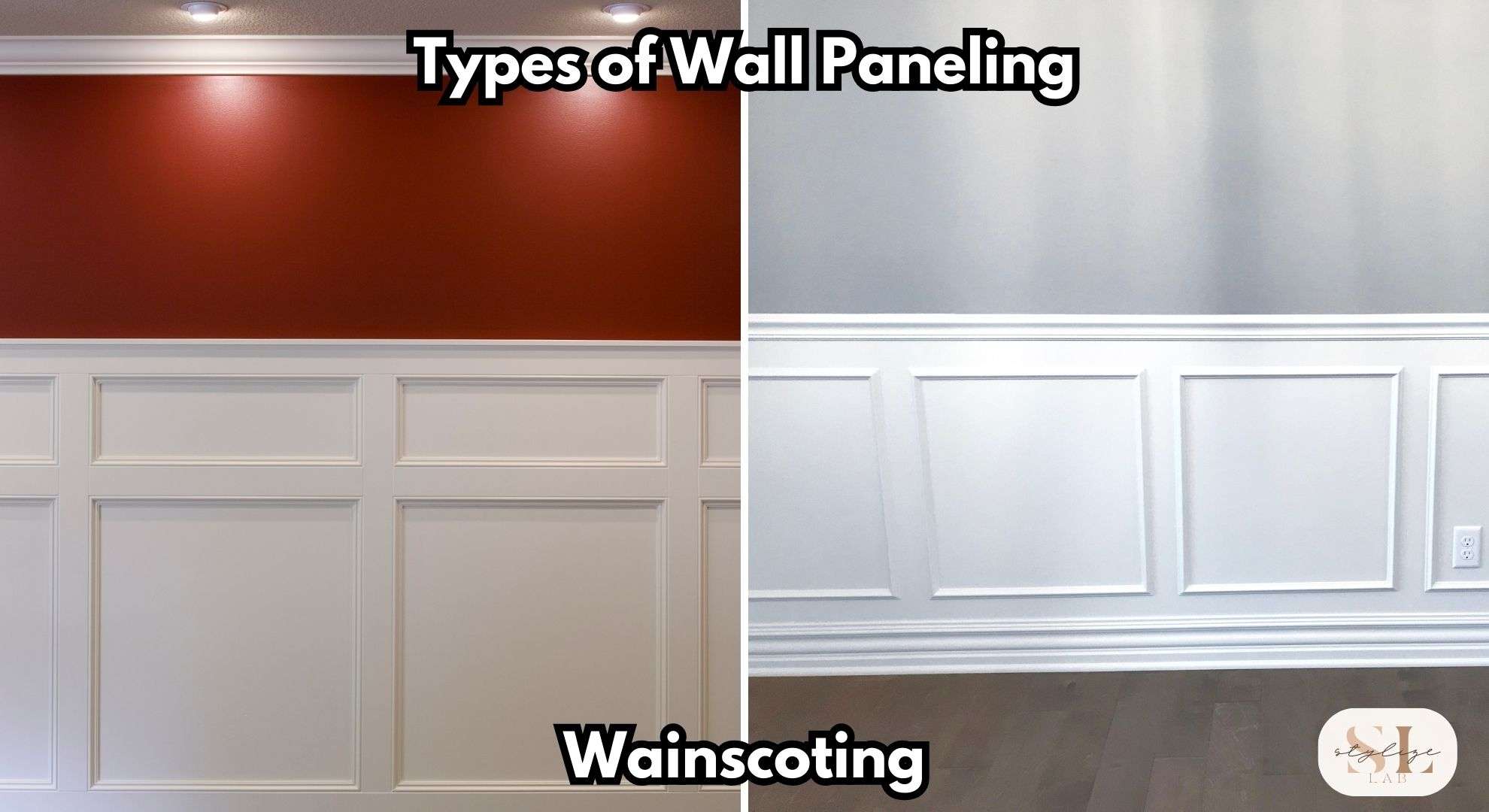
Materials:
- Wood: Preferred for its authentic and warm look.
- MDF: An affordable alternative that can be painted.
- PVC: Useful in damp areas, like bathrooms, where wood might warp.
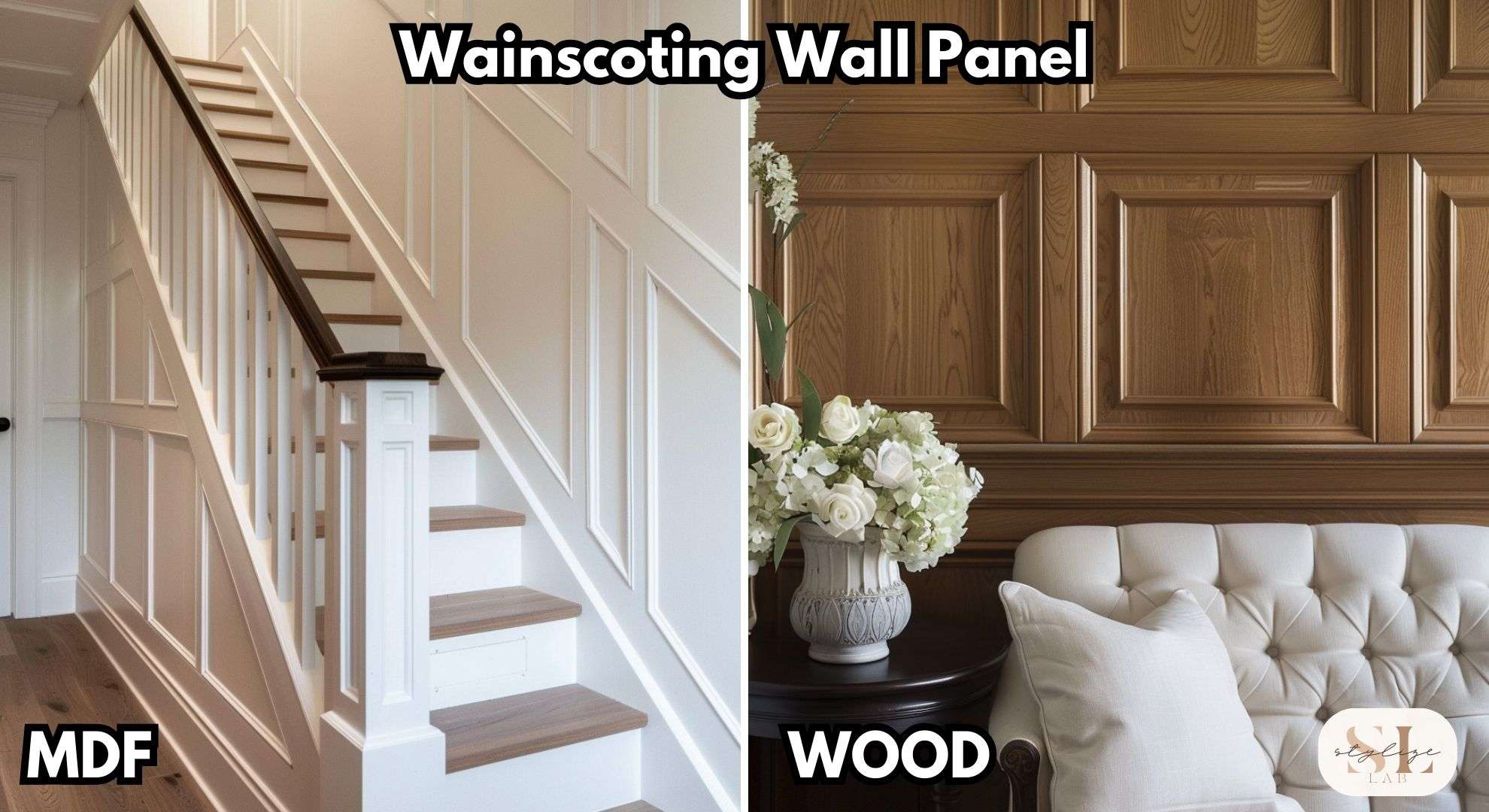
Installation Tips:
- Make sure to measure the height consistently around the room.
- Use a level to ensure that the panels are straight.
- Finish with trim or molding for a polished look.
Shiplap
Shiplap features long, flat boards that overlap a bit, forming unique gaps between them.
It originally served maritime purposes but has found newfound love in home design due to its neat lines and charming rustic look.
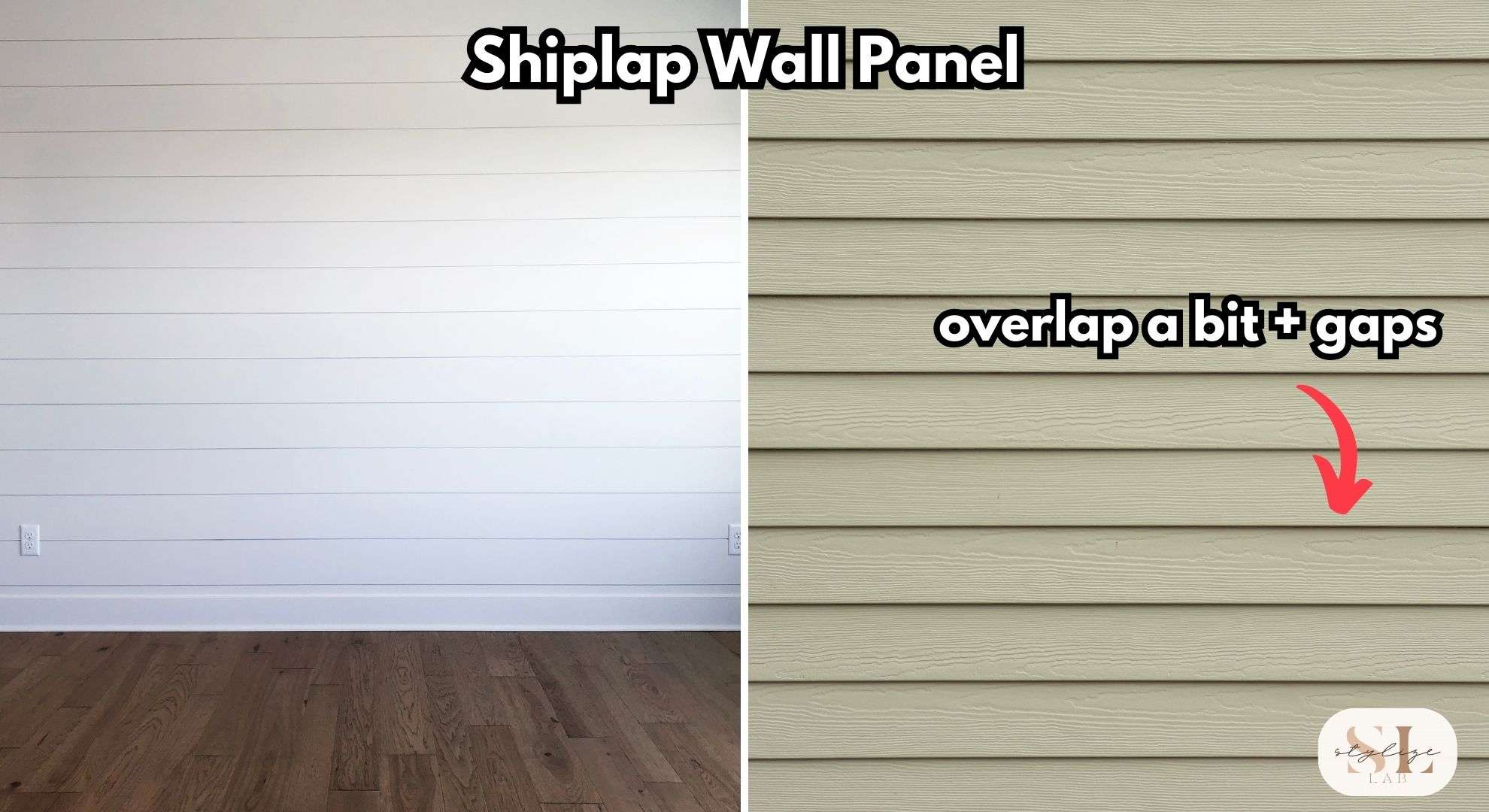
Uses & Aesthetic:
- Farmhouse Style: Commonly used in farmhouse and coastal-style interiors.
- Versatility: Suitable for accent walls, entire rooms, or even ceilings.
- Texture: Adds a rich, textural element to otherwise plain walls.
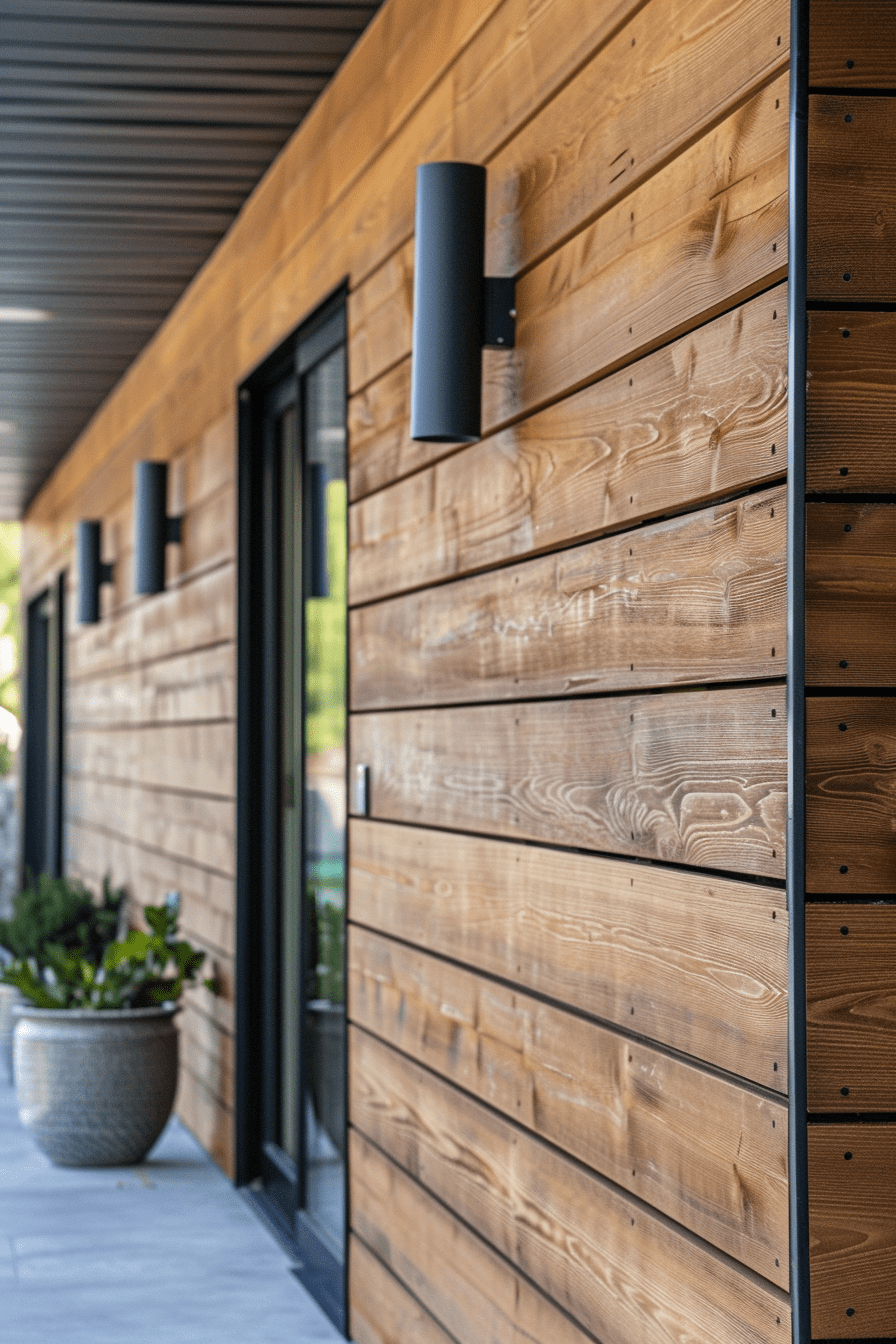
Materials:
- Wood: Creates a warm, authentic look.
- MDF: Provides a more budget-friendly option with a similar visual impact.
- PVC: Ideal for bathrooms and kitchens where humidity is a concern.
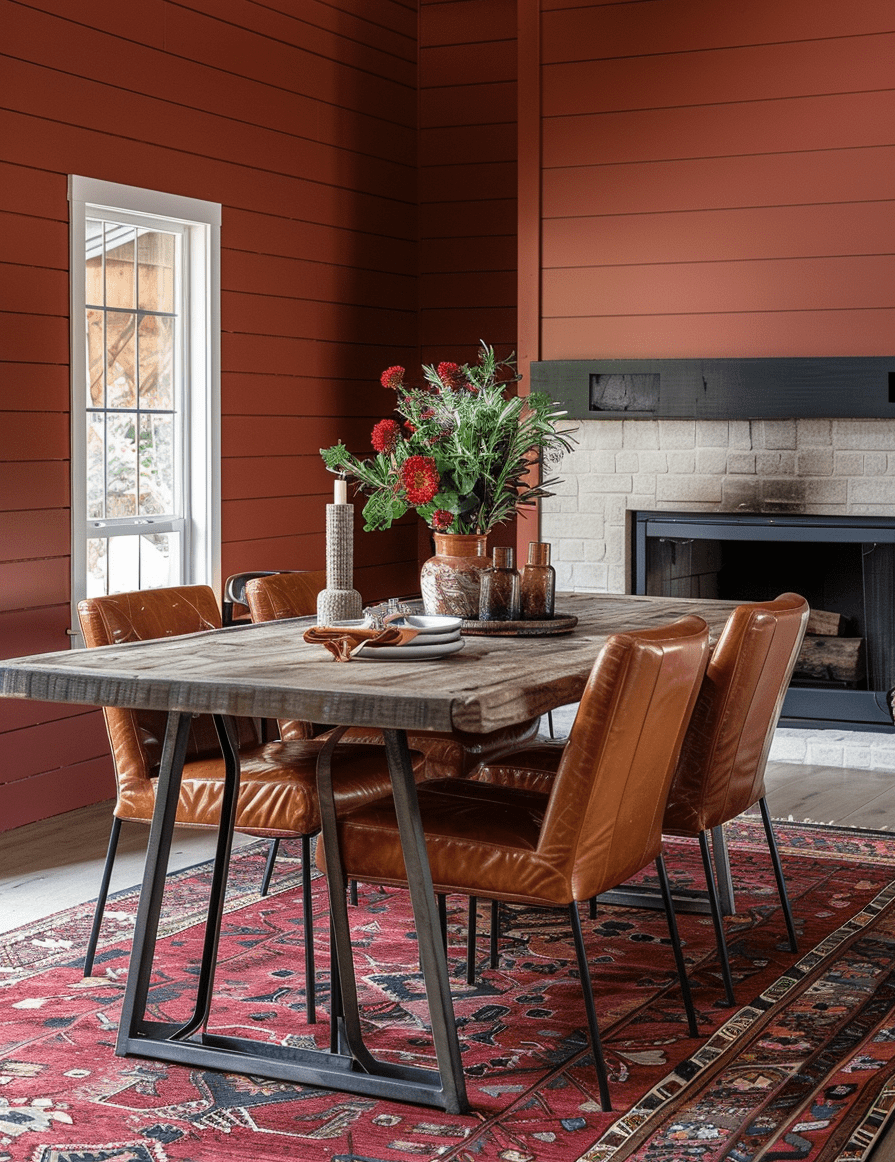
Installation Tips:
- Stagger the boards to avoid aligning the seams.
- Paint or stain the boards before installation to ensure even coverage.
- Use spacers to maintain consistent gaps between the boards.
Board and Batten
Board and batten is a straightforward but effective style involving wide boards (panels) separated by smaller, vertical battens, creating a rhythmic pattern on the wall.
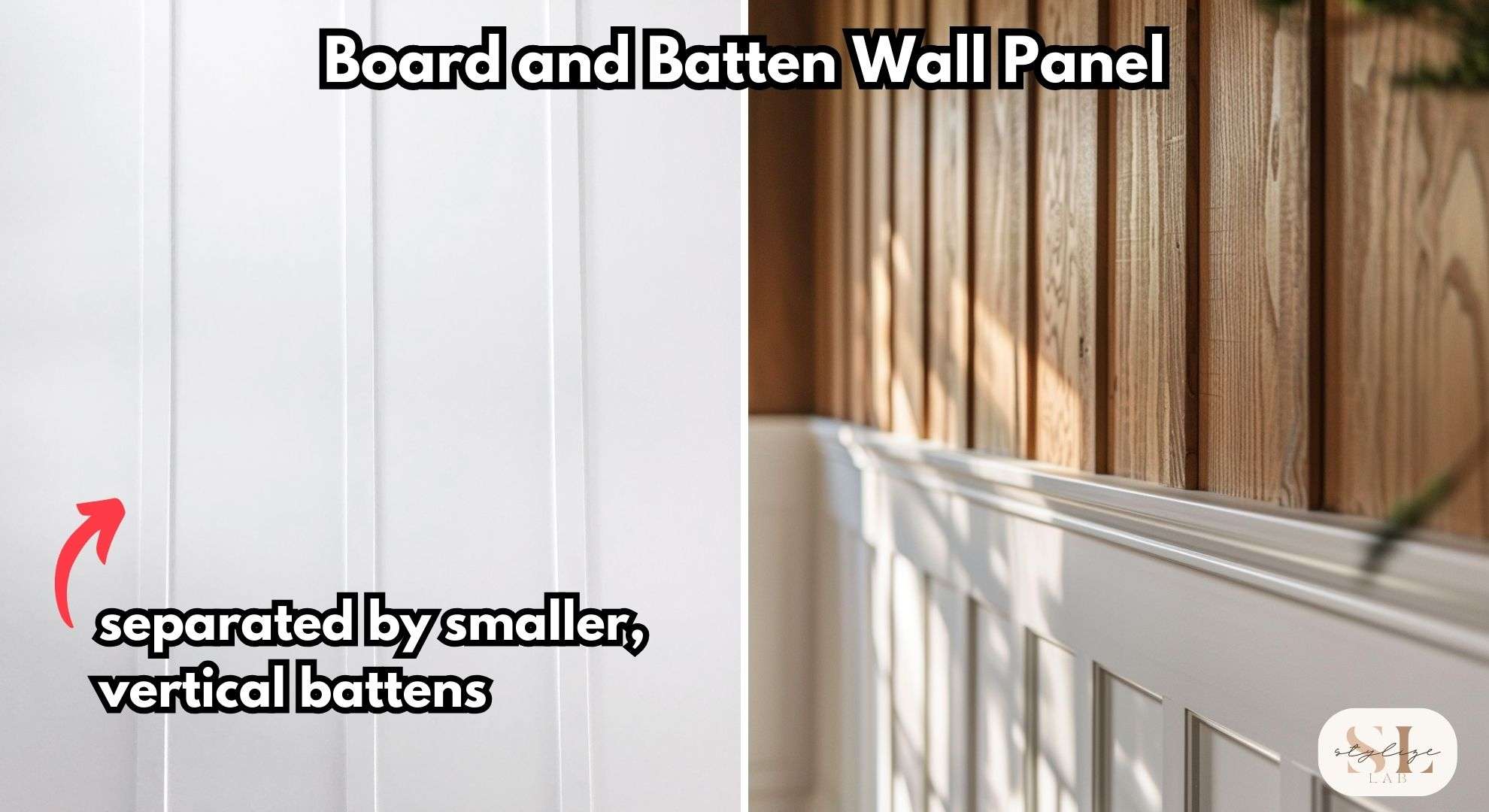
Uses & Aesthetic:
- Rustic and Colonial Homes: Best known for a rustic or colonial appeal, often used in country homes.
- Exterior and Interior: Can be used both indoors and on exteriors.
- Defined Lines: The vertical battens add height and structure to a space.
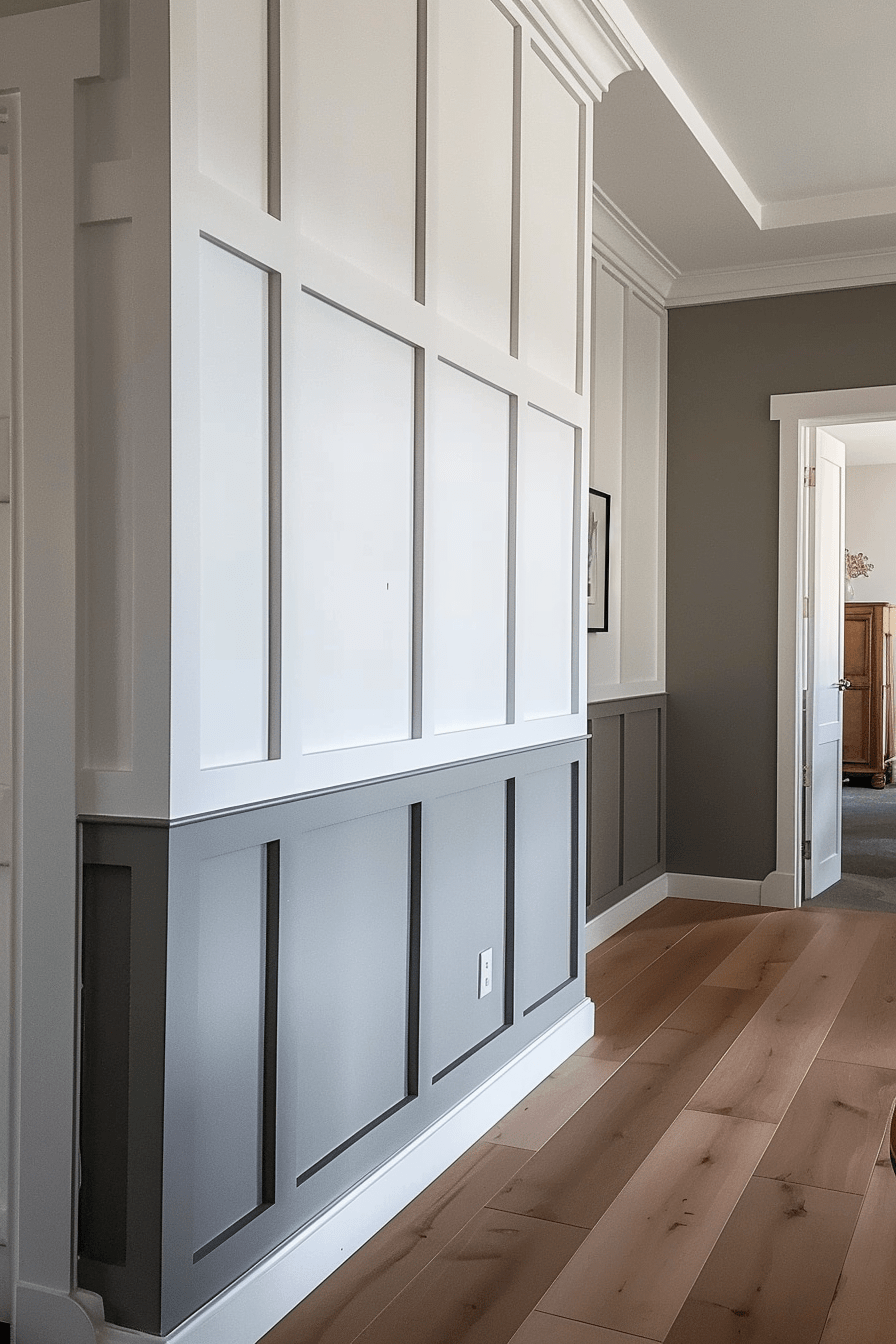
Materials:
- Wood: Traditional material for a genuinely rustic look.
- MDF: Easier to install and paint, more cost-effective.
- Composite Materials: For better weather resistance if used outdoors (good option).
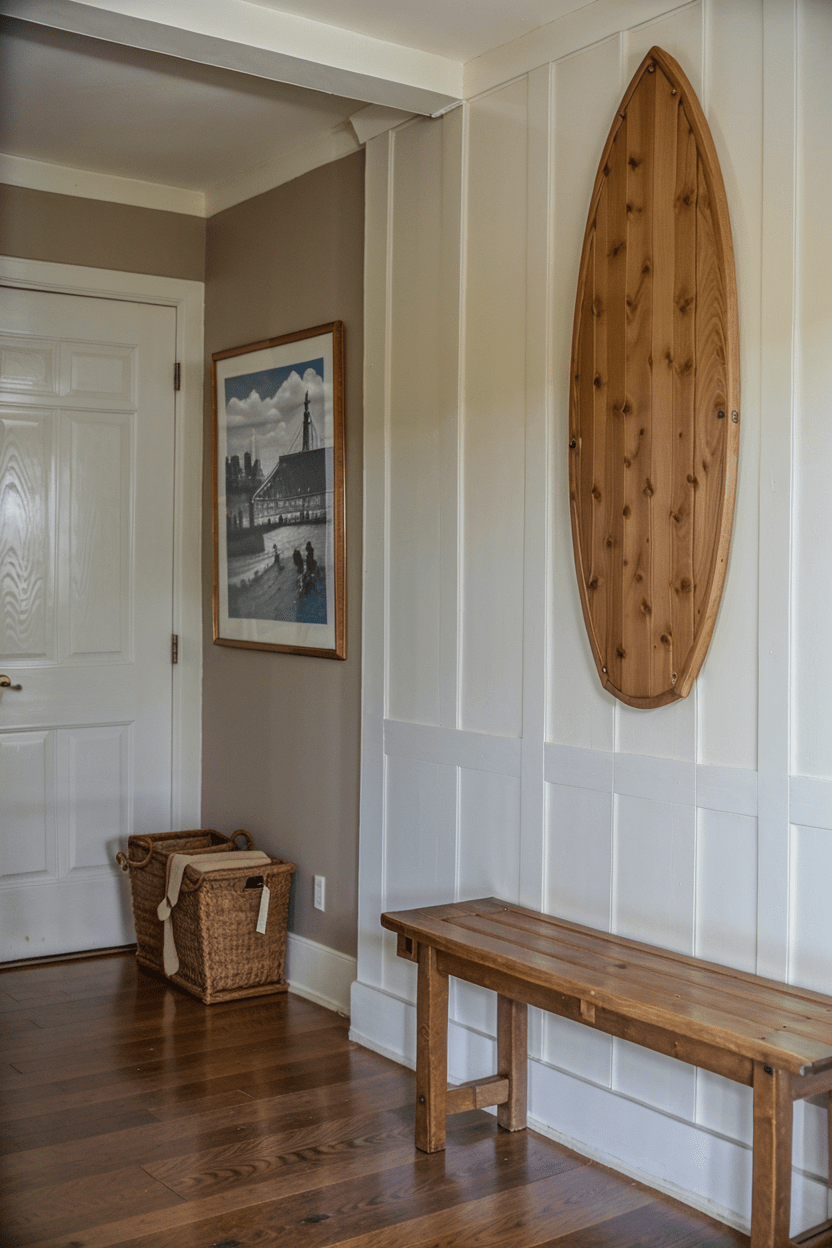
Installation Tips:
- Install the wide boards first and then place the battens.
- Measure and cut battens to ensure they align perfectly.
- Consider painting battens a different color for a two-tone effect. 🎨
3D Panels
3D panels are modern, textured panels that add depth and dimension to walls.
They come in various patterns, from geometric shapes to organic, flowing designs.
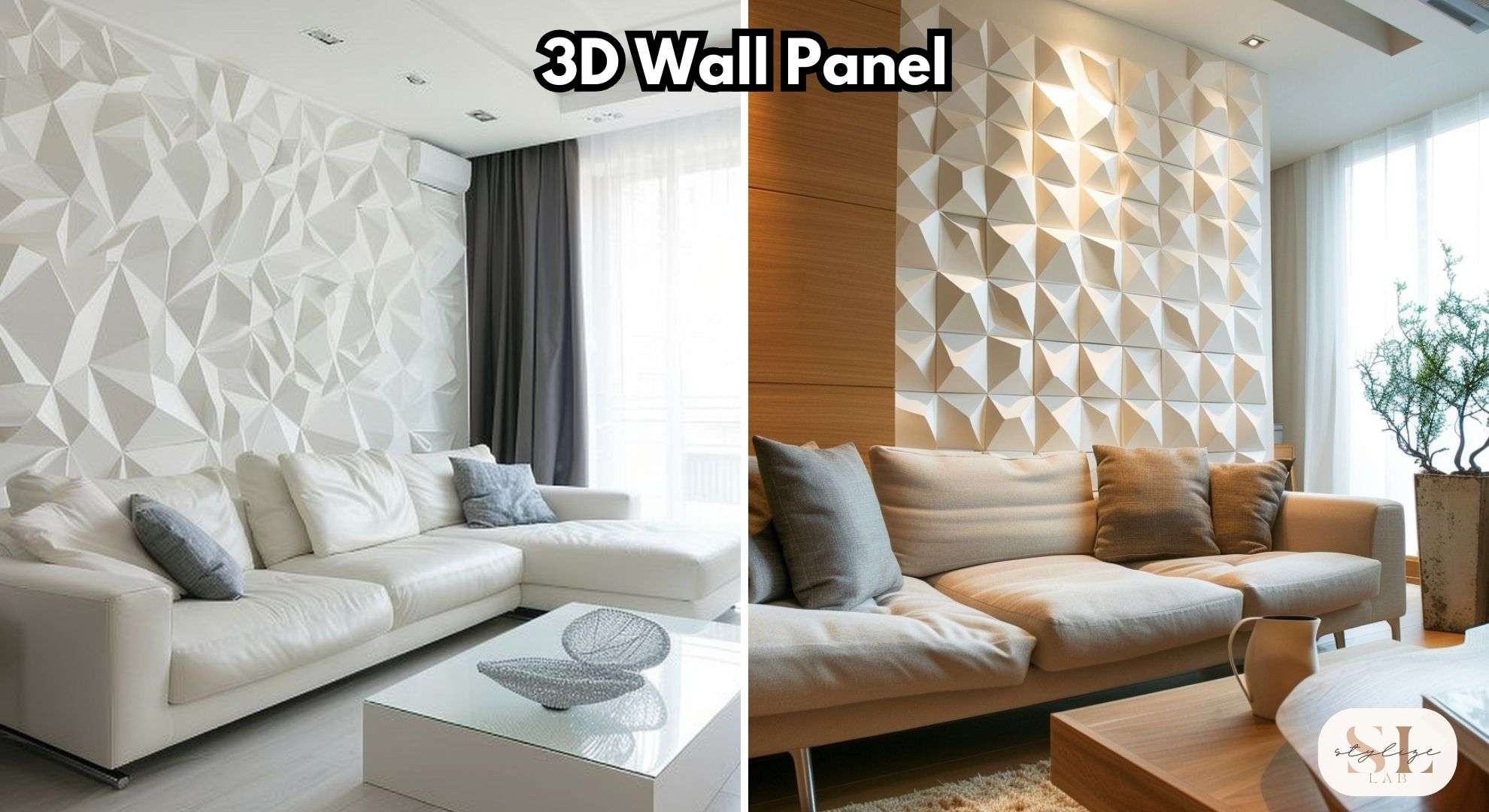
Uses & Aesthetic:
- Modern and Contemporary Spaces: Ideal for creating eye-catching focal points.
- Accent Walls: Perfect for a single wall to draw attention and add interest.
- Texture and Depth: Adds a dynamic element to otherwise flat walls.
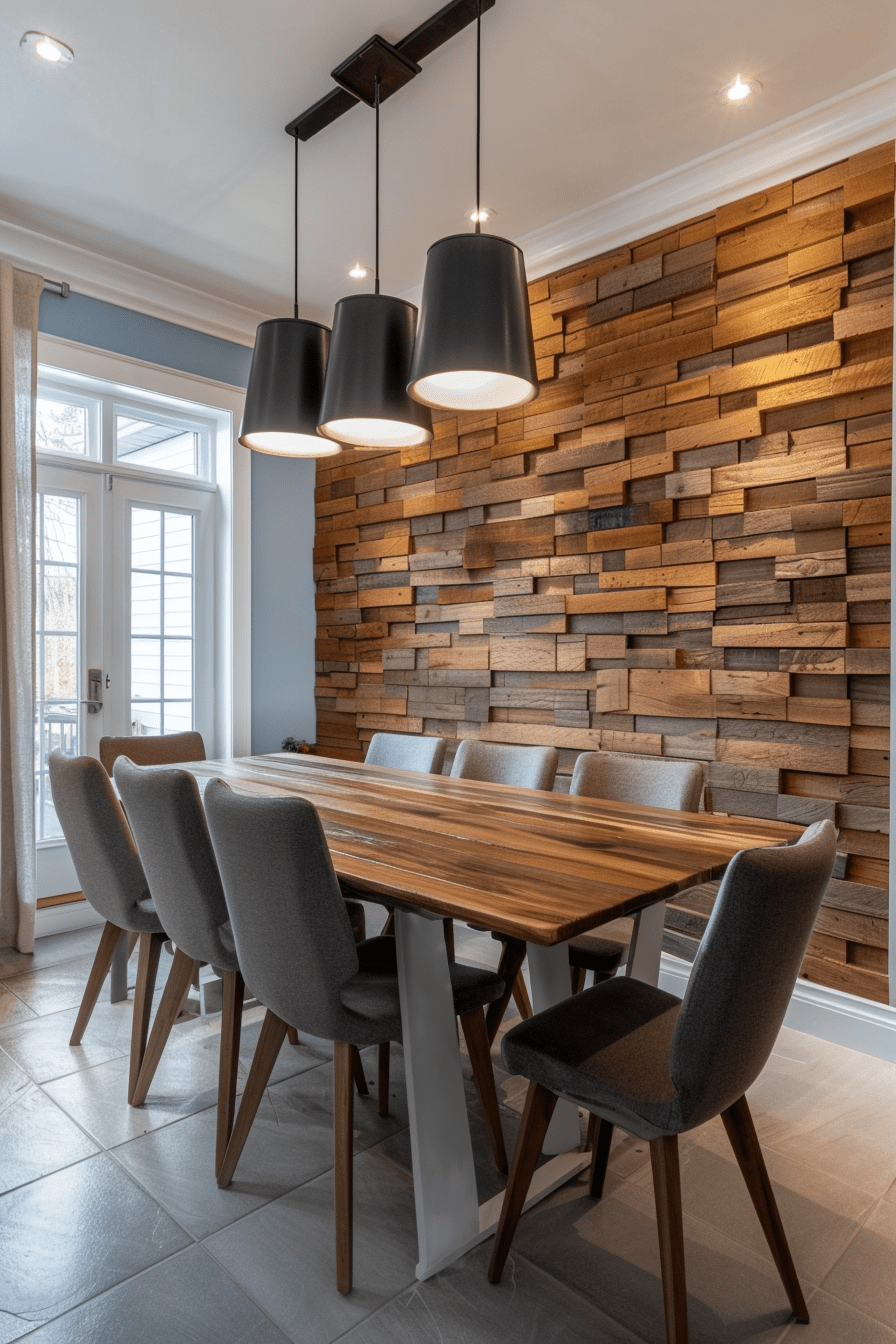
Materials:
- MDF: Allows for intricate designs and easy painting.
- PVC or Plastic: Lightweight and durable, great for varied applications.
- Natural Materials: Such as bamboo or wood composites for an eco-friendly option.
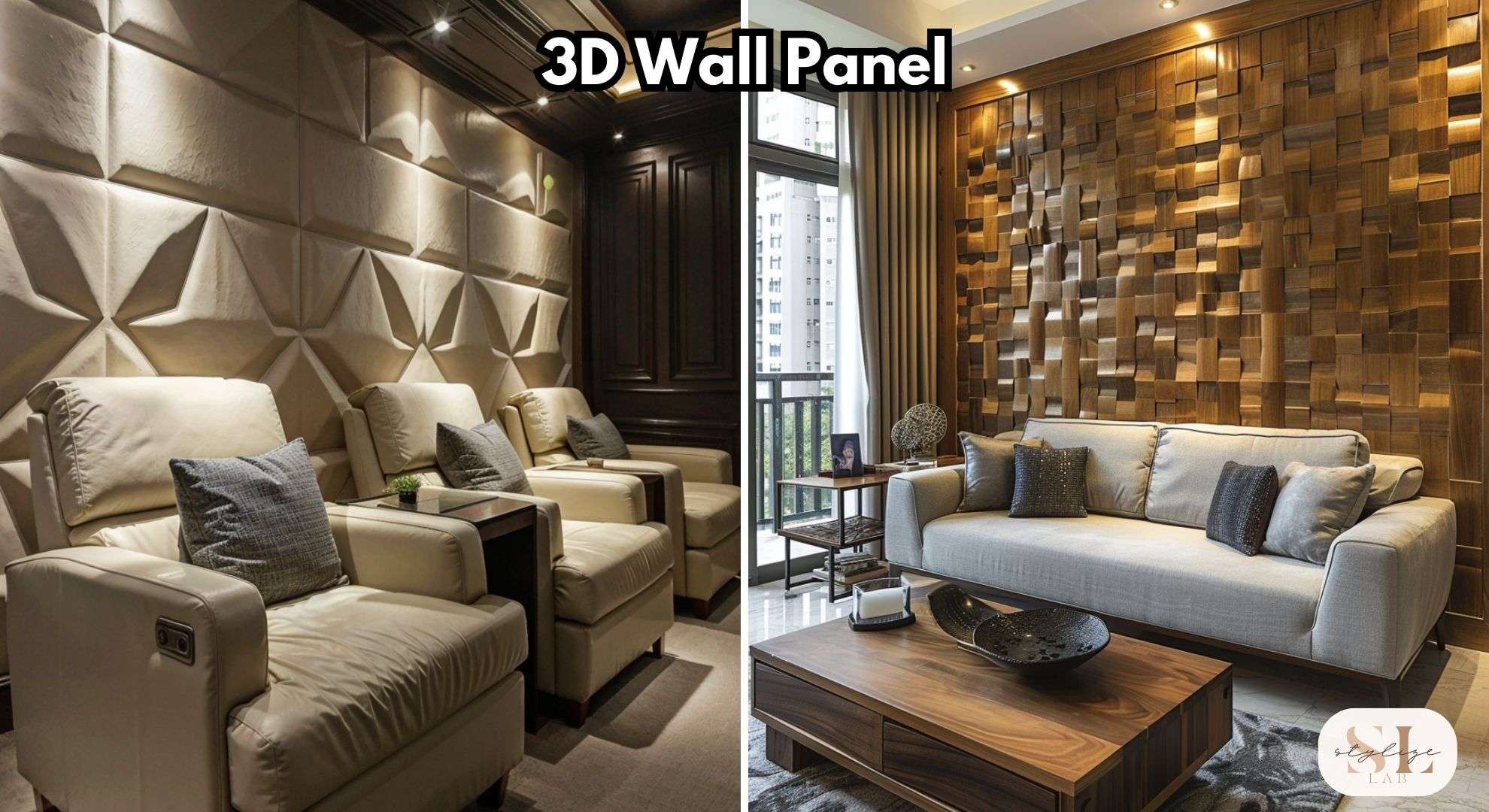
Installation Tips:
- Plan the layout to ensure the pattern aligns correctly.
- Use appropriate adhesive for secure attachment.
- Paint or finish after installation to achieve the desired look.
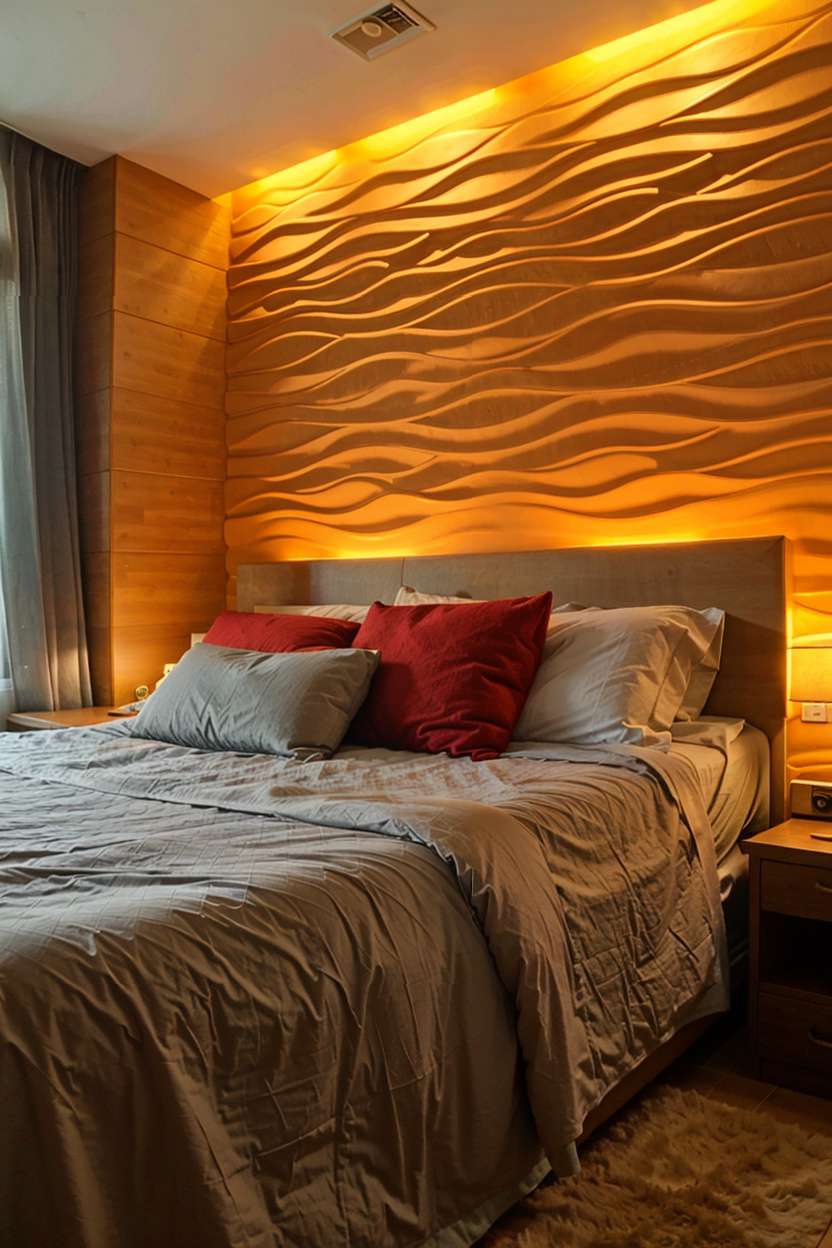
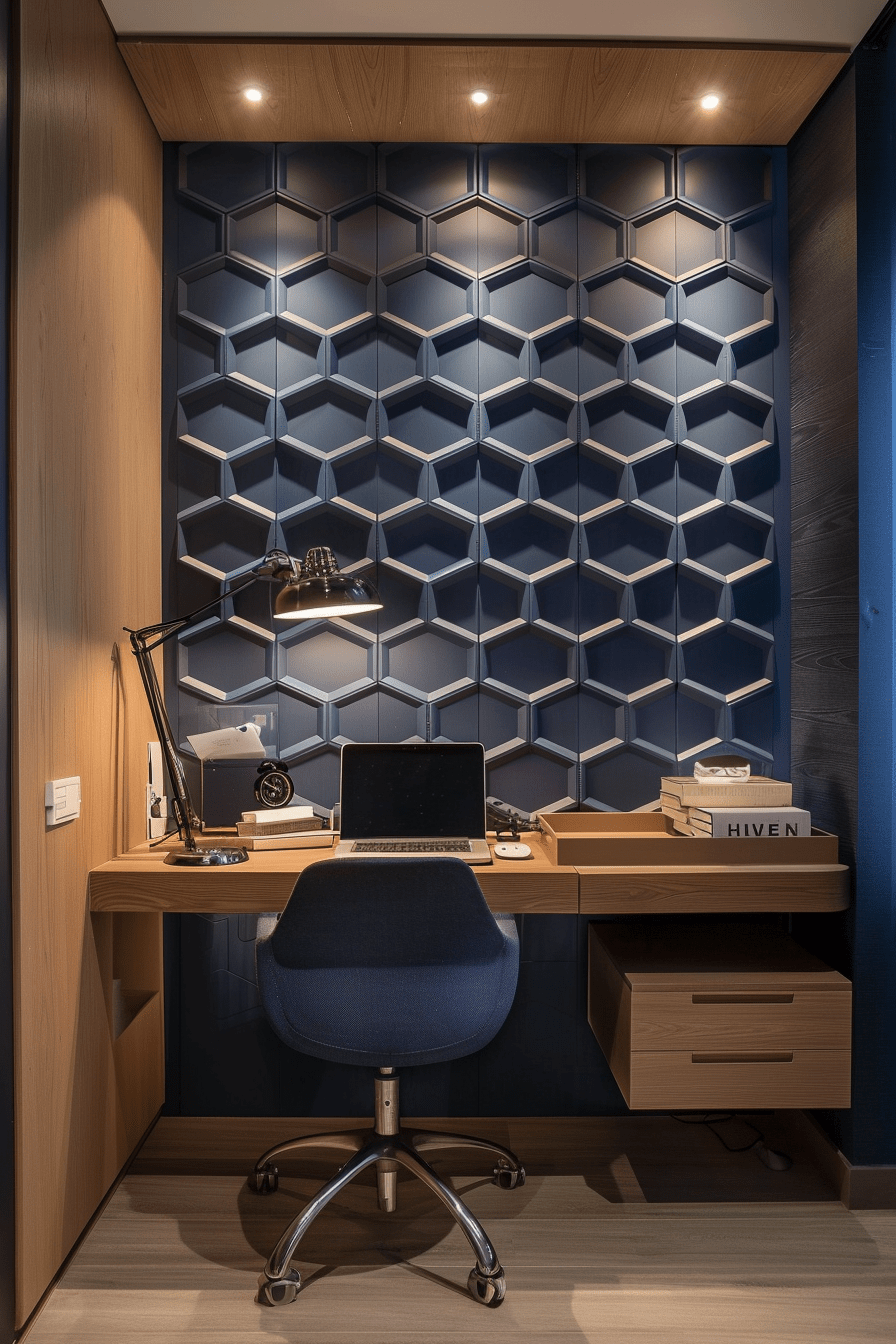
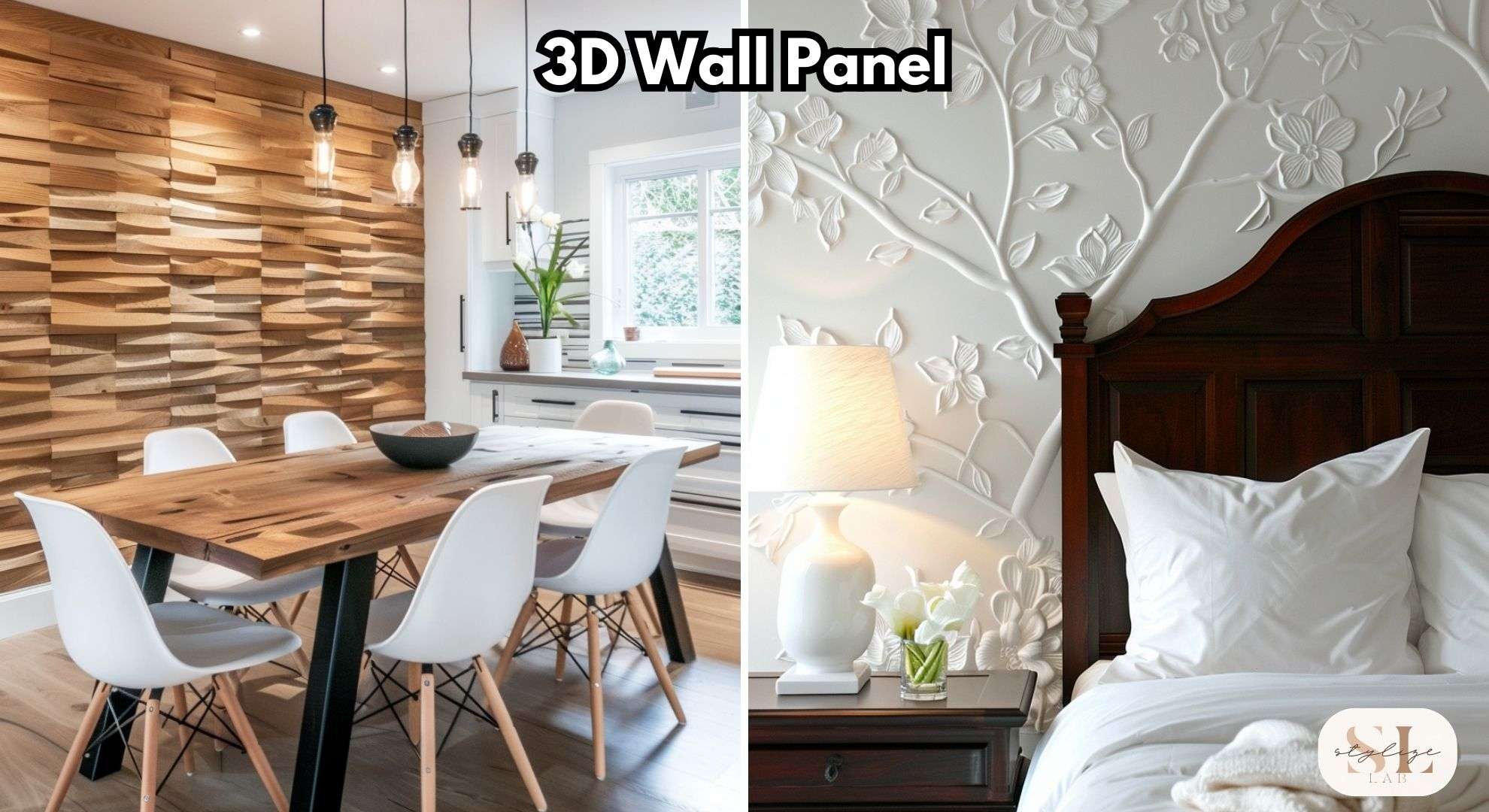
Materials
Gypsum
Gypsum panels, you may know as drywall, created by layering plaster between sturdy sheets of paper.
A lightweight, hassle-free solution for wall installations.
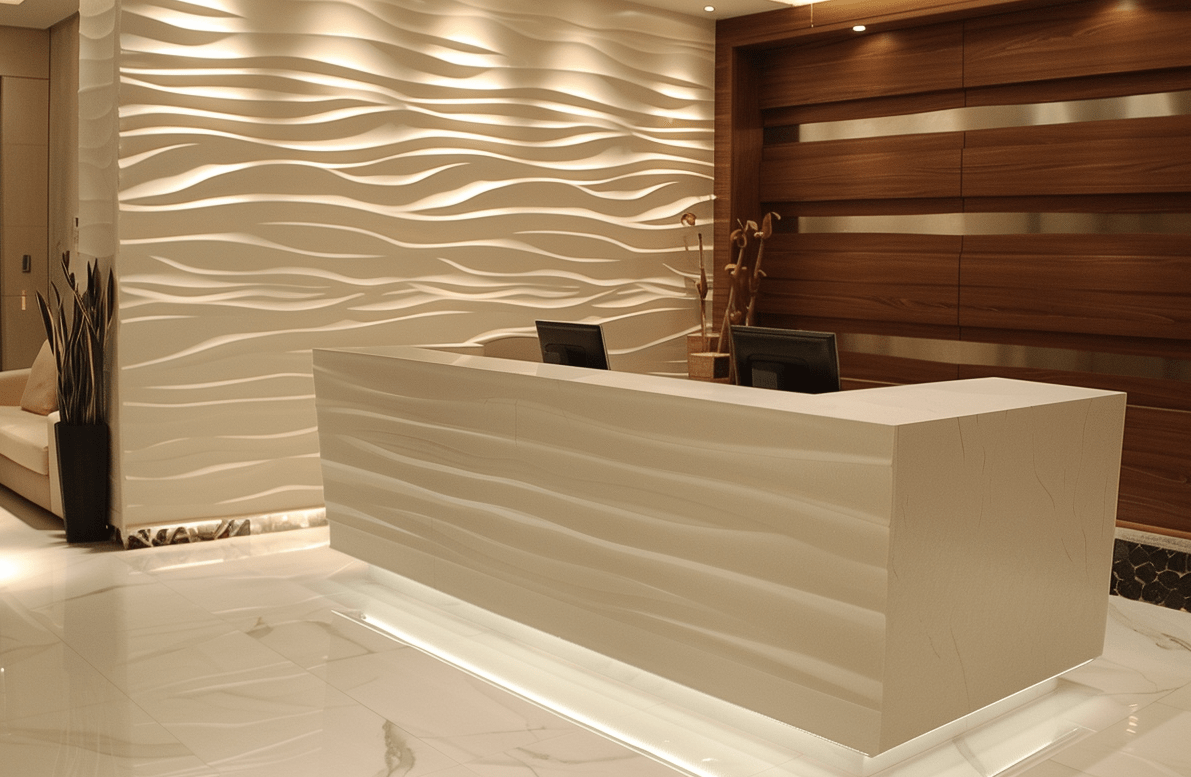
Benefits:
- Lightweight: Easy to handle and install.
- Fire-Resistant: Gypsum has natural fire-resistant properties.
- Smooth Finish: Provides a seamless and paintable surface.
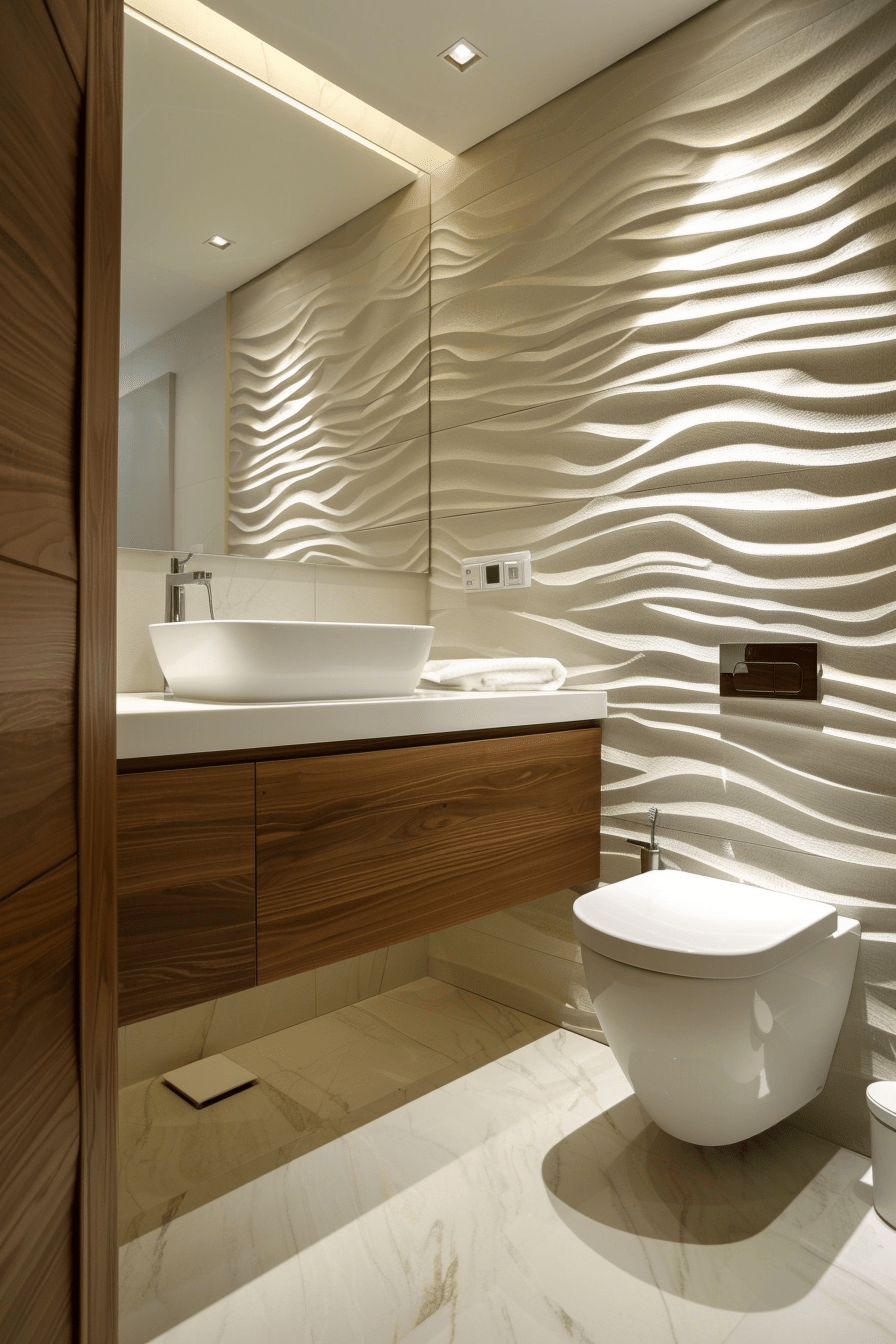
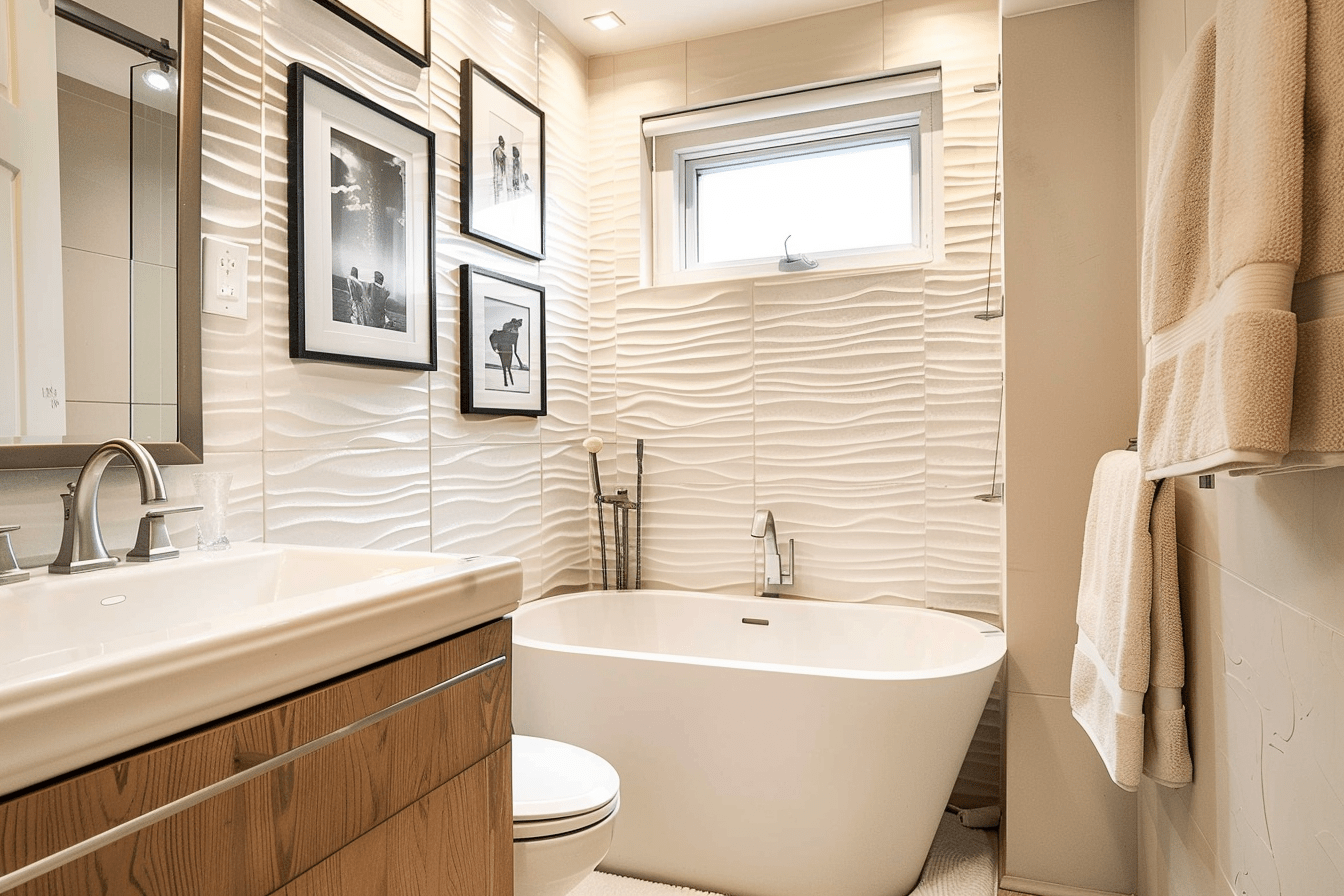
Drawbacks:
- Not Waterproof: Requires sealing in moist areas.
- Durability: Can be prone to dents and cracks upon impact.
- Limited Aesthetics: Generally used as a base for finishing rather than as a decorative panel itself.
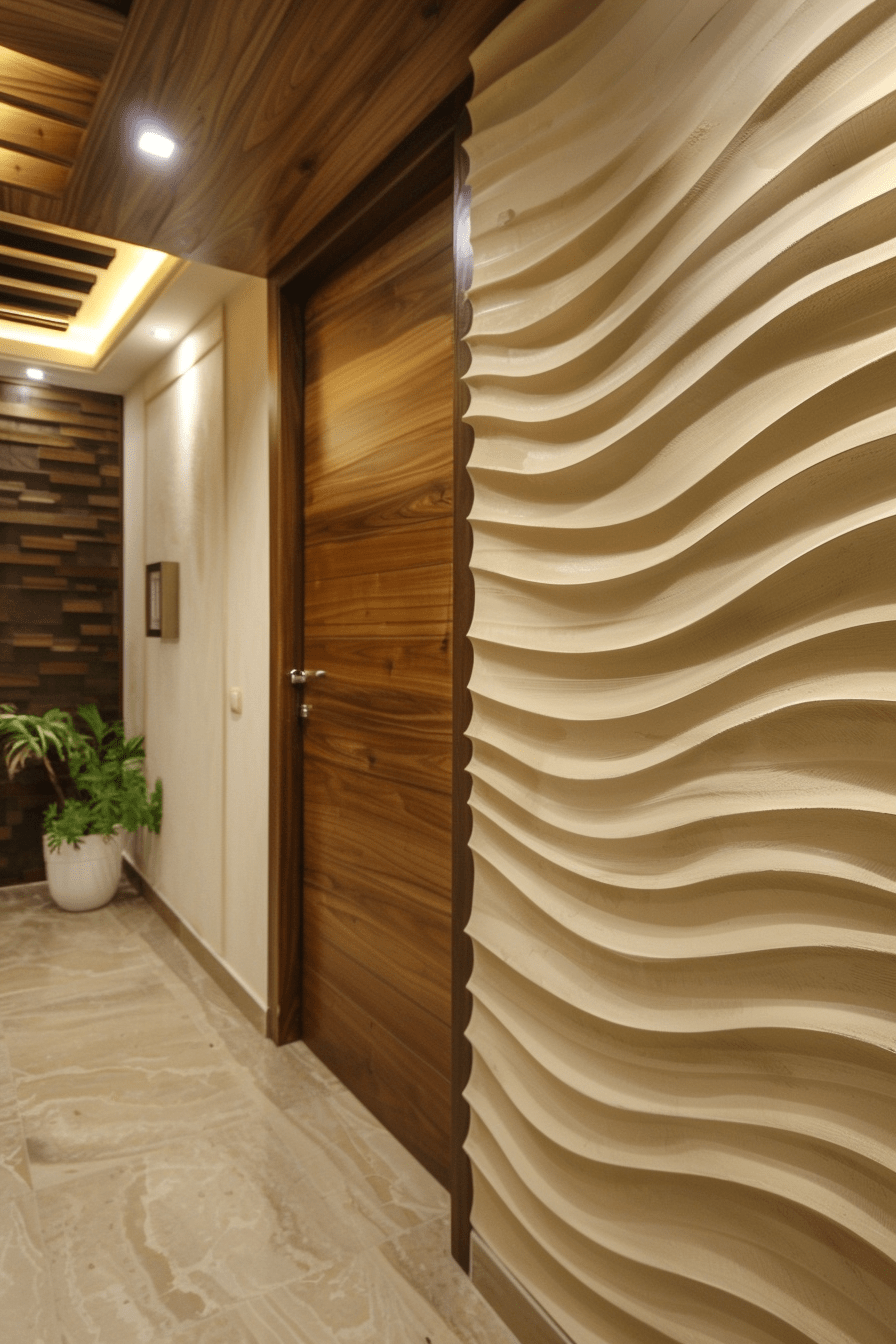
Ideal Applications:
- Interior Walls: Common in living rooms, bedrooms, and offices.
- Ceilings: Easy to install on ceilings due to its lightweight nature.
- Commercial Buildings: Widely used in partition walls and ceilings.
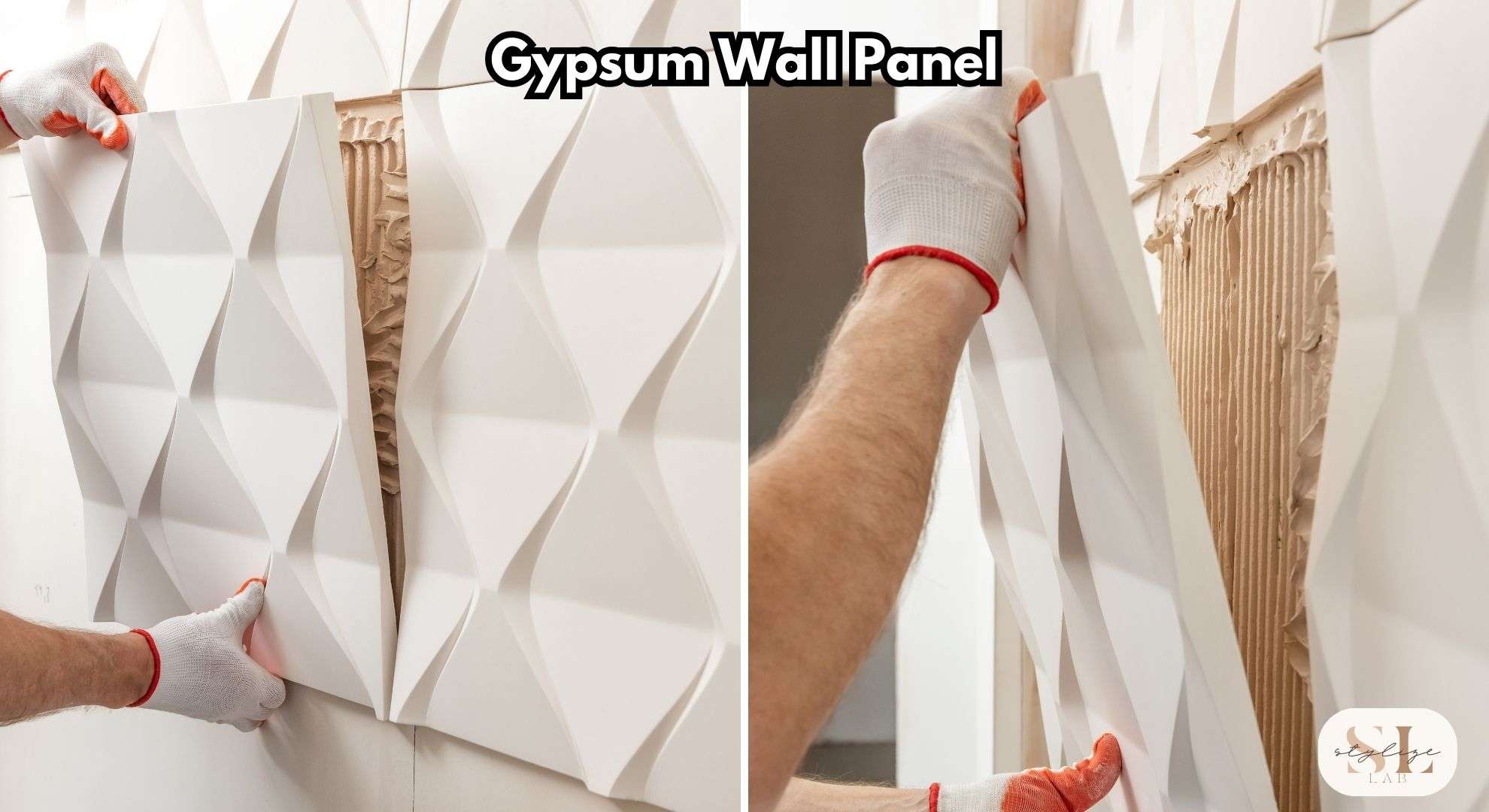
Wood
Wood is a timeless and versatile material for wall paneling that lends warmth and natural beauty to any room.
Types of Wood:
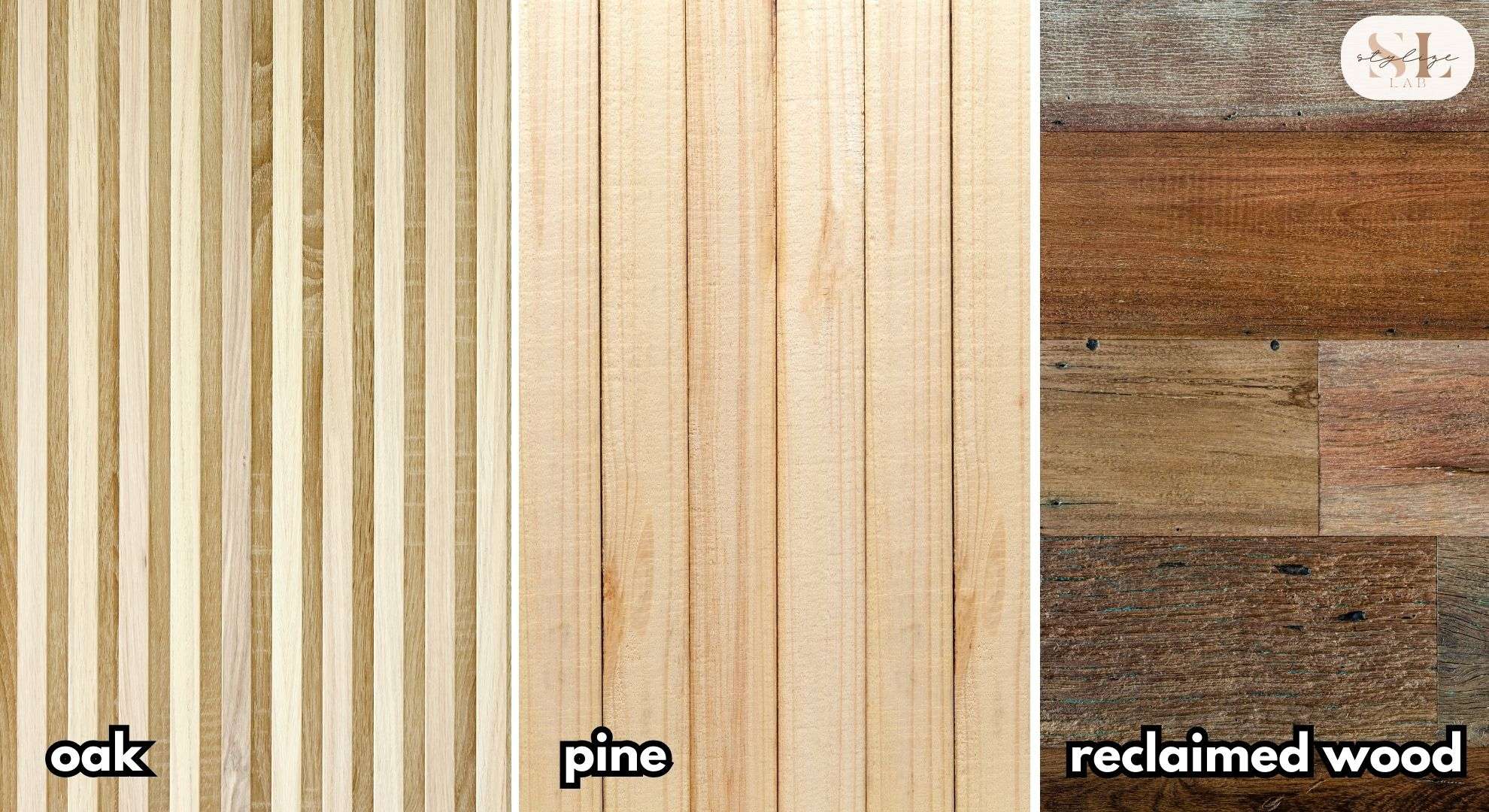
Oak:
- Characteristics: Durable and hardwood with a prominent grain pattern.
- Benefits: Strong and long-lasting, adds a touch of luxury.
- Drawbacks: Can be more expensive than other types of wood.
- Ideal Applications: High-traffic areas like hallways and living rooms.
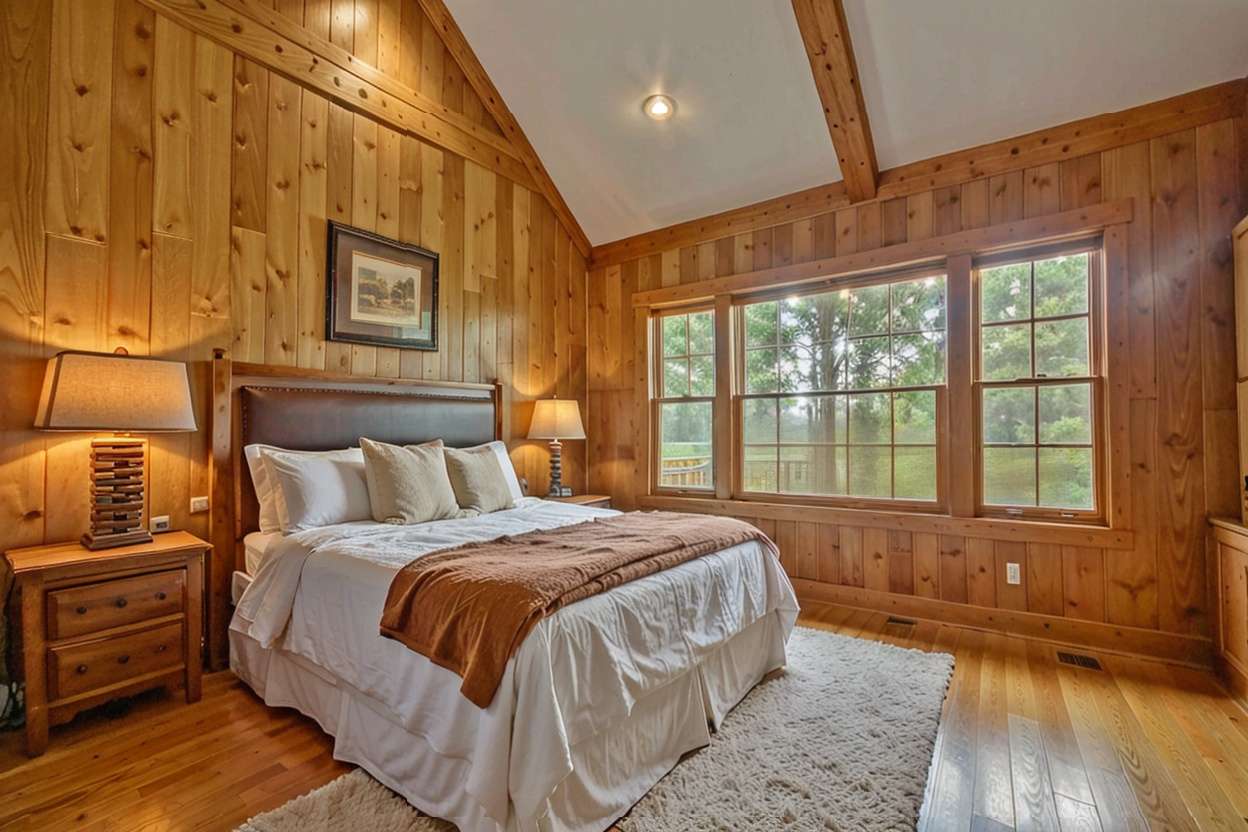
Pine:
- Characteristics: Softwood with a lighter color and finer grain.
- Benefits: Affordable and easy to work with.
- Drawbacks: Softer, more prone to dents and scratches.
- Ideal Applications: Bedrooms, cottage-style homes, and rustic settings.

Reclaimed Wood:
- Characteristics: Wood salvaged from old structures, often with a weathered look.
- Benefits: Eco-friendly, full of character and history, unique appearance.
- Drawbacks: Variable quality, may require more preparation.
- Ideal Applications: Accent walls, rustic and eclectic interiors.
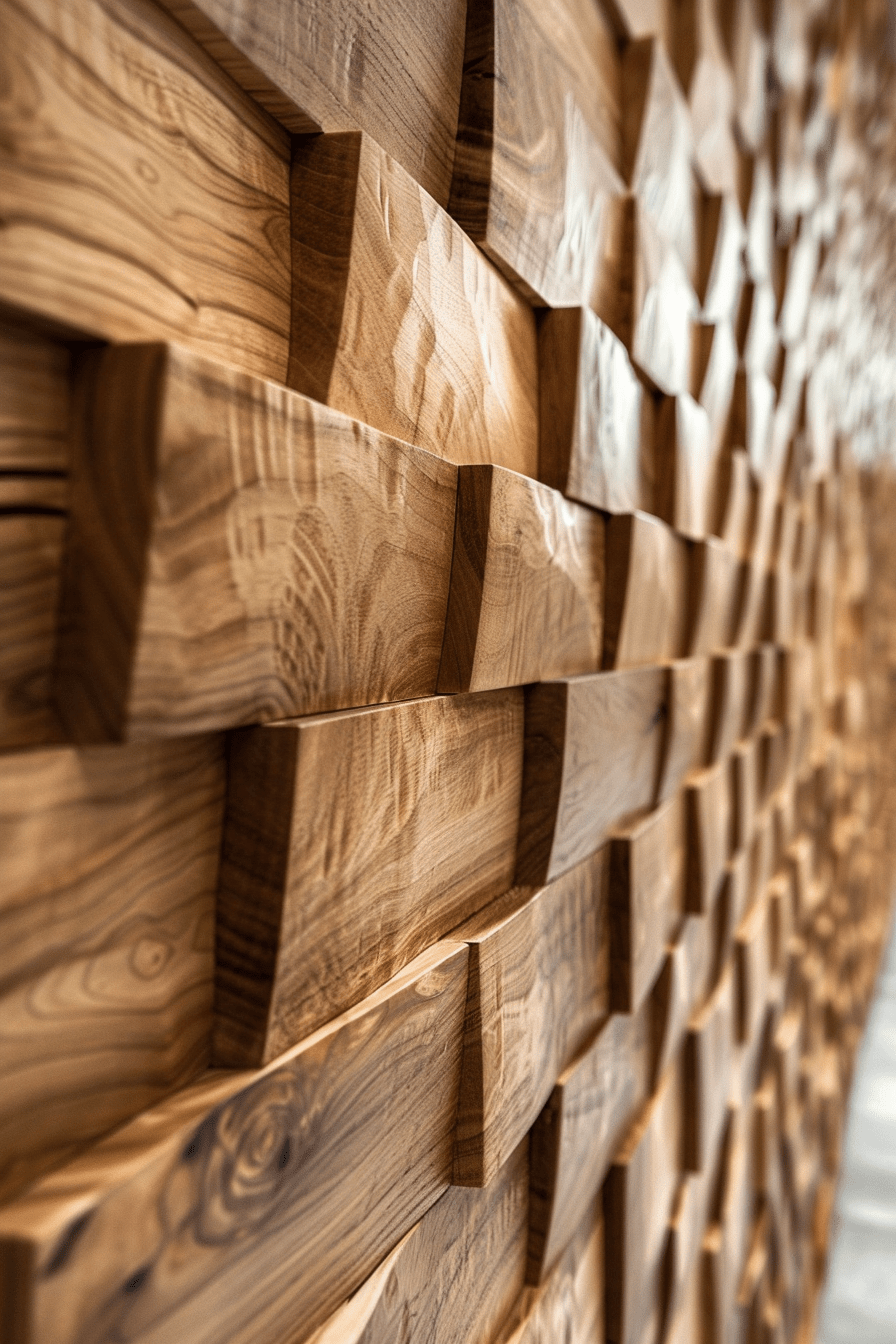
General Benefits of Wood:
- Aesthetics: Natural, warm, and can be stained or painted.
- Versatility: Can be shaped into various designs and styles.
- Insulation: Provides better insulation than some other materials.
General Drawbacks of Wood:
- Maintenance: May require periodic sealing or refinishing.
- Cost: Can be more expensive, particularly for high-quality wood.
MDF (Medium-Density Fiberboard)
MDF is engineered wood made from wood fibers, wax, and resin, compressed under high pressure.
It is a cost-effective and versatile material widely used for wall paneling.
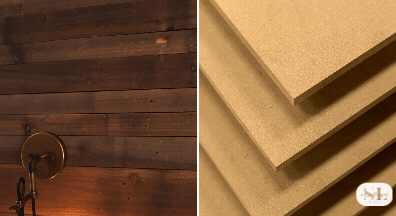
Benefits:
- Affordable: Less expensive than solid wood. 💰👍
- Smooth Surface: Ideal for painting and achieving a flawless finish.
- Easy to Work With: Cuts cleanly and can be shaped into intricate patterns and designs.
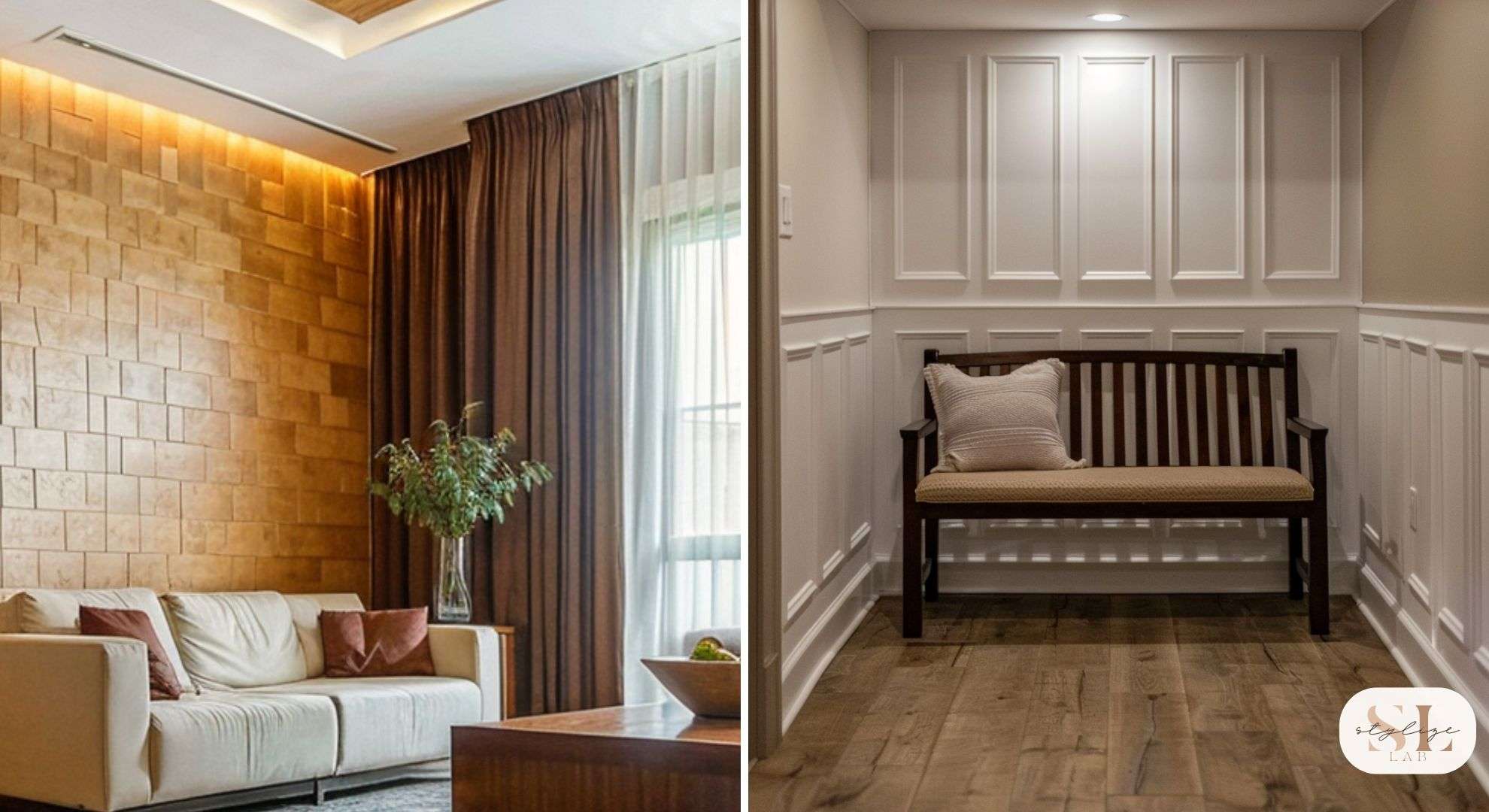
Drawbacks:
- Moisture Sensitivity: Not suitable for damp areas without proper sealing.
- Weight: Can be heavier than other paneling materials.
- Durability: Less durable than natural wood, more prone to damage.
PVC (Polyvinyl Chloride)
PVC is a type of plastic known for being lightweight, durable, and moisture-resistant.
It is a popular choice for wall paneling in areas prone to moisture.
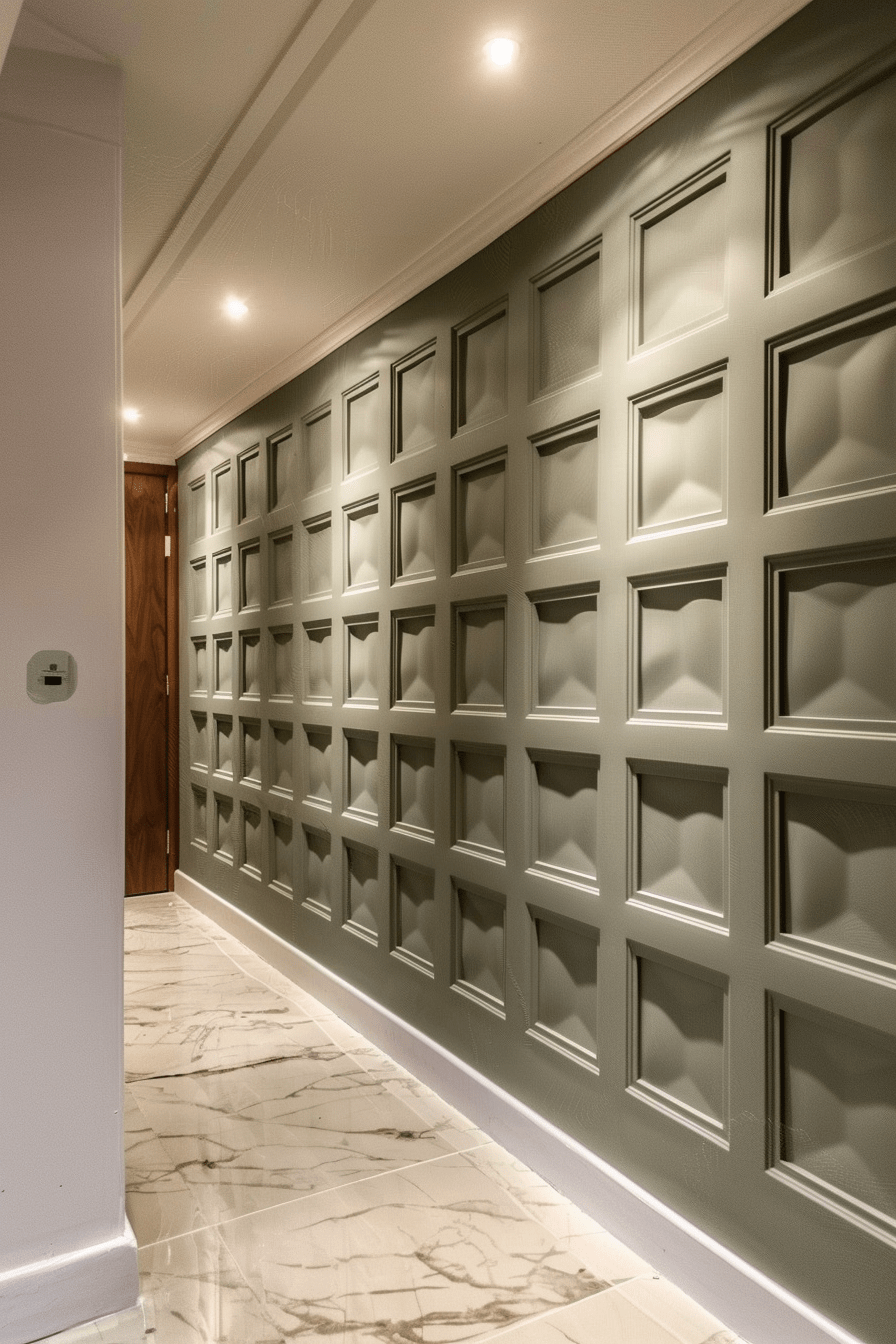
Benefits:
- Waterproof: Perfect for bathrooms, kitchens, and basements.
- Low Maintenance: Easy to clean and doesn’t require painting or sealing.
- Durability: Resistant to mold, mildew, and insects.
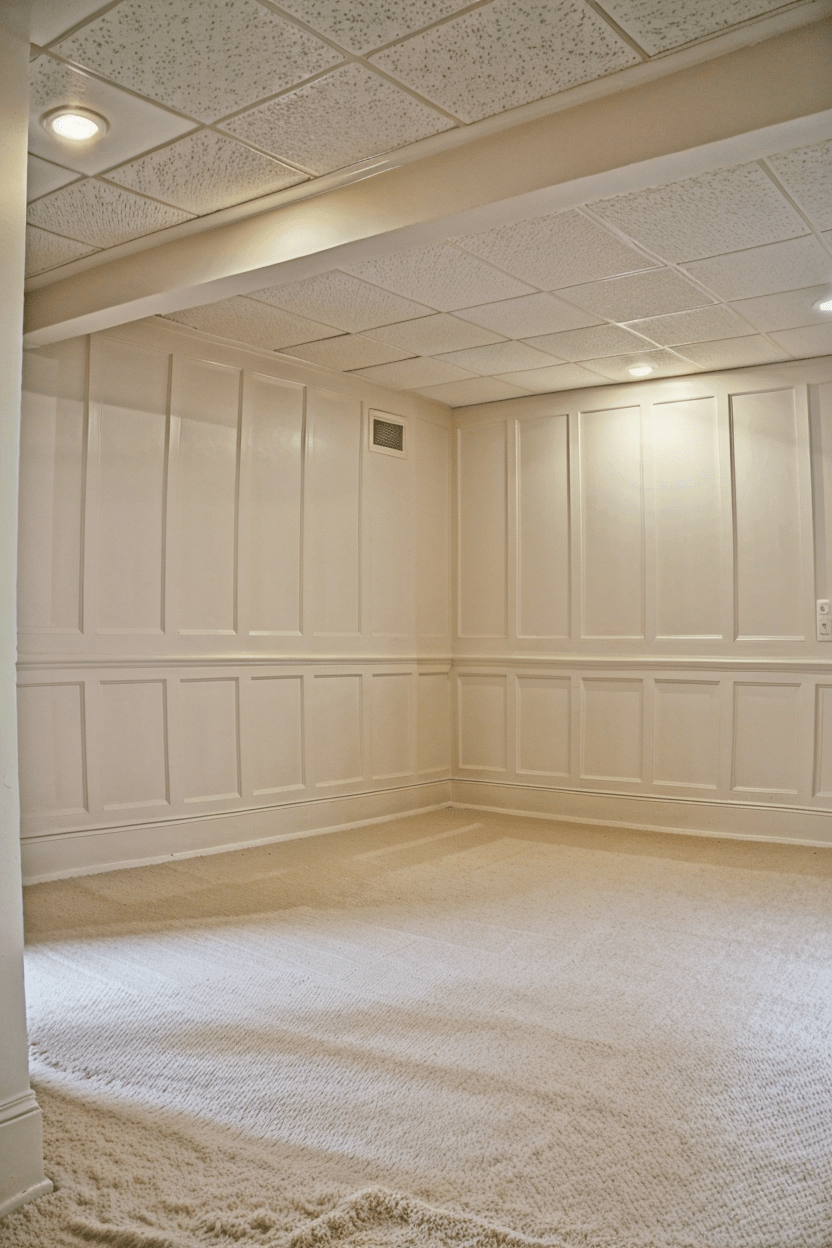
Drawbacks:
- Aesthetic Limitations: May not offer the same warmth or upscale look as natural materials.
- Environmental Concerns: Production and disposal can be harmful to the environment.
Metal
Metal wall panels can be made from materials such as aluminum, steel, or tin.
Excellent option for commercial spaces such as restaurants, cafes, and retail stores.
Benefits:
- Durable: Long-lasting and resistant to damage.
- Modern Aesthetic: Provides a unique, sleek look.
- Fire-Resistant: Offers an additional safety feature.
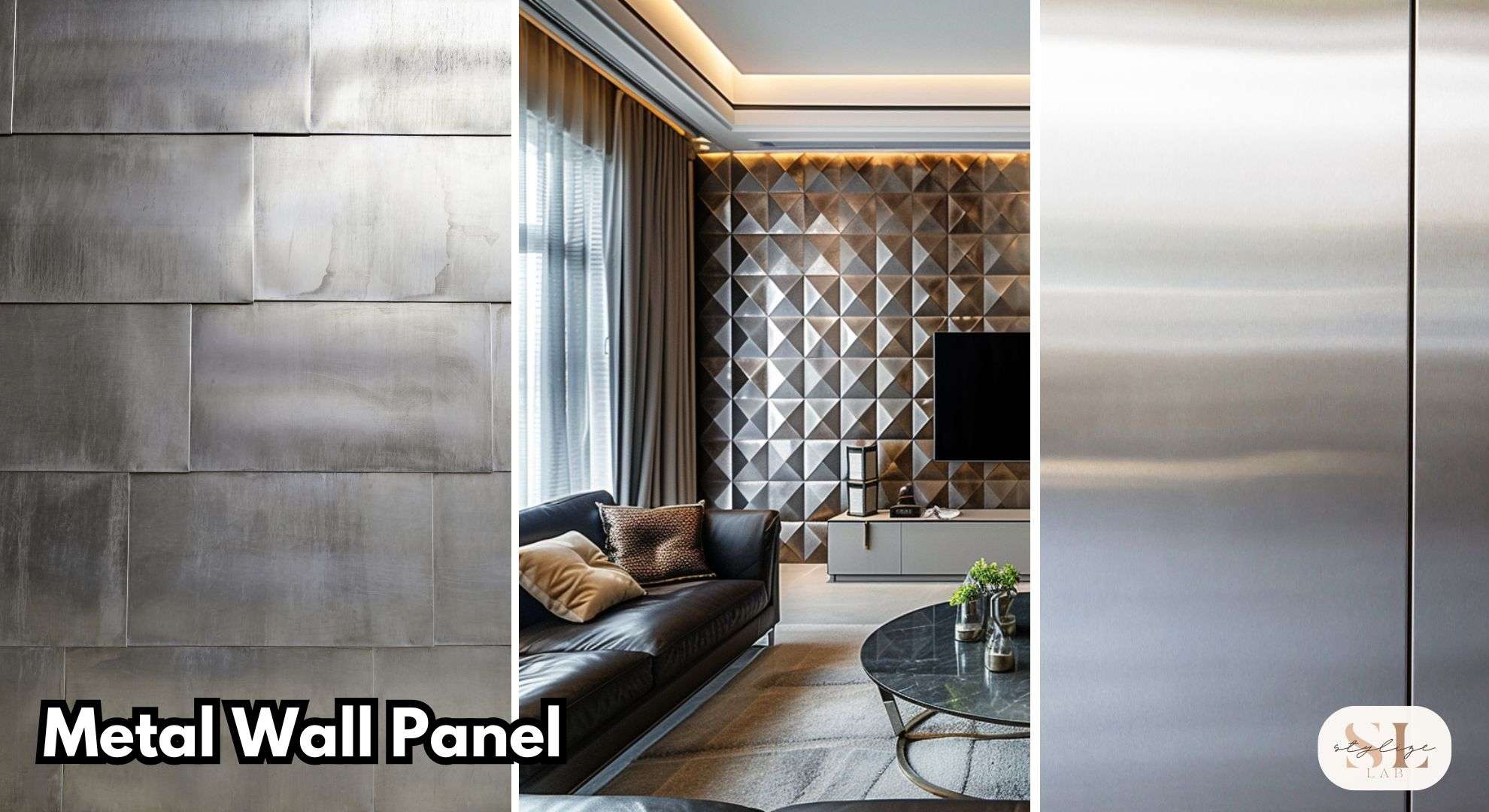
Drawbacks:
- Cold Feel: Can feel less inviting than wood or fabric.
- Installation Complexity: More challenging to cut and install than some other materials.
- Cost: Can be expensive depending on the type of metal.
Fabric
Fabric wall paneling uses upholstered materials to create a soft, cushioned surface.
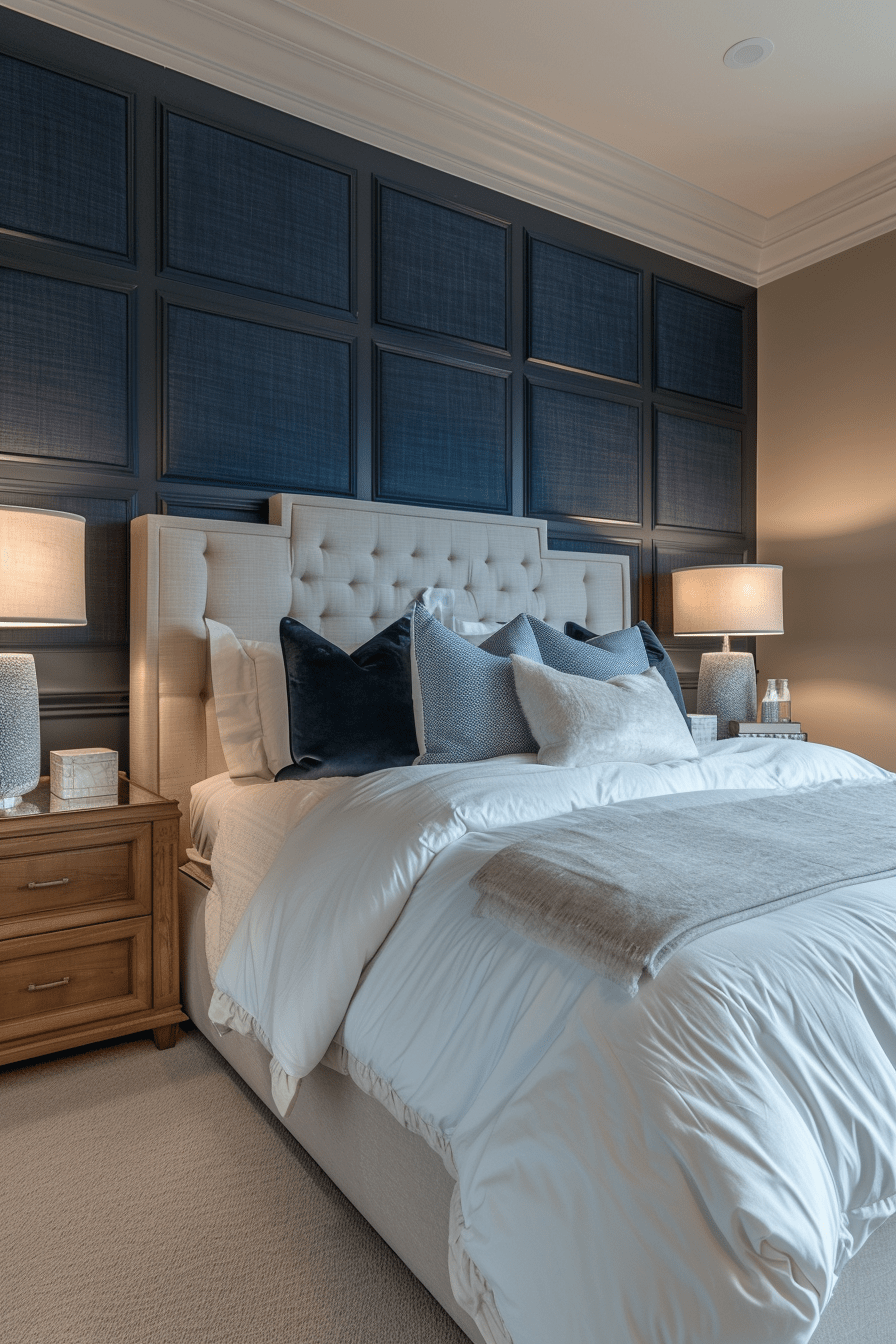
Benefits:
- Aesthetics: Adds a luxurious and elegant touch.
- Sound Insulation: Excellent for reducing noise.
- Comfort: Soft and inviting, adds warmth to a room.
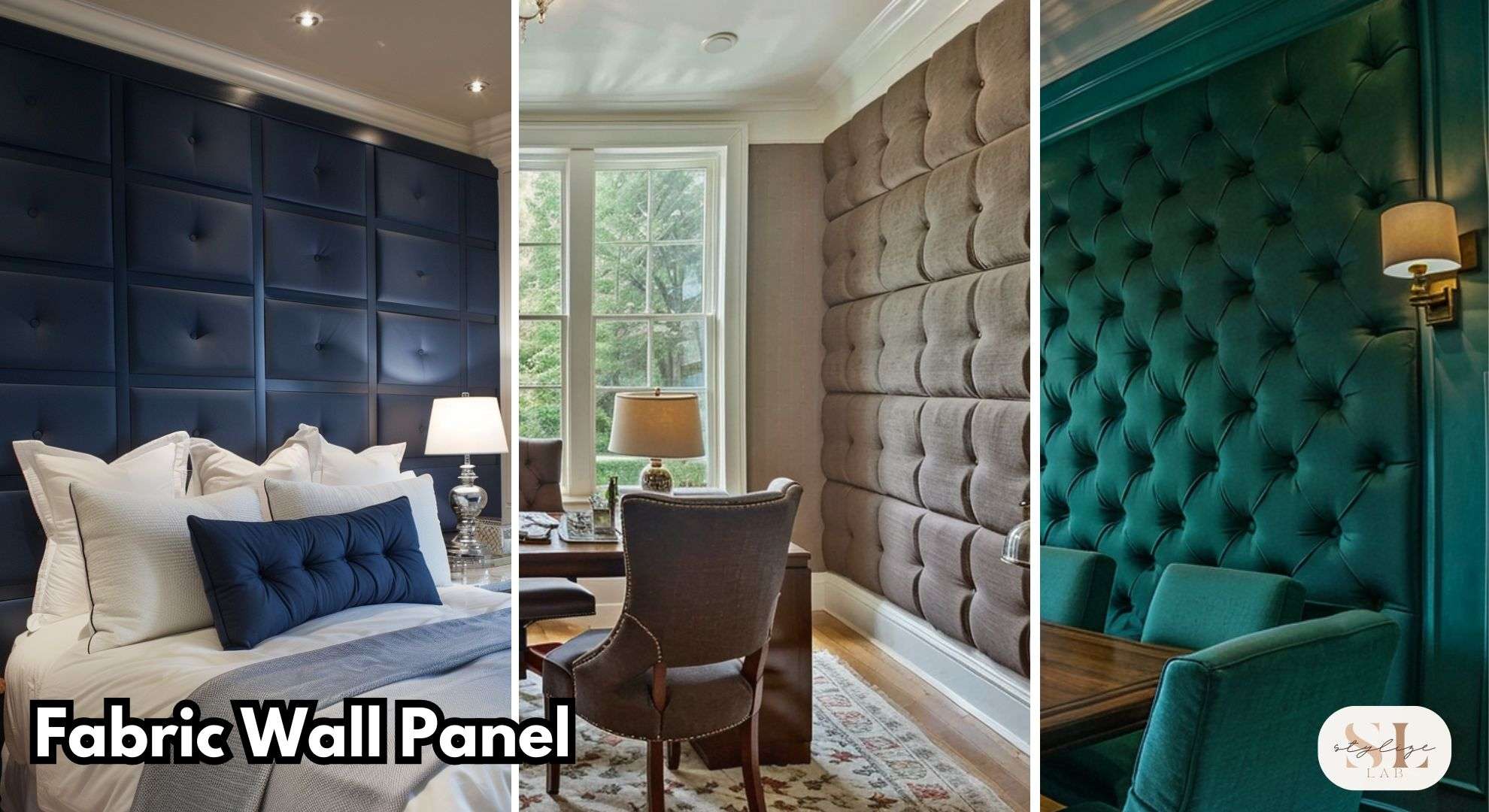
Drawbacks:
- Maintenance: Can attract dust and require regular cleaning.
- Moisture Sensitivity: Not suitable for damp areas.
- Cost: Can be costly due to the need for padding and upholstery.
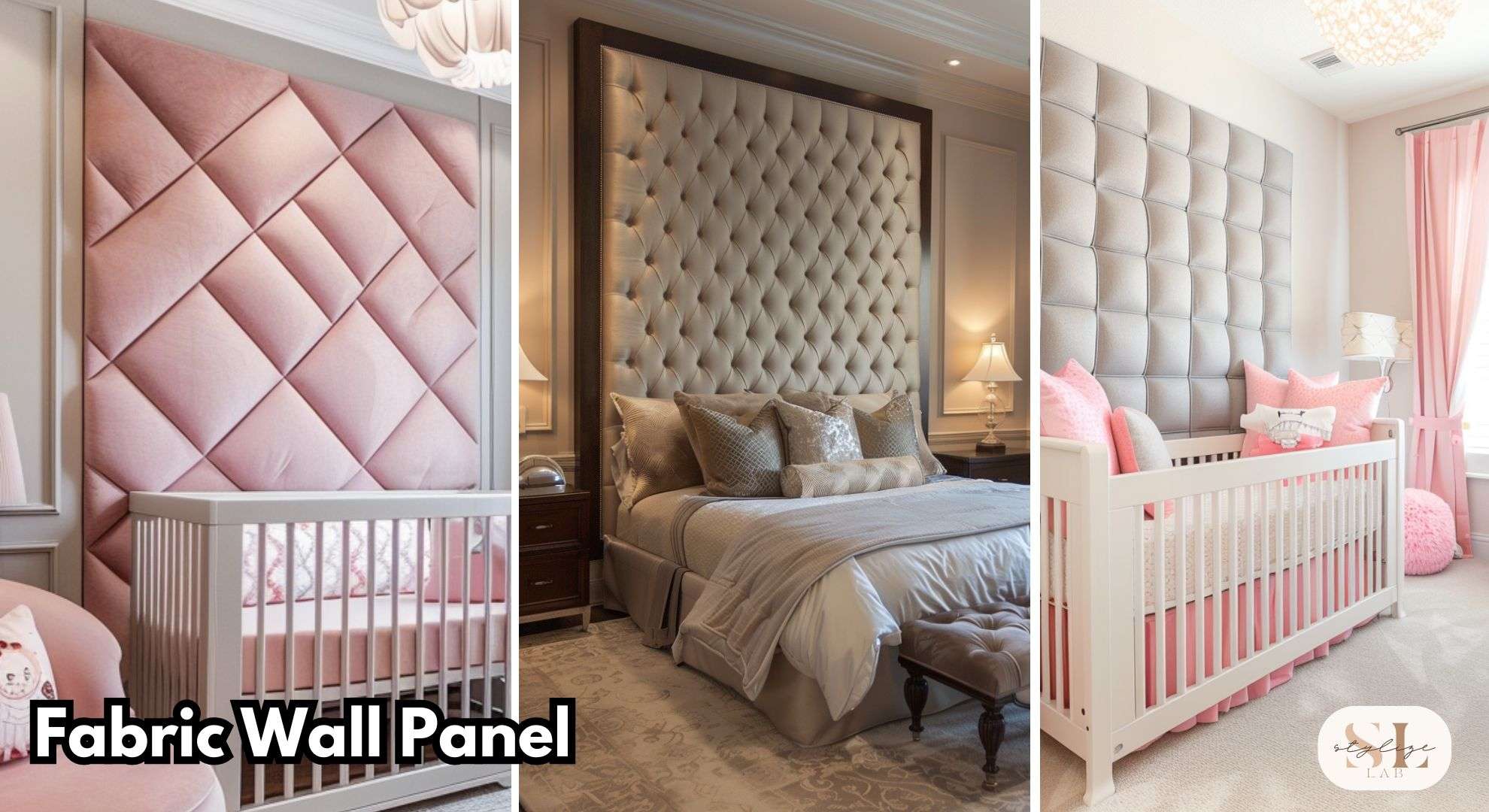
Ideal Applications:
- Bedrooms: Particularly behind beds as a headboard extension.
- Living Rooms: Used as accent walls or in media rooms for sound dampening.
- Home Theaters: Perfect for sound absorption.
Room-Specific Ideas for Wall Paneling
Living Room: Adding a Focal Point or Accent Wall
The living room often serves as the social hub of the home, making it a prime spot for stylish wall paneling.
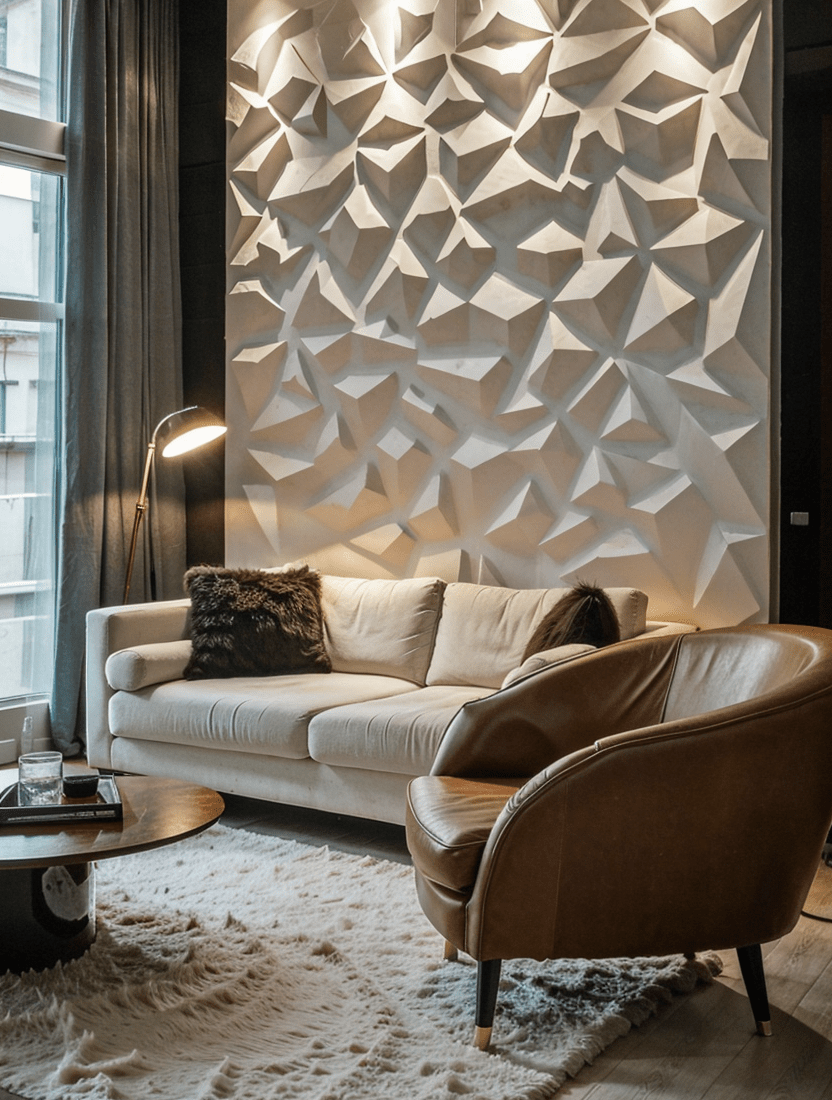
Accent Wall: Pick one wall to be your showstopper. Panel it with reclaimed wood, vibrant paint, or even 3D textures. This instantly boosts the room and commands attention.
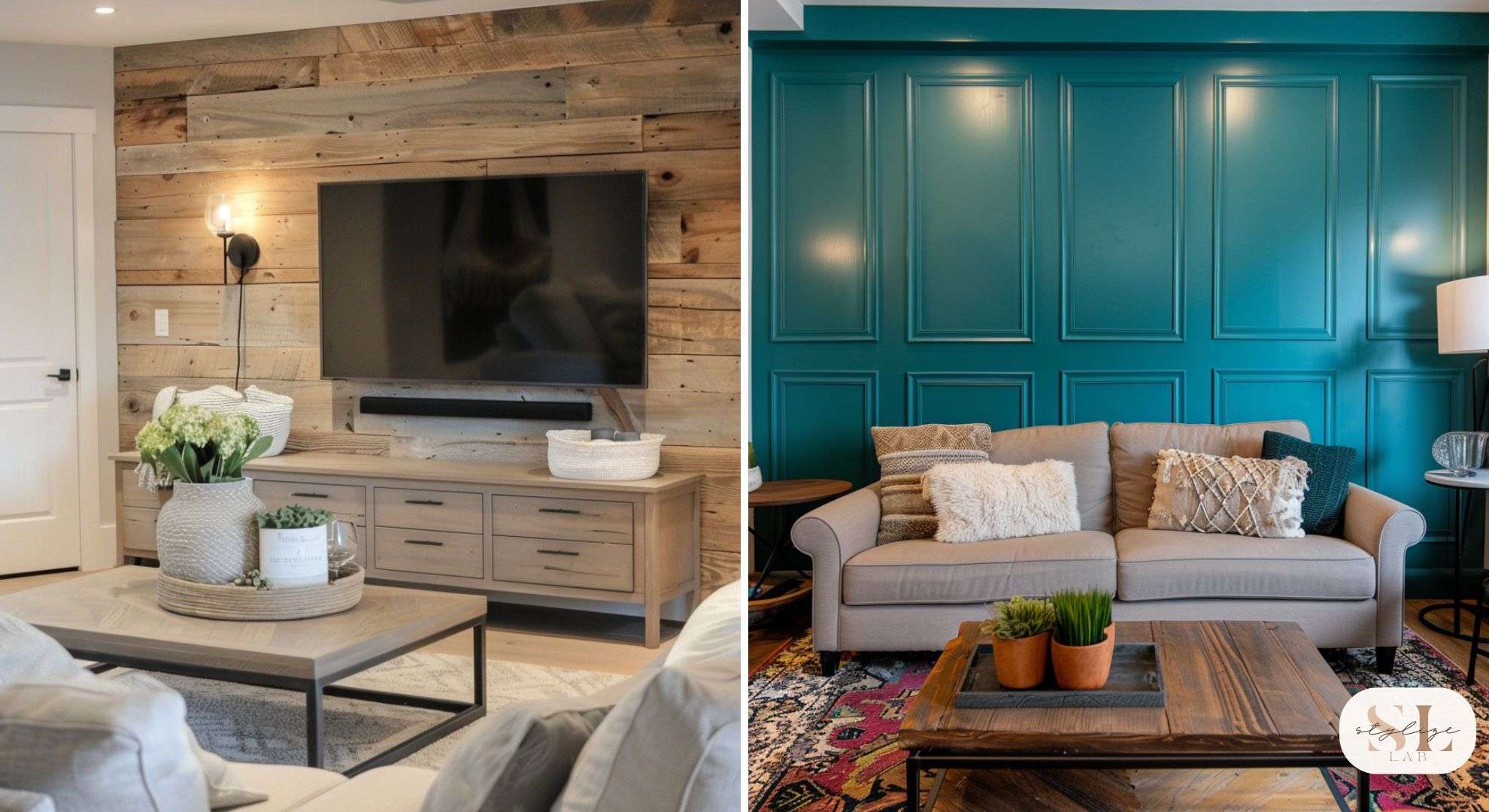
Fireplace Focus: Amp up the area around your fireplace with paneling.
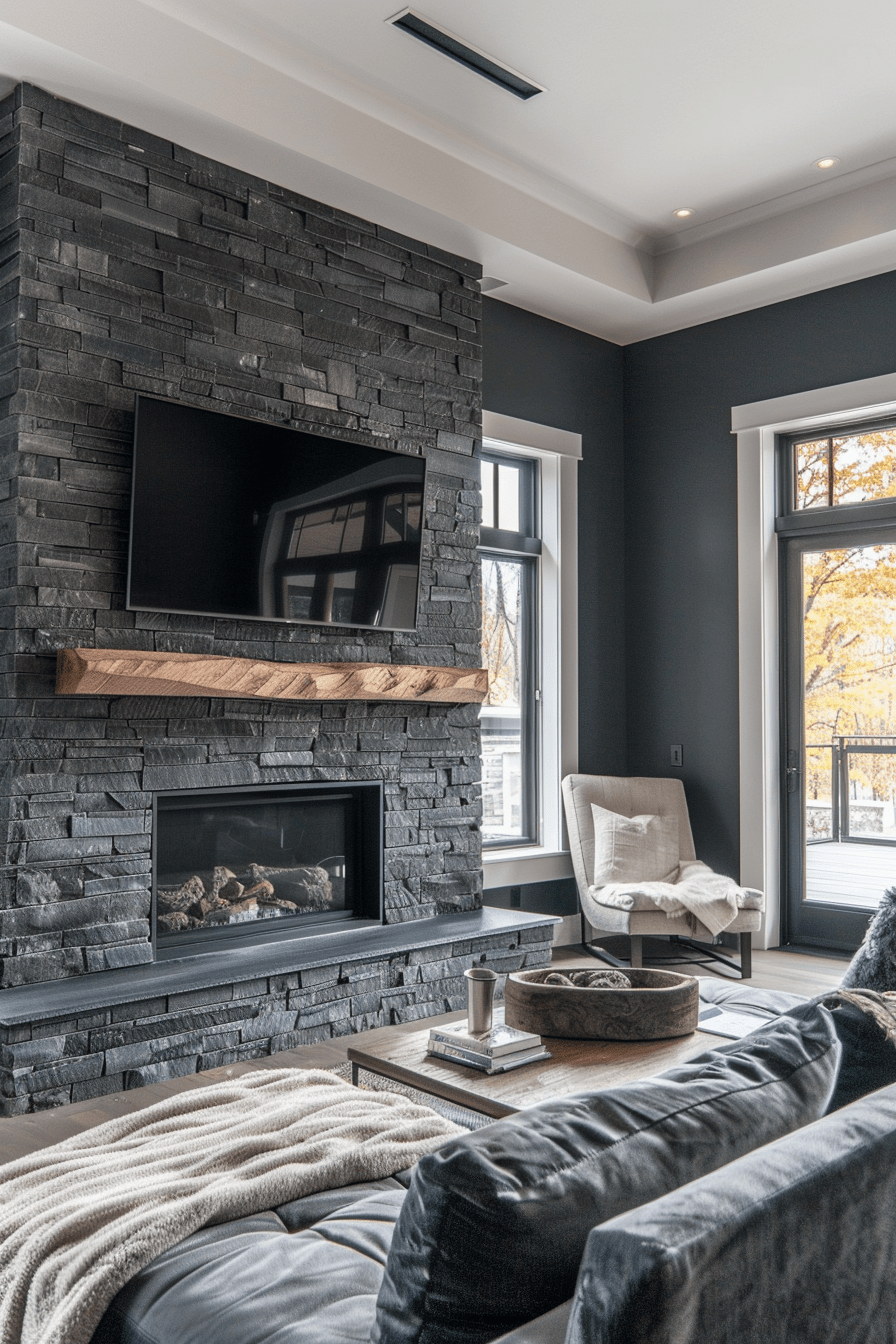
Options like shiplap, stone veneer, or metallic panels introduce both charm and visual warmth.
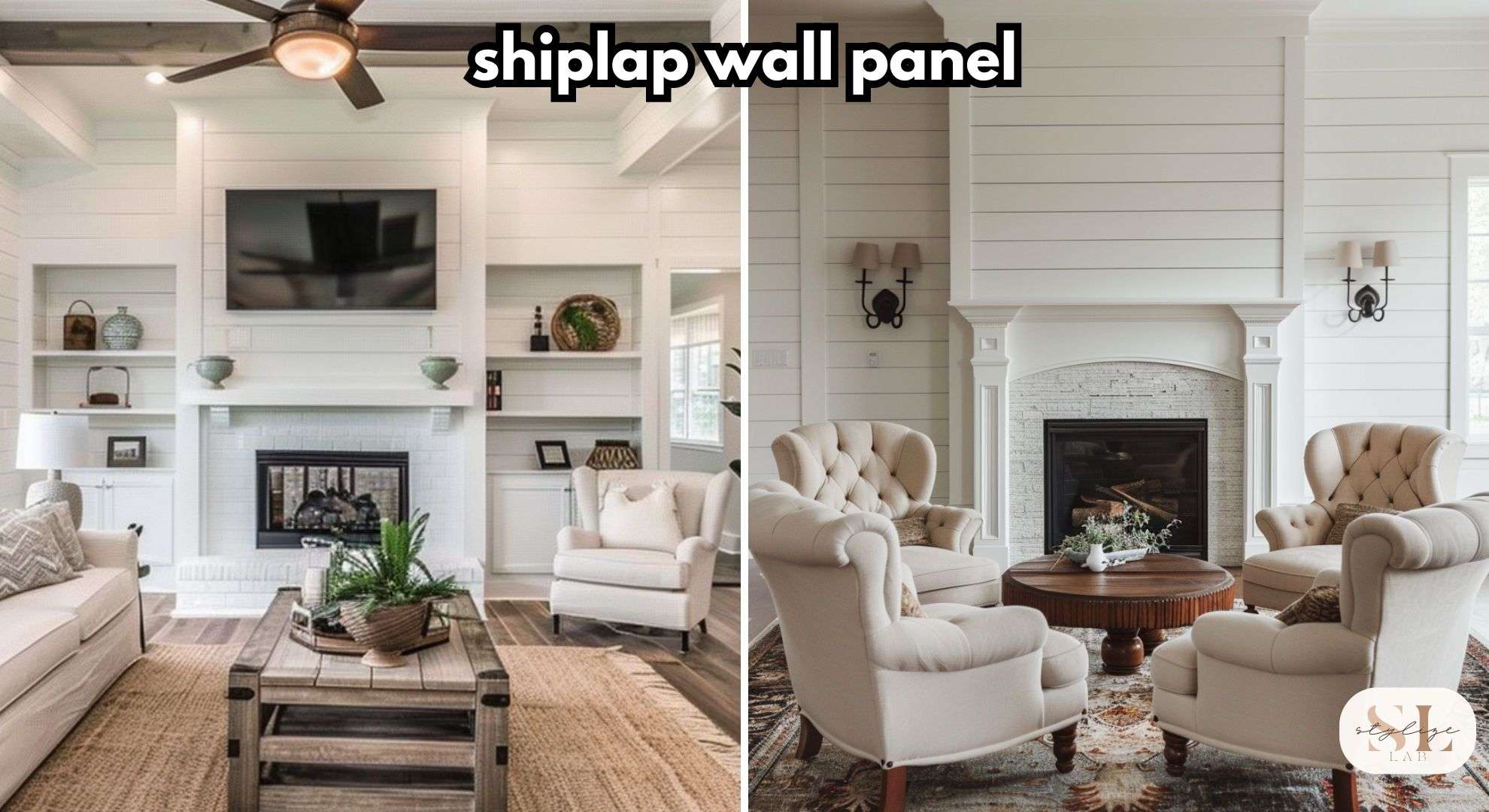
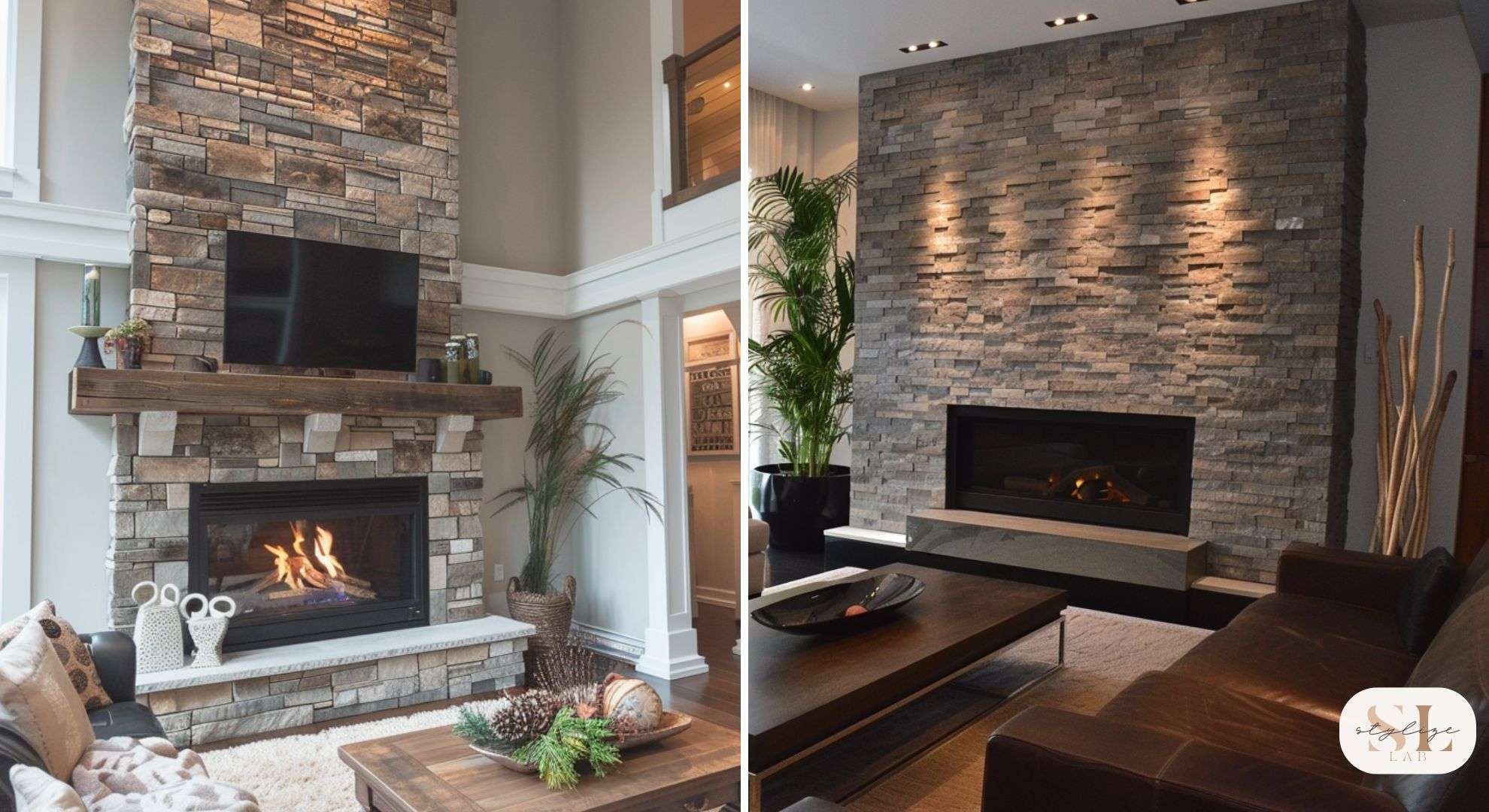
Classic Wainscoting: A touch of elegance, opt for wainscoting on the lower half of the walls. It’s perfect for adding a traditional or transitional flair.
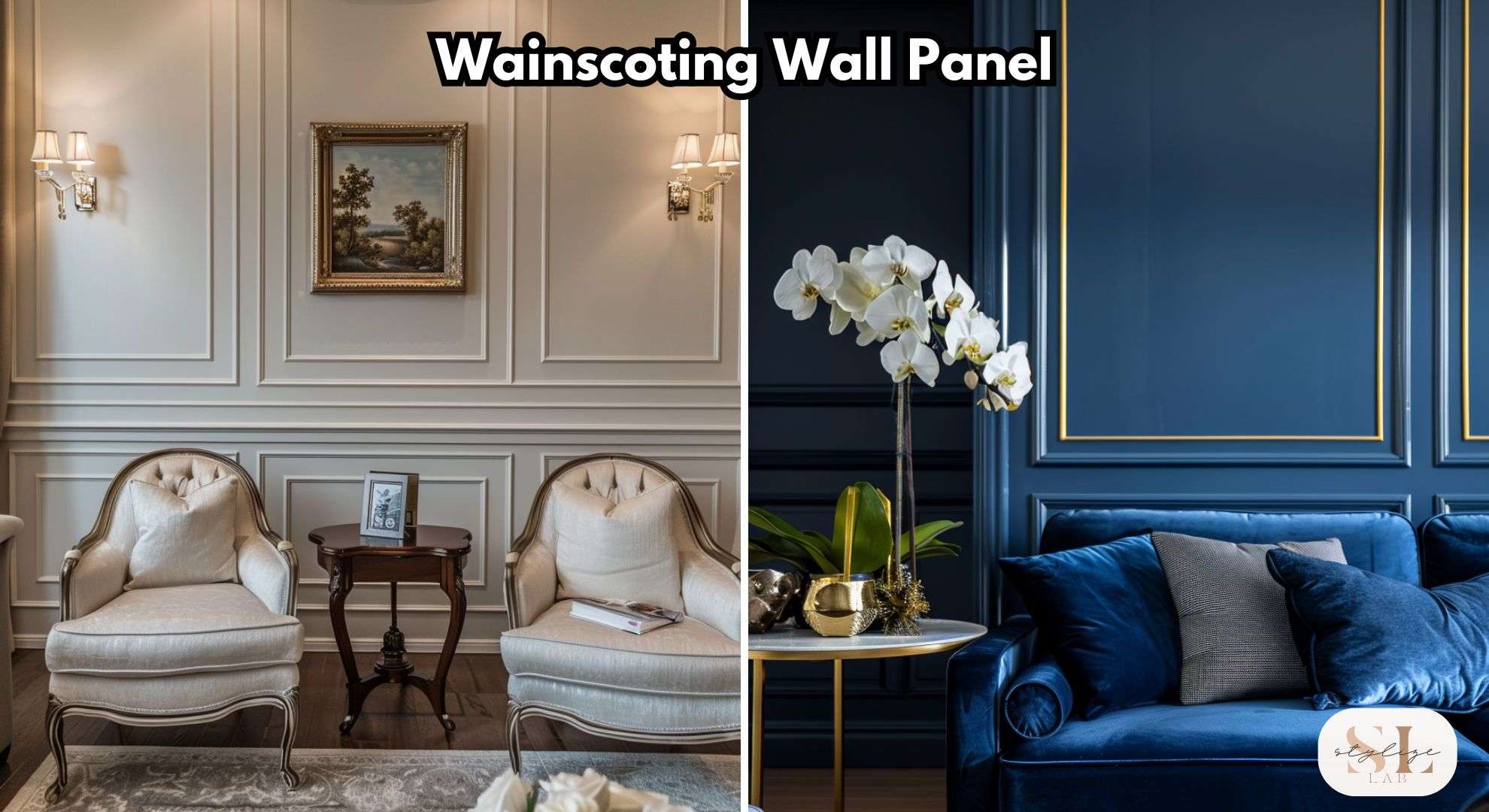
Bedroom: Creating a Cozy and Inviting Space
Bedroom like your personal sanctuary, with peace, comfort and tranquility as the main priorities.
Headboard Wall: Take the idea of a headboard to the next level by paneling the whole wall behind your bed. You can choose materials such as fabric, beadboard, or wood to fashion a lavish and inviting ambiance.
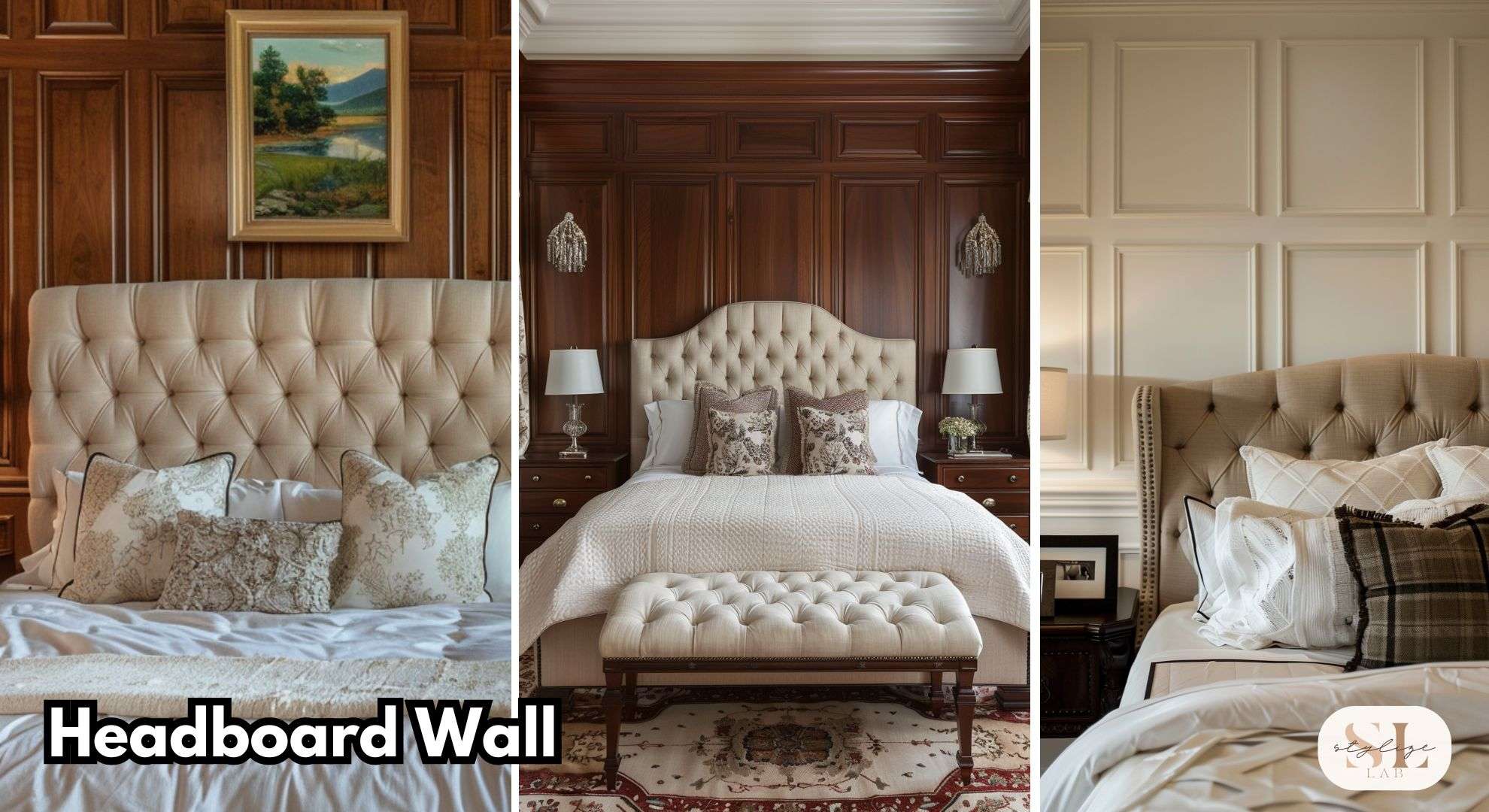
Accent Wall: Use materials like shiplap, board and batten or wainscoting to create an accent wall that adds depth and texture.
Ceiling Paneling: Don’t overlook the ceiling; tongue and groove or beadboard can add an unexpected touch of charm.
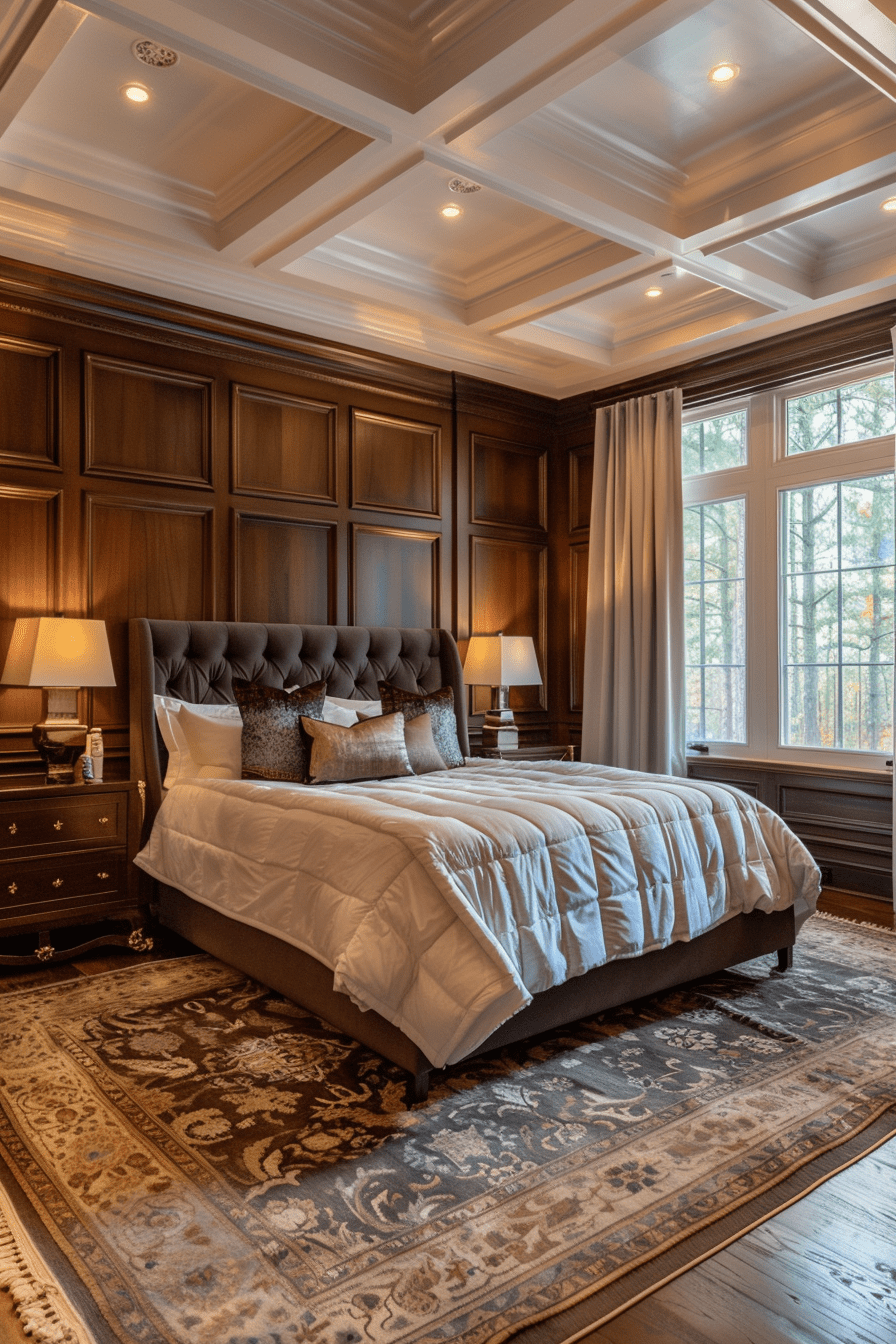
Color and Texture: Choose soft, soothing colors and textures that promote relaxation and comfort.
Bathroom: Choosing Moisture-Resistant Materials
In bathrooms, materials need to endure moisture and damp conditions. Choosing the proper paneling can boost both practicality and aesthetic.
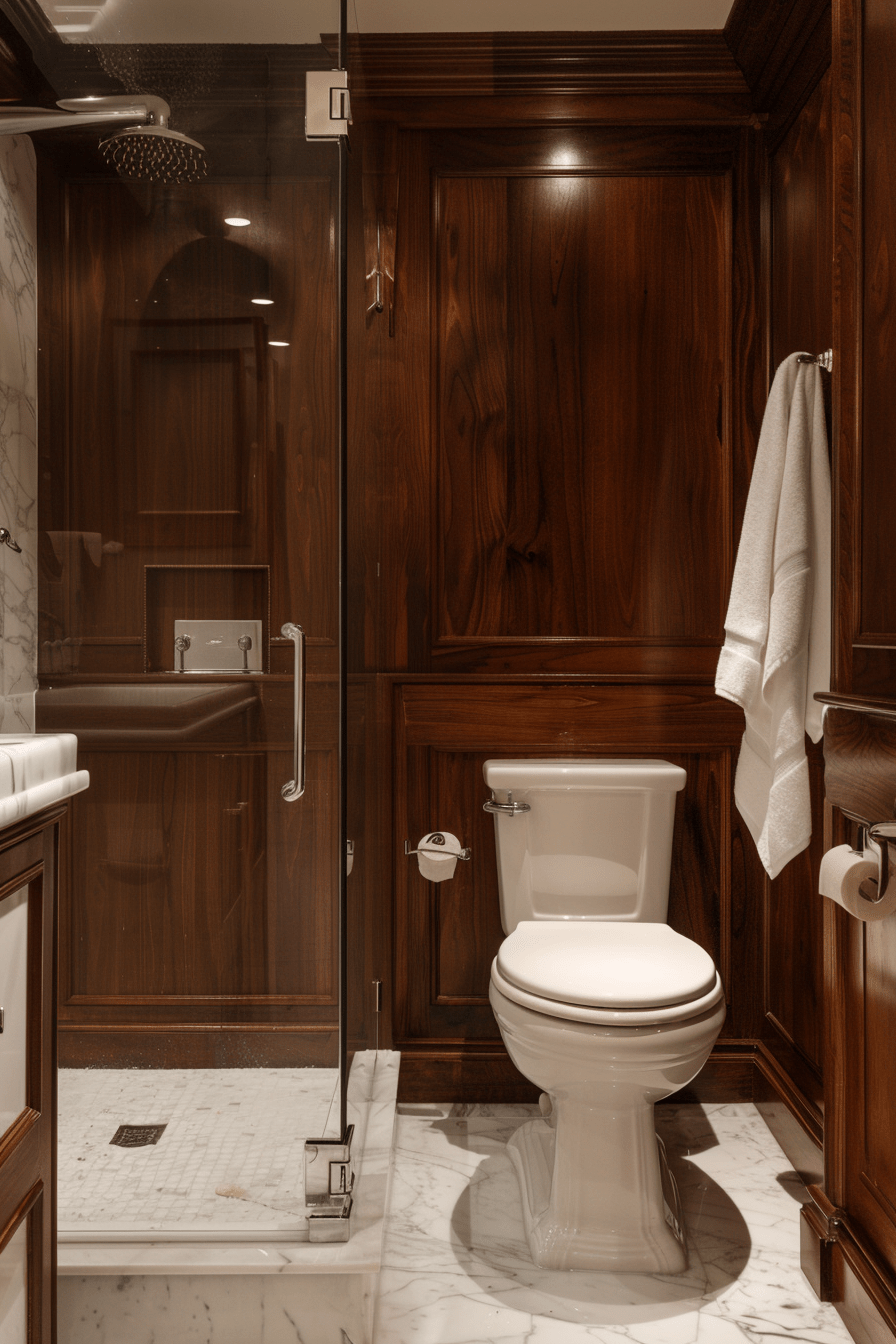
Shower Walls: Opt for PVC or moisture-resistant MDF for a stylish yet sturdy shower enclosure.
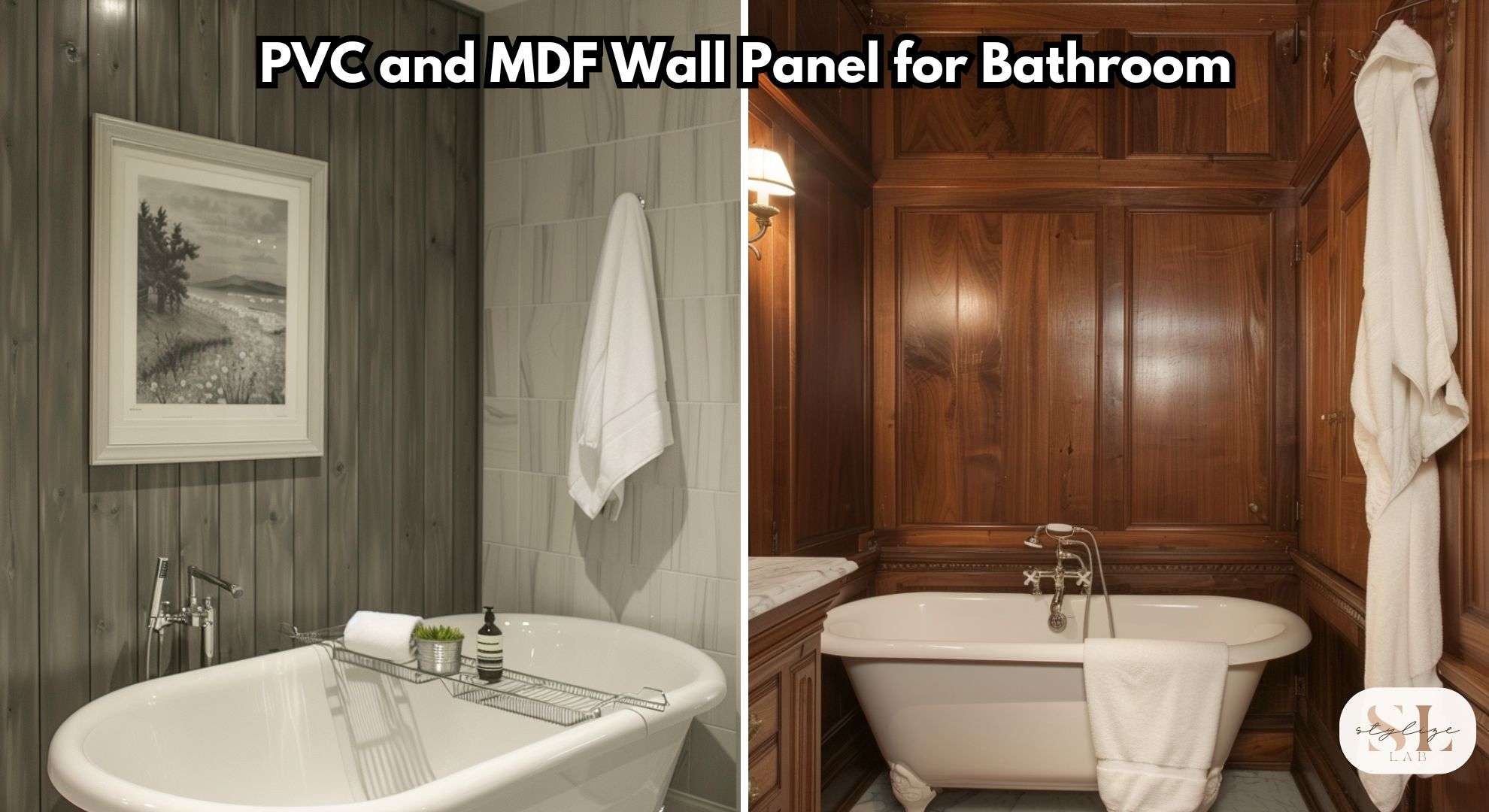
Beadboard: Add beadboard paneling halfway up the walls for a timeless, cottage-style vibe. Just make sure it’s securely sealed and painted with moisture-resistant coating.
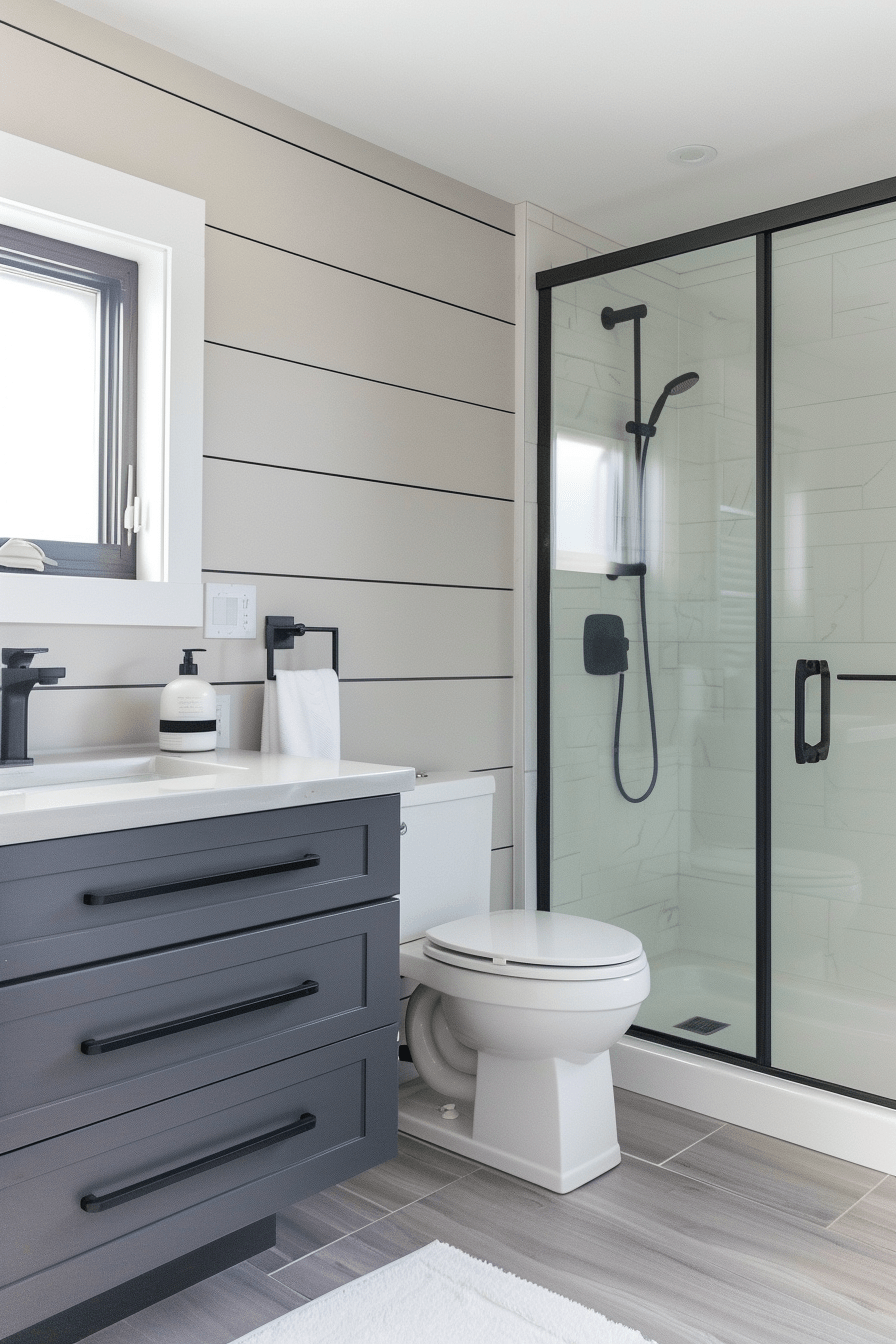
Tile Panels: If you fancy a contemporary feel, consider large tile panels or faux tiles that replicate real ones without the trouble of grout.
Accent Areas: Use panels behind the sink or around the tub to create striking visual details.
Kitchen: Using Wall Paneling for Backsplashes or Accent Walls
The kitchen acts as the core of the home, blending usability with flair. Wall paneling can amplify both beauty and function in this area.
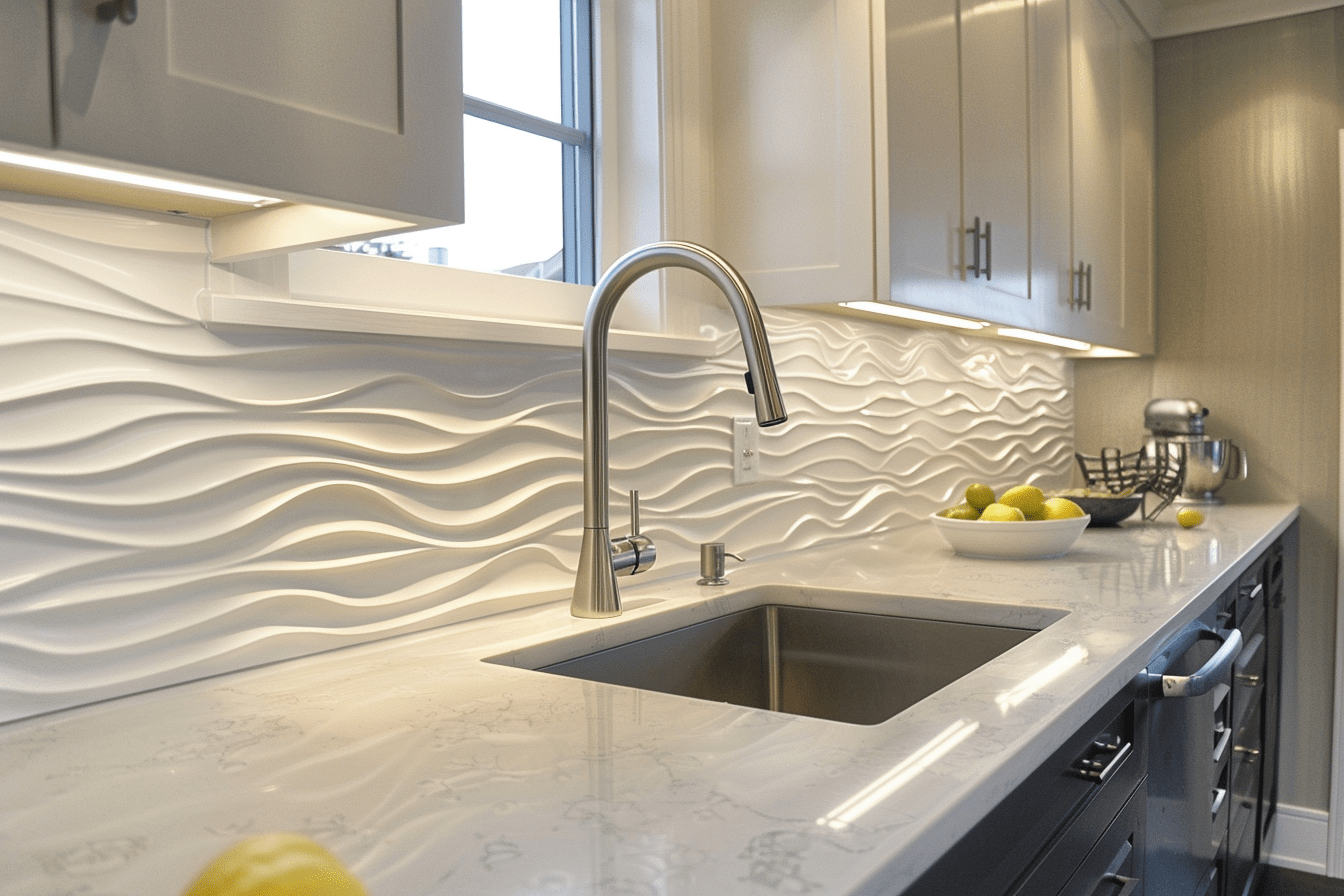
Backsplash: Pick out materials like shiplap, beadboard, or metal panels to form a one-of-a-kind backsplash that really pops. Make sure these materials are sealed to resist water splashes.
Island Accent: Cover the sides of your kitchen island with panels to emphasize it as a centerpiece. Reclaimed wood, beadboard, or 3D panels can bring in visual appeal.
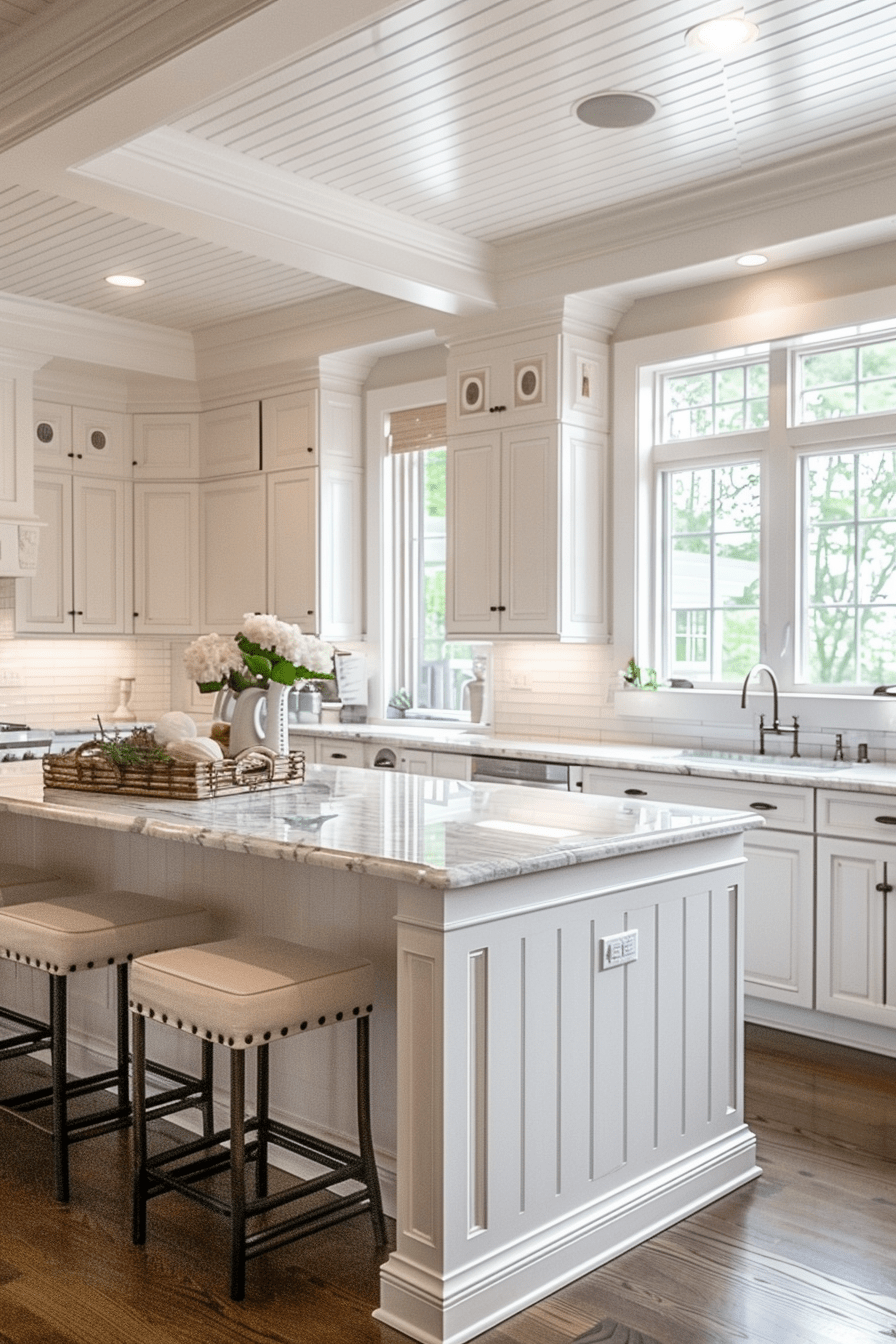
Ceiling Panels: Achieve a captivating look by adorning the ceiling with tongue and groove or beadboard panels.
Hallway and Entrance: Making a Grand First Impression
Your hallway and entryway are the first spots guests encounter, making it crucial to establish a warm and memorable welcome.
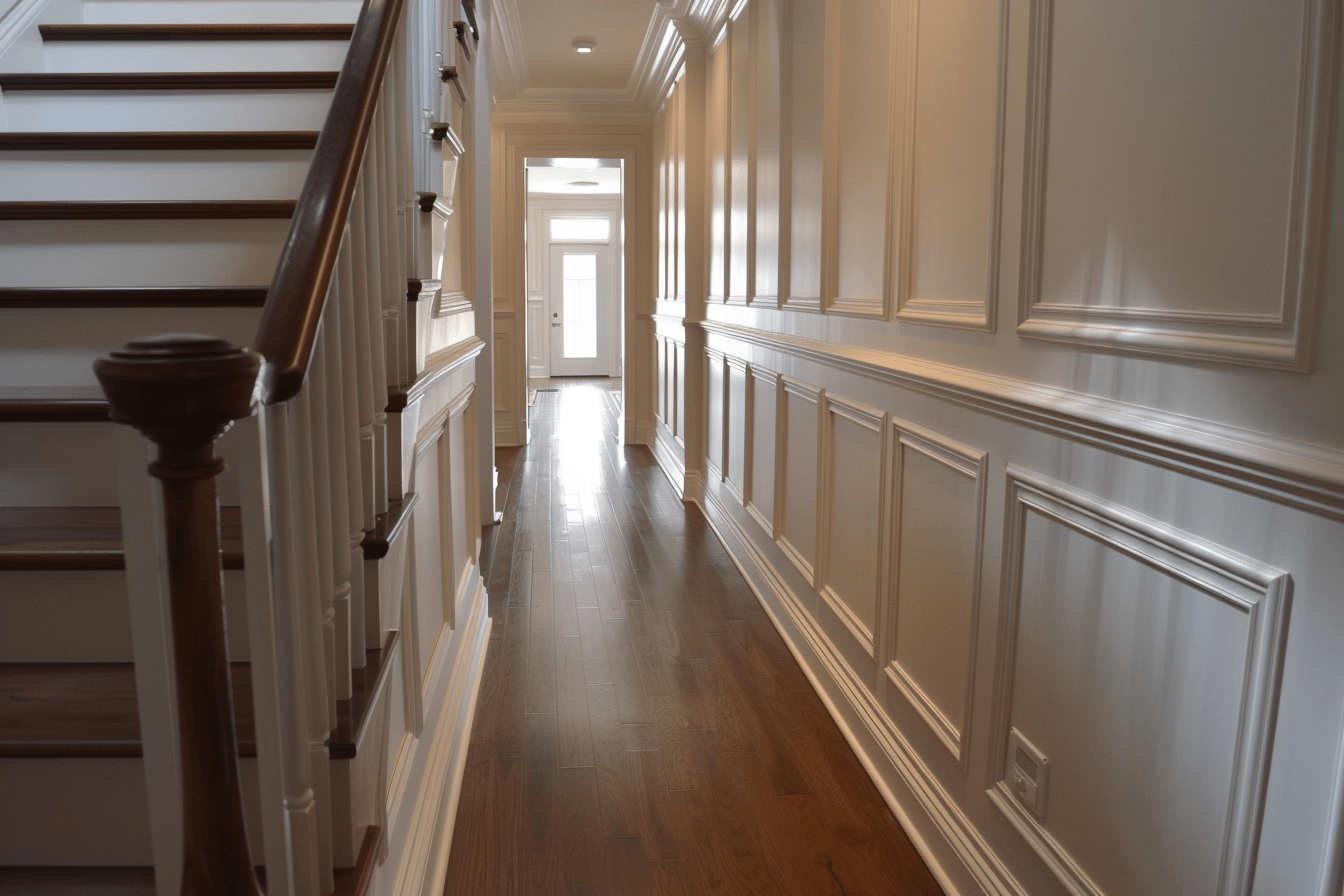
Wainscoting: Injects a touch of elegance and sophistication, giving the area a polished feel. Plus, it’s fantastic for shielding walls in heavily-used spaces.
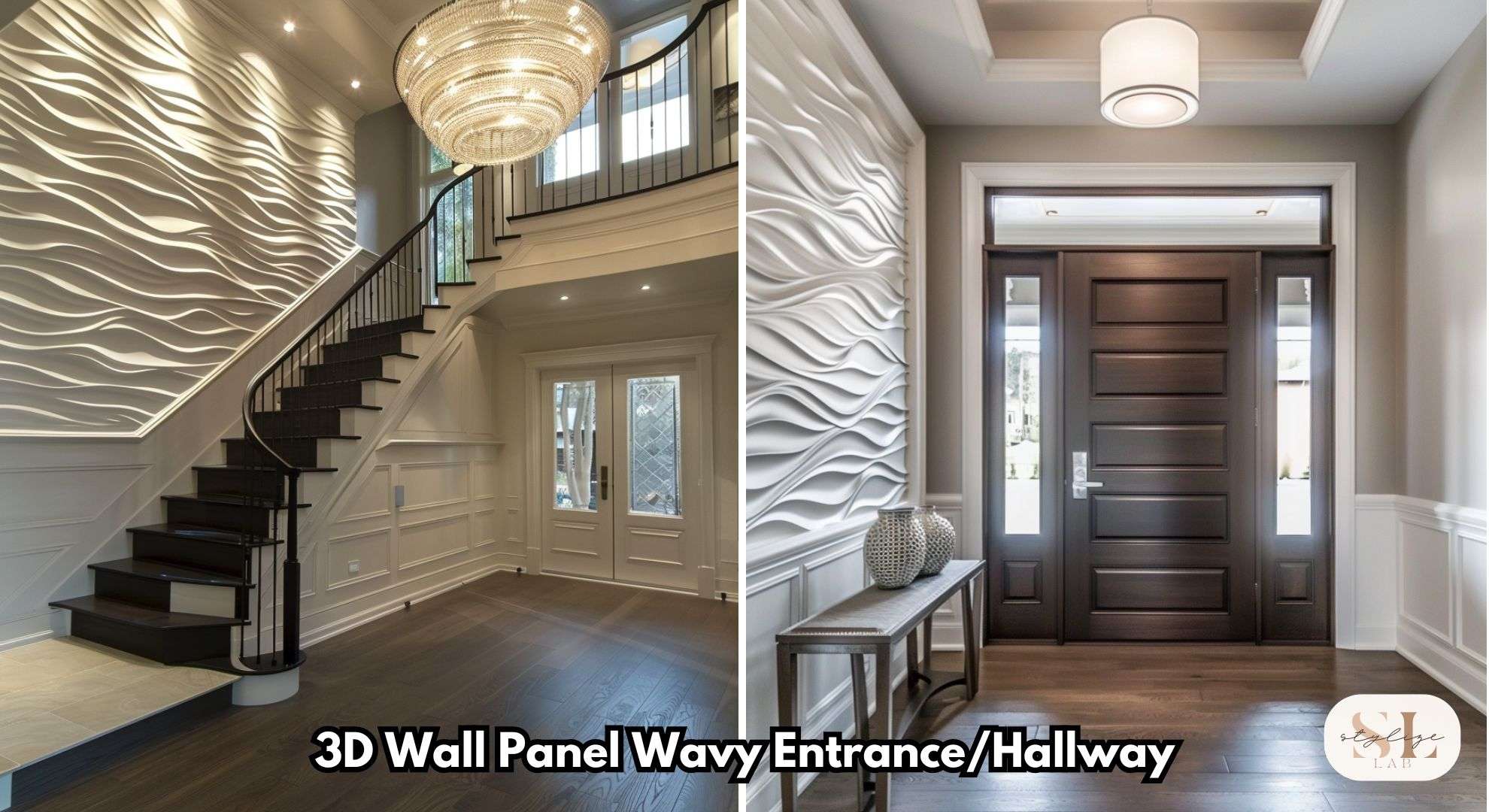
Feature Wall: Design a bold entrance with a fully paneled wall using elements such as reclaimed wood, shiplap, or 3D panels.
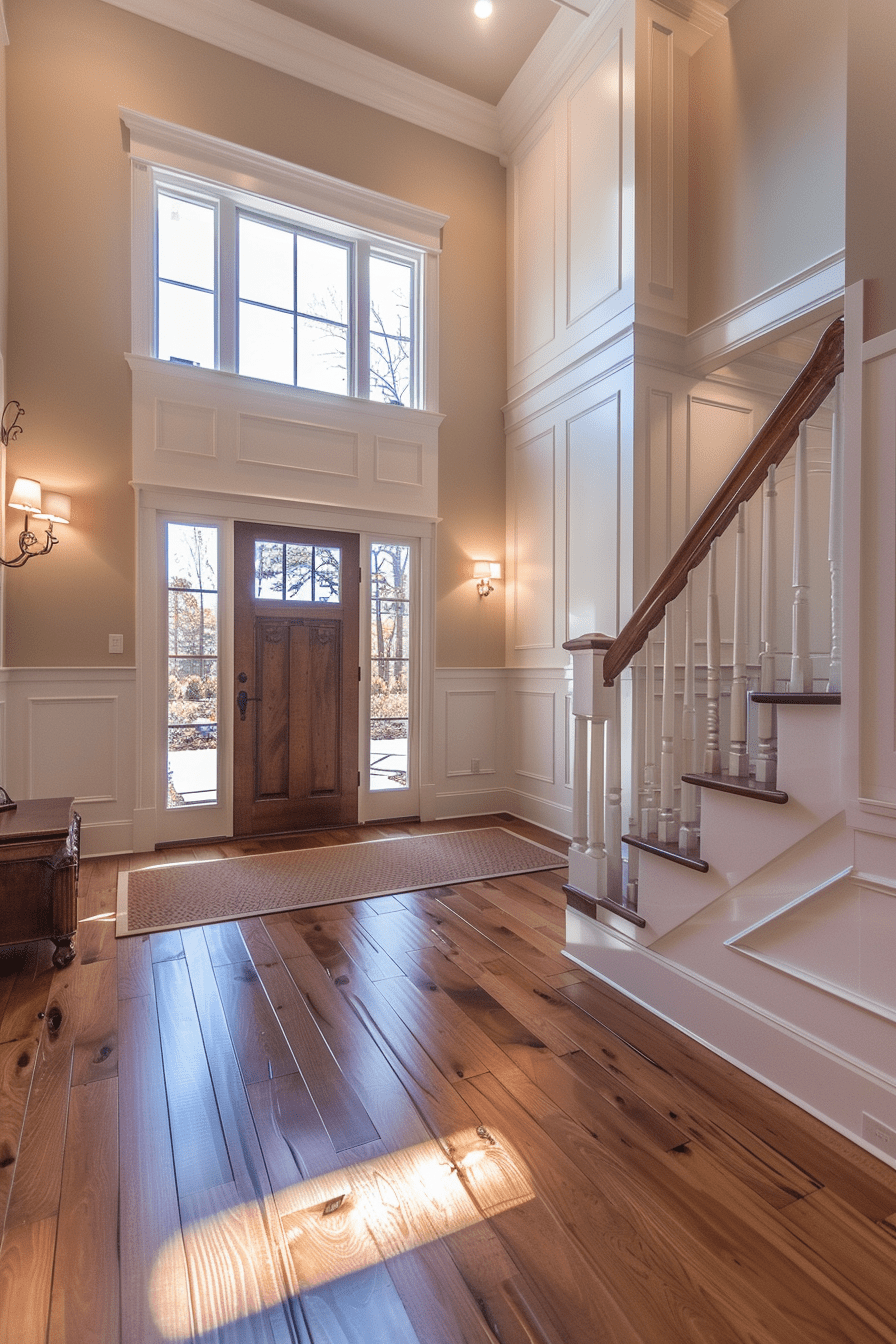
Budget Considerations
From budget choices to luxury options, no matter what kind of wall paneling you’re considering, you can find something to fit your needs.
Cost of Materials: A Breakdown of Inexpensive to Premium Options
Inexpensive Options
MDF (Medium-Density Fiberboard):
- Cost: Generally ranges from $0.50 to $3.00 per square foot.
- Benefits: Affordable, versatile, and easy to paint.
- Drawbacks: Less durable, not suitable for high-moisture areas without proper sealing.
PVC (Polyvinyl Chloride):
- Cost: Around $1.00 to $3.00 per square foot.
- Benefits: Moisture-resistant and low maintenance, ideal for bathrooms and kitchens.
- Drawbacks: Can look less authentic compared to natural materials.
Beadboard:
- Cost: Typically costs between $1.00 and $3.00 per square foot.
- Benefits: Adds vintage charm and is fairly easy to install.
- Drawbacks: May require painting or sealing, especially in moisture-prone areas.
Mid-Range Options
T&G (Tongue and Groove):
- Cost: Usually costs around $2.00 to $5.00 per square foot.
- Benefits: Provides a seamless finish, can be painted or stained.
- Drawbacks: Requires careful installation to ensure proper fit.
Shiplap:
- Cost: Ranges from $2.00 to $7.00 per square foot.
- Benefits: Popular for its rustic charm and versatility.
- Drawbacks: Needs proper treatment for high-moisture areas.
Premium Options
Solid Wood (Oak, Pine, Reclaimed Wood):
- Cost: Typically ranges from $3.00 to $12.00 or more per square foot, depending on the type.
- Benefits: Timeless, durable, and can significantly enhance the home’s appeal.
- Drawbacks: More expensive, may require regular maintenance.
3D Panels:
- Cost: Generally costs between $6.00 and $20.00 per square foot.
- Benefits: Adds depth and texture, available in various designs.
- Drawbacks: Higher cost and may require professional installation.
High-End Options
Metal Panels:
- Cost: Can range from $10.00 to $30.00 per square foot or more.
- Benefits: Sleek, modern, and extremely durable.
- Drawbacks: Expensive and can be challenging to install.
Fabric Panels:
- Cost: Often ranges from $15.00 to $40.00 per square foot.
- Benefits: Luxurious and offers excellent sound insulation.
- Drawbacks: High cost and requires regular maintenance to keep clean.

